- Tourist Visa
- Student Visa
- Volunteer Visa
- Business Visa
- Family Visa
- Retirement Visa
- Religious Visa
- Digital Nomad Visa
- Public Holidays & Festivals
- Politics of Peru

Peruvian Economy
- Weather & Climate in Peru
- Important Facts & Figures - Peru
- Cultural Centers
- International Parishes & Churches
- Casinos & Gambling
- Customs Regulations & Info
- How many days did I get?
- Tourist Visa extension in Peru
- Peruvian Overstay Fine
- International Document for Antecedentes Peru
- Paying Administration Charges
- Permit to Sign Contracts
- Interpol - Ficha de Canje
- Travel Permit
Subsanacion - Submitting documents
- Extending a Migraciones deadline
- Residence visa extension
- Renewal Carné de Extranjería
- Update Migraciones information
- Carné replacement
- Marrying in Peru
- Driver's License in Peru
- Police Clearance Certificate Peru
- Travel Authorization for Minors
- Finding a Job in Peru
- Domestic Workers in Peru
- Labor Regulations Peru
- Air Passenger Rights
- How Dangerous is Peru?
- Appearance & Behavior
- Money & Credit Cards
- Tips for your Journey
- Taking a Taxi
- Health & Medical Care
- Earthquakes in Peru
- Drugs & Illegal Substances
- Meeting the Opposite Sex
- Woman Traveling Alone
- Cybersecurity Basics
- Crime & Safety Report
- Arts, Crafts & Souvenirs
- Malls & Commercial Centers
- Supermarkets
- Markets - Mercados
- Department Stores
- Shopping Peruvian Way
- Post, Cellphones, Wifi, Internet...
- Courier & Mail Services
- Radio Stations
- Television Stations
- Business Information
- Chambers of Commerce
- Peruvian Ministries
- Institutions & Associations
- Earthquakes
- Emergency Numbers
- Ambulances & Services
- Pharmacies & Medicine
- Homeopathic & Alternative Medicine
- International Hospitals
- Supporting Institutions
- National Symbols of Peru
- Political History of Peru
- Peruvian Legends, Myths & Tales
- Gods, Spirits, Deities & Worshipping
- Personalities & Founders
- Peruvian Archaeology
- International Schools
- Top Universities
- Glossary of Terms
- Lima International Airport
- Important Facts & Figures - Lima
- Population Development in Lima
- Weather & Climate in Lima
- Begging & Beggars in Lima
- Lima History
- Huacas (Adobe Pyramids)
- Historical Buildings
- Plazas (City Squares)
- Historical Churches & Convents
- Citytours & Sightseeing
- Cinemas & Cineclubs
- Parks & Gardens
- Lima for Kids
- Districts of Lima
- Embassies & Consulates
- Tourist Attractions & Sights
- Travel Information
- Long Distances Buses
- National Peruvian Airlines
- Starter & Appetizer
- Main Courses
- Salsas, Sauces & Dips
- Drinks & Beverages
- Peruvian Cheese
- Aji - Chili Peppers
- Grains, Coffee, Beans & Nuts
- Common Herbs
- Other Ingredients
- Distinguish Real & Fake Money
- Monetary Systems of Peru
- Handling Money in Peru
- ATMs, Credit Cards & Travelers Cheques
- Changing Money in Peru
- Tipping in Peru
- Money Transfers - Peru
- Current Peruvian Banknotes
- Current Peruvian Coins
- Wealth and Pride Coin Series
- Natural Resources Coin Series
- Threatened Wildlife Coin Series
- Builders of the Republic Coin Series
- Woman in Process of Independence Coins
- Banks & Banking
- Old Banknotes
- Books & Documents
- Videos, Clips & Documentaries
- Laws, Norms, Legal Codes & Decrees

- Legal Stuff
- Covid entry requirements and regulations for Peru
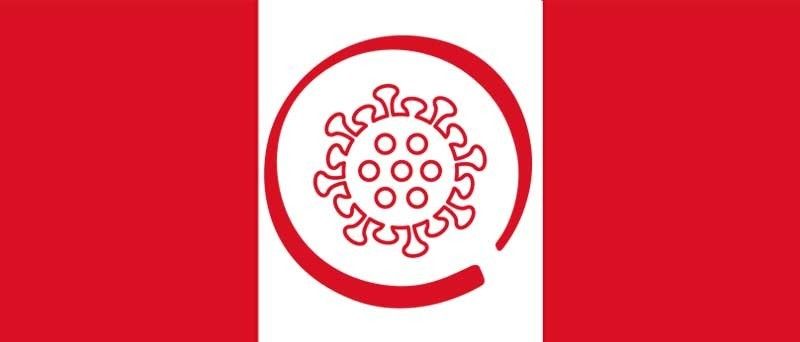
After over two years of strict Covid regulations to enter and move around Peru, finally at the beginning of October 2022 the Corona rules were significantly eased, making traveling to and in Peru not only simpler but also more relaxed again. And yesterday, October 26, 2022, we were all surprised to hear that finally the state of emergency is lifted.
Important Update October 27, 2022 - No more restrictions to travel to and in Peru
Today, October 27, 2022, it was made official with the publication of the Supreme Decree 130-2022-PCM in Peru's official gazette El Peruano that starting November 1, 2022, the State of Emergency in Peru is finally lifted and all (!!!) Covid entry requirements as well as all other regulations, and restrictions that were in place to avoid the spreading of Covid are repealed.
So, no more proof of a vaccination certificate or negative PCR test (even though the public is encouraged to get vaccinated), no more masks anywhere (even though the public is encouraged to wear one) and no more national provisions of any kind.
However, on ministerial level prevention and control measures to stop the spread of Covid remain in place and, if and where necessary, the Peruvian Ministry of Health will publish Ministerial Resolutions stipulating necessary measures.
So, finally, after well over two years, traveling to and in Peru is back to "normal" again.
The Covid situation in Peru until October 31, 2022
When the first Covid cases were confirmed in Peru in mid-March 2020, the government reacted with extreme measures closing all borders within a couple of days, suspending all international and national travel by air, land, sea and river, shutting down the country completely and sending everyone into lockdown, and this for months. In October 2020, these extremely extreme measures were (partly) lifted and traveling to Peru by air and in Peru by air and land was possible again. However, the Peruvian government put one of the strictest Covid regimes in Latin America in place and entering and traveling in Peru was only possible under strict and constantly changing rules which included next to many others, for example, compulsory vaccinations, mandatory masks everywhere and anytime, outlawing unvaccinated Peruvians, residents and foreigners. Only in February 2022, land borders were opened again.
While since mid-2022 the Covid regulations were increasingly handled more relaxed and most businesses didn’t strictly enforce the rules anymore, with an announcement from the Peruvian Minister of Health in September 2022 and an update of the Covid regulations some of the unpleasant and outdated Covid rules (for example, mandatory health declaration to enter Peru, mask mandates, checking of vaccine certificates to enter indoor spaces) were officially eliminated or at least eased.
However, be aware that Peru is still in a state of emergency (for now, at least until the end of October 2022) and the national health emergency was already extended until the end of November 2022. Additionally, it was announced that prevention and control measures to stop the spread of Covid remain in place until February 24, 2023. And usually every four to eight weeks, the Peruvian government updates the Covid regulations either only extending the state of emergency and the national health emergency for another month or changing entry requirements and rules for getting around the country.
Furthermore, depending on case numbers and hospital utilization, different alert levels - ranging from moderate to high to very high and extreme - with corresponding public health measures and movement restrictions - are still in place on the regional level and are re-evaluated every few weeks.
And Peru still requires that foreign visitors present a physical or digital vaccination certificate (depending on the regulations in your home country proving two or three shots against Covid) or present a negative PCR test result to enter Peru.
But be aware that regardless of the official Peruvian requirements to enter the country, to travel in Peru and to use services in Peru, the one or other airline flying you into Peru, some national airlines, a few long-distance bus companies, the one or other tour operator, ... might still ask to see proof of three doses of a vaccine against Covid to let you use their services. If you are only vaccinated twice, a negative PCR test may be required.
So, to enjoy your stay in Peru and avoid any problems, especially with airlines flying you into Peru, with entering the country and traveling, it is recommended to be vaccinated with three doses. If you are only vaccinated twice and this is ok in your home country, we recommend getting in contact with the service providers you are planning to use (especially international and national airlines or national bus companies) to check if they are fine with your vaccination status, require a third dose or a negative PCR test.
Covid entry requirements for Peru until October 31, 2022
For international passengers on commercial flights and travelers crossing into Peru at a land border, Peru requires the following (October 12, 2022):
- Peruvians and foreign residents 12 years and older must present a vaccination certificate proving they had 3 doses of a vaccine against Covid (see Supreme Decree 118-2022-PCM , article 4.3).
- Non-resident foreigners (visitors) must present proof of being vaccinated according to the “vaccination scheme” of their home country (see Supreme Decree 118-2022-PCM , article 4.3).
- Those not vaccinated according to the above rules can present a negative real-time COVID-19 molecular (RT-PCR) test result that is not older than 48 hours after being issued and before boarding the plane (see Supreme Decree 118-2022-PCM , article 4.3).
- Children under the age of 12 years just have to be healthy (asymptomatic) - we highly recommend checking if the airline requests any document / test result to prove that the child is healthy (see Supreme Decree 118-2022-PCM , article 4.3).
- If you show Covid symptoms upon arrival, you can be forced to take a Covid test and will be put into quarantine, no matter your vaccination status.
- Pre-registration on the immigration app prior to arrival (optional (!!!) and only for travelers flying into Peru)
- Since October 12, 2022 travelers do not need to fill in the Affidavit of health anymore (Ministerial Resolution 811-2022-MINSA)
- Even though not specifically mentioned in the current Covid regulations ( Supreme Decree 118-2022-PCM ) from September 30, 2022, but announced by the Peruvian Minister of Health on September 22, 2022, the mask mandate on domestic and international flights and indoor spaces with ventilation (which the airport should be) finally is history.
Above requirements may change at any time, so we highly recommend contacting your airline a few days before your flight to Peru.
Covid regulations when traveling in Peru until October 31, 2022
Peru surely is one of the most amazing countries to visit: breathtaking landscapes, diverse and partly untouched nature, ancient cultures with all the impressive monuments they left us, lovely and inviting people and an incomparable gastronomy.
However, Covid hit Peru hard and despite partly extreme strict measures to get the pandemic under control, many people got infected and lots died over the past two and a half years. And despite high vaccination rates, the Peruvian government stuck way too long to certain restrictions and regulations which finally were eased a bit at the beginning of October 2022.
While mostly vaccination certificates aren't checked anymore (not in supermarkets, malls, restaurants, hotels, etc.) making it possible again and enjoyable to travel to Peru even if you are unvaccinated, if you don't want to make a PCR test to enter Peru, to fly domestically and to travel completely unhindered best have at least your first and second dose of a Covid vaccine. And, even though not legally required for tourists just for Peruvian residents and even though the situation relaxed quite a bit over the past months, if you are older than 12 years, the one or other airline, restaurant, tour operator, mall, other private company, etc. might still want to see proof of three shots.
So, if you are planning to visit Peru, here some general information about the most important regulations and some recommendations:
- It's obligatory to wear a single KN95 / FFP2 mask or double masks (a community mask (cloth) above a three-layer surgical mask) in indoor spaces without ventilation, in hospitals and health centers, and on busses ( Supreme Decree 118-2022-PCM , article 4.1).
- Wearing a mask outdoors and in indoor spaces with ventilation is optional ( Supreme Decree 118-2022-PCM , article 4.1).
- In case you suffer from any respiratory symptoms, wearing a single KN95 / FFP2 mask or double masks (a community mask (cloth) above a three-layer surgical mask) is obligatory ( Supreme Decree 108-2022-PCM , article 4.1).
- According to the official regulations, face shields aren't obligatory anymore.
- On national flights, resident passengers over the age of 12 years must have received 3 shots of a vaccine against Covid (foreigners just visiting aren't mentioned, but some national airlines apply the 3 shot rule to them as well). If you haven't received the 3 doses, a negative real-time COVID-19 molecular ( RT-PCR ) test result that is not older than 48 hours after being issued and before boarding the plane has to be presented (see Supreme Decree 108-2022-PCM , article 4.4). Children under the age of 12 years just have to be healthy (asymptomatic). Masks are obligatory.
- On intercity / interprovincial busses , resident passengers over the age of 12 years must have received 3 shots of a vaccine against Covid (foreigners just visiting aren't mentioned, but some national bus companies apply the 3 shot rule to them as well). If you haven't received the 3 doses, a negative real-time COVID-19 molecular (RT-PCR) test result that is not older than 48 hours after being issued and before boarding the bus has to be presented (see Supreme Decree 108-2022-PCM , article 4.5). Children under the age of 12 years just have to be healthy (asymptomatic). Masks are obligatory.
- Residents of Peru over the age of 18 years wanting to enter indoor spaces must permanently wear a mask and must prove that they had their first, second and third shot. (see Supreme Decree 108-2022-PCM , article 4.6) Please note: Even though not specifically mentioned in the current regulations (Supreme Decree 118-2022-IN) if the indoor space is ventilated no masks are required anymore and most of these indoor spaces do not check the vaccination certificate anymore.
- In most other places , including, for example, archaeological sites, parks, beaches, rivers, lagoons, swimming pools, sport stadiums, etc. everyone over 5 years must present their vaccination certificate proving 2 shots , everyone older than 18 years 3 shots (see Supreme Decree 108-2022-PCM , article 5). Please note: Even though not specifically mentioned in the current regulations (Supreme Decree 118-2022-IN) most of these places do not check the vaccination certificate anymore.
- In October 2020, immigration officers at the airport stopped the stamping of passports upon arrival and departure to minimize the risk of spreading Covid-19. While travelers didn't have a physical stamp in their passport, their arrival and departure was and still is digitally recorded (see our glossary under TAM and our article " How many days did I get "). In May 2022, the stamping of passports was resumed and you get a passport stamp again.
- Follow official regulations and respect restrictions. Fines are costly.
- Respect safety and security protocols and hygiene measures in places you visit and follow the instructions of tourism professionals, guides, drivers, hotel staff, etc.
- If you need a PCR or antigen test, many hotels and other accommodation providers in Peru either offer this service at their own implemented facilities or can advise and / or coordinate an appointment with a laboratory or clinic nearby. You can as well make the test at the Jorge Chavez International Airport (be aware that PCR test results usually take between 6 and 12 hours).
- Make sure you have a good travel insurance that provides medical coverage not only for injury and illness during your travel in Peru but also for the treatment of Covid and a possible repatriation.
Stay safe and healthy!
- 77 Comments
- Subscribe Unsubscribe
- Collapse All Expand All
or post as a guest
Peru Newsflash

New lizard species discovered in Peru

Peru has the second-worst drivers in the world

Machu Picchu reopens for the first time after the social outbreak

Peru extends the state of emergency in 44 districts
Peru event calendar, upcoming events in peru.
More in the Peru Event & Entertainment Calendar
Latest Content...

International Christian School of Lima - ICS Lima

Peruvian Digital Nomad Visa

Legislative Decree No. 1582 (Modification of the Peruvian Foreigner Law, Nov 2023)

Queso Rojo de Lluta

Peruvian Queso Andino

Peruvian Quesillo

Peruvian Queso Mantecoso

Peruvian Queso Paria

Peruvian Queso Fresco

Extension of a Migraciones deadline

Amnesty for Migraciones fines

Update your information in the Migraciones database

Replacement for a lost, stolen or damaged carné

Renewal of the Carné de Extranjería
Latest video.

Maria Reiche - Memories
Long reads....

The Mystery of the Nazca Lines in Peru

Francisco Pizarro González (1474-1541)

The colorful Fabrics and Textiles of Peru

The Jeweled Frog and the Condor

lima·easy - /ˈli mə/ - /ˈi zi/
In loving memory of "Jack" & "Lola"
- +51 984 004 472
- Machu Picchu, Cusco, Perú
- Mon-Sat: 10 AM – 5 PM
Peru Travel Advisory Updated 2023
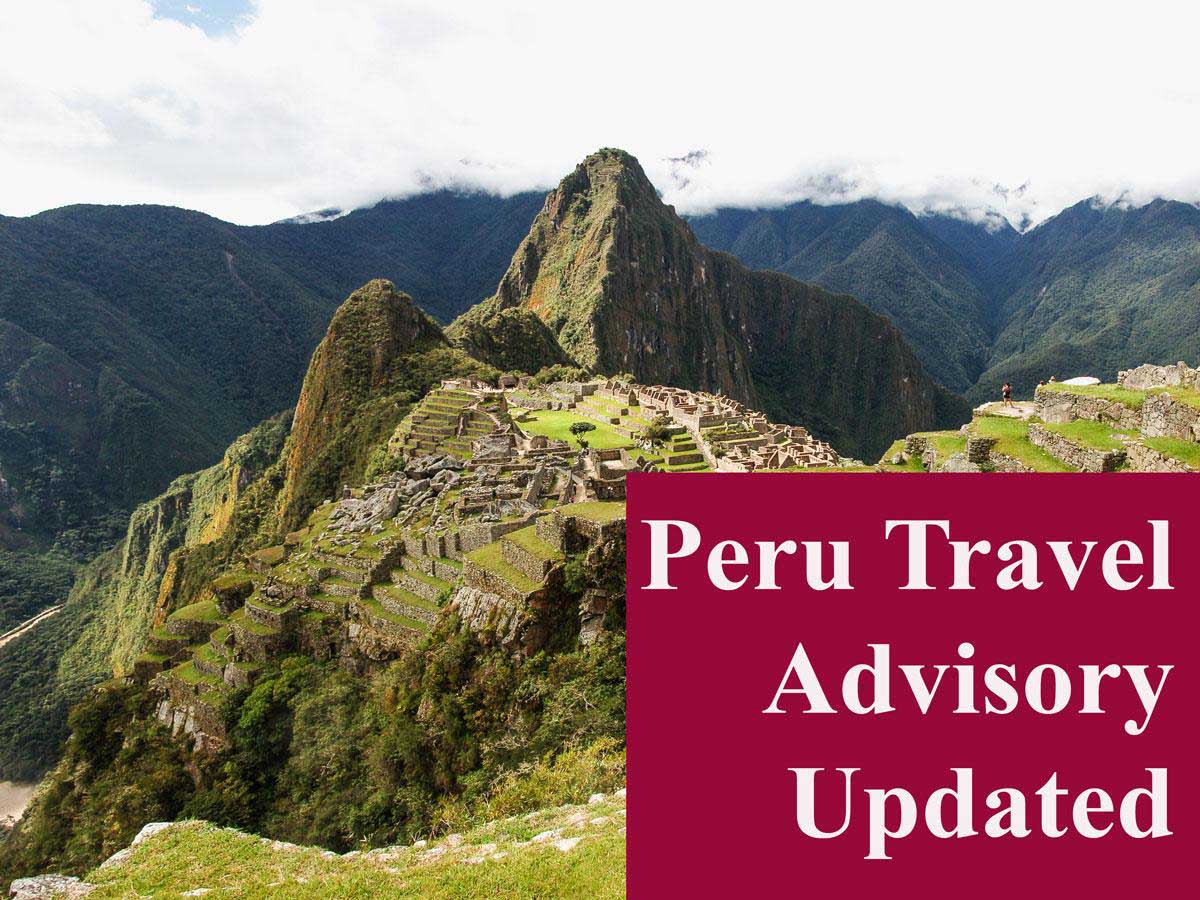
Peru’s historical legacy is long and rich that stretches back to ancient cultures like Caral (3,000 BC) and extended until the reign of the Inca Empire (1,200AC). All Peru ethnic groups’ cultures and traditions make South America’s third-largest country a bucket list staple. There is a world of experiences beyond the ancient to discover in the Peruvian territory. Sunbathe and surf on the Pacific Ocean beaches; take a tour of historic pre-Inca, Inca structures, and Spanish colonial towns. Soar the Andean blue sky via zip line through the canopy of the world’s largest rainforest, covering nearly half of the country, trek the Peruvian highland trails below the cloud-topped Andean mountains, the second largest continental range in the world, discover the mysterious Nazca lines, sail on the highest navigable lake in the world Titicaca. Today all these destinations are reopened with a total capacity but with new rules such as 2023 Machu Picchu rules .
Today all travelers are asking “ Is it safe and secure to visit Peru ”. Is it possible to visit Machu Pichu?
Peru is a safe travel destination now ! Things have gone back to normal after the Covid pandemic, as the Peruvian government took a number of health safety measures and most of us were vaccinated, and then we just experienced social unrest with a lot of strikes which finally stopped so now Peru is a safe tourist destination and all tourist attractions are operating at 100% capacity.
RELATED: DO YOU NEED A VISA TO TRAVEL TO PERU ?
PERU TRAVEL: Table of Contents
- Peru Travel Restictions (Updated)
- Peru "Safe Travels" by WTTC
- Coronavirus in Peru
Health and Safety Protocols to Visit Machu Picchu after Covid-19
- Inca Trail and Machu Picchu Cancellation Policy
Ministerio de Cultura
Perurail & inca rail train tickets, was it safe to visit machu picchu during the coronavirus, coronavirus - world health organization.
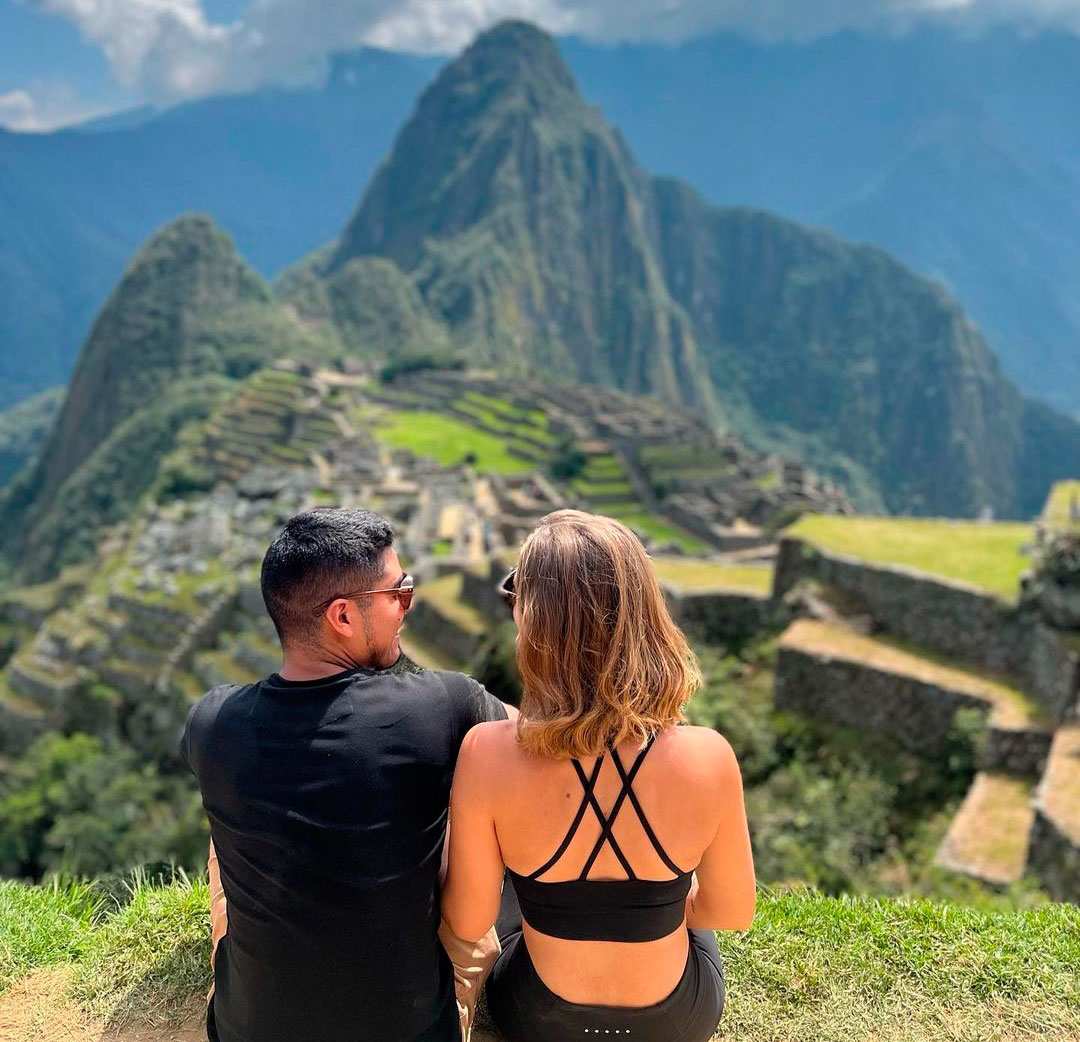
RELATED: PERU TRAVEL INSURANCE
Peru Travel Restrictions
Please find below the Peru Travel restrictions . Every month the Peruvian government decrees new safety measures for traveling in Peru:
The latest, at a glance (Updated March, 8 2023)
- Peru has gone back to normal after the social unrest and is now a safe country to travel throughout all its regions, coastal region, Andean region, and jungle region. All roads blockage were clear, domestic flights and public transportation are operating 100%,
Updated February, 16 2023
Due to sometimes violent protests and road blockades in various parts of the country, it is recommended to refrain from non-essential travel within Peru for the time being. On February 14, 2023, the government extended the state of emergency for Lima, Callao, the Panamericana Sur, Panamericana Norte, Central highways and the Apurimac-Cusco-Arequipa Sur and Intaroceania Sur roads by a further 30 days.
The state of emergency for Cusco, Puno, Apurimac, Tacna and Madre de Dios was extended for another 60 days on February 5th, 2023.
The international airport in Lima/Callao is operational, but strict access controls are enforced (access only with a valid flight ticket).
Updated January, 20 2023
Recent political developments have provoked ongoing social unrest in many parts of the country, with demonstrations, road blockades and confrontations with the security forces, often escalating into violent riots, which have already resulted in numerous deaths and injuries. In particular, regions in which Peru's main tourist attractions are located are affected. The feasibility of tourist activities in, around and between Arequipa, Puno (Lake Titicaca), Puerto Maldonado, Cusco (including the Sacred Valley and Machu Picchu), Ayacucho as well as Tarapoto and Cajamarca is not guaranteed. It is also to be expected that shops and service providers will remain closed on a daily basis and public transport will be temporarily suspended in the locations currently affected. Travel in these areas can be associated with lengthy delays, severe restrictions and significant risks to health and life. Over a period of several days, it is difficult to foresee at which exact locations and routes such acute hindrances and hazards will occur. Airports in the interior of Peru can also be temporarily closed so that a quick exit cannot always be guaranteed.
Updated July, 9 2022
- All travelers entering the country must complete the following sworn statement ( Affidavit of Health and Geolocation Authorization ).
Peruvians and resident foreigners aged 18 years and older, must show, before boarding the plane, their COVID-19 vaccination card with the three doses applied in Peru or abroad.
Likewise, people aged 12-17 years, must show, before boarding the plane, their COVID-19 vaccination card with the first and second doses applied in Peru or abroad, otherwise, they must show a negative molecular test issued up to 48 hours before boarding. Children under 12 years old are only required to be asymptomatic to board.
- Non-resident foreigners, must show, before boarding the plane, their COVID-19 vaccination card, according to the vaccination schedule of their country of origin.
For domestic flights and interprovincial land travel, passengers over 12 years old, residents and non-residents will show before boarding their COVID-19 vaccination card with the first and second doses applied in Peru or abroad, and the booster for those over 18 years old residing in Peru and who are qualified to receive it according to current protocol. Otherwise, they must show a negative molecular test issued up to 48 hours before boarding.
Children under 12 years old are only required to be asymptomatic to board.
- For entrance to enclosed spaces, those over 18 years old residing in Peru shall show their COVID-19 vaccination card with the three doses applied in Peru or abroad, only if they are qualified to receive it according to current protocol.
- It is mandatory to wear a KN95 mask or, in replacement, a three-fold surgical mask and, on top of it, a cloth mask, to circulate on public roads and in closed places.
- In regions with 80% vaccination coverage against COVID-19 of people aged 60 years and over with 3 doses and 80% vaccination coverage against COVID-19 of people aged 12 years and over with 2 doses, the use of masks in open spaces is optional, provided that physical or bodily distancing is guaranteed, measures that could be modified according to the epidemiological context.
- It is important to constantly wash hands, avoid crowds and maintain social distance.
RELATED: GUIDELINE FOR TRAVELING TO PERU
Updated January, 31 2021
- All travelers 12 years and older entering the country must show their COVID-19 vaccination card with the completed dose. Otherwise, they must show a negative molecular test issued up to 48 hours prior to boarding. Children under 12 years old are only required to be asymptomatic to board.
- For domestic flights, passengers over 12 years old, will only be able to board if they prove to be fully vaccinated, either in Peru or abroad. Those over 40 years old will need to accredit the booster dose, otherwise they must show a negative molecular test issued up to 48 hours prior to boarding.
- The use of face shields is no longer required to board domestic and international flights
- For interprovincial land transportation, passengers over 18 years old, will only be able to board if they prove to be fully vaccinated, either in Peru or abroad. Those over 40 years old will need to accredit the booster dose, otherwise they must show a negative molecular test issued up to 48 hours prior to boarding.
- For enclosed places, visitors over 18 years old, whether Peruvian or foreign, will only be able to enter if they prove to be fully vaccinated, either in Peru or abroad. Those over 40 years old will need to accredit the booster dose.
- It is mandatory to wear a KN95 mask or, in its replacement, a three-fold surgical mask with a fabric mask over it to circulate on public spaces and in enclosed places.
- It is important to wash hands constantly, avoid crowds and keep social distance
- These measures will be in force from January 31, 2022 to February 13, 2022, according to SUPREME DECREE No. 010-2022-PCM
Updated November, 29 2021
- All travelers entering the country must complete an affidavit.
- Before boarding the plane, all travelers 12 years of age or older must show a vaccination card with the required doses completed up to 14 days before the flight. Otherwise, those travelers must show a negative molecular test issued up to 72 hours before boarding. Children under twelve only need to be asymptomatic to board.
- European tourists who land in Lima (with the exception of the United Kingdom) are allowed to re-enter!
- European airlines are now allowed to fly to the international airport in Lima again (exception: United Kingdom)
- Every tourist entering Peru must undergo an antigen test. The test is made available at the airport and the result is available after 30 to 60 minutes. The tourist bears the costs.
- If the result is NEGATIVE, the tourist can drive straight to his hotel as planned.
- If the result is positive, a quarantine will be ordered.
- The entry of non-resident passengers from South Africa or who have made a stopover in said country in the last 14 days is suspended until December 12.
- Quarantine time is canceled for travelers entering the country with the exception of Peruvians and foreign residents from South Africa or anyone who have made a stopover in that country, who must carry out a mandatory quarantine at their home, accommodation or other temporary isolation center for 14 days counting from the day of arrival in Peru.
- The use of a face shield is no longer required to board national or international flights.
- Moderate alert level : Free circulation hours are from 04:00 am to 02:00 am of the next day
- High alert level : Free circulation hours are from 04:00 am to 11:00 pm.
- Before boarding buses, all passengers ages 45 or older must show a vaccination card with the completed required doses. Otherwise, they will not be able to travel.
- The use of a KN95 face mask is mandatory throughout the country or, instead, the use of double masking with a 3-layer surgical mask along with a cloth mask in closed places.
- The population is reminded constantly of the importance of hand washing, avoiding crowds and maintaining social distance
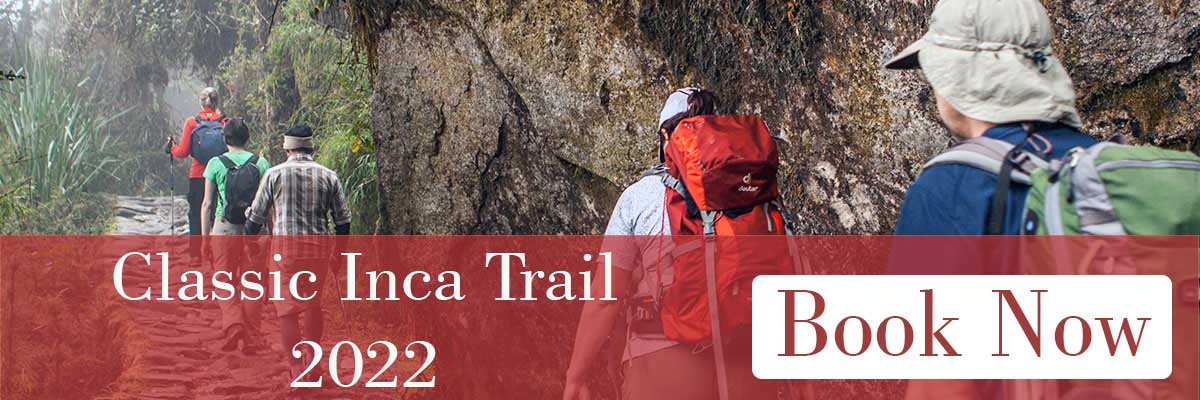
Updated August 10, 2021
The Peruvian government issued a state of emergency and closed the borders and cities immediately when the virus appeared. President Vizcarra declared a quarantine effect from 1 6 March until 30 September 2020. During this time, neither Peruvians nor foreigners could move on the streets. Also, he issued an updated travel advisory allowing flights to only repatriate Peruvians and return foreigners to their home countries. During the first week of October 2020, all Peruvian borders reopen! .
From 1 March, 2021, all Peru movement restrictions have been lifted to visit tourist attractions operating at 40% capacity
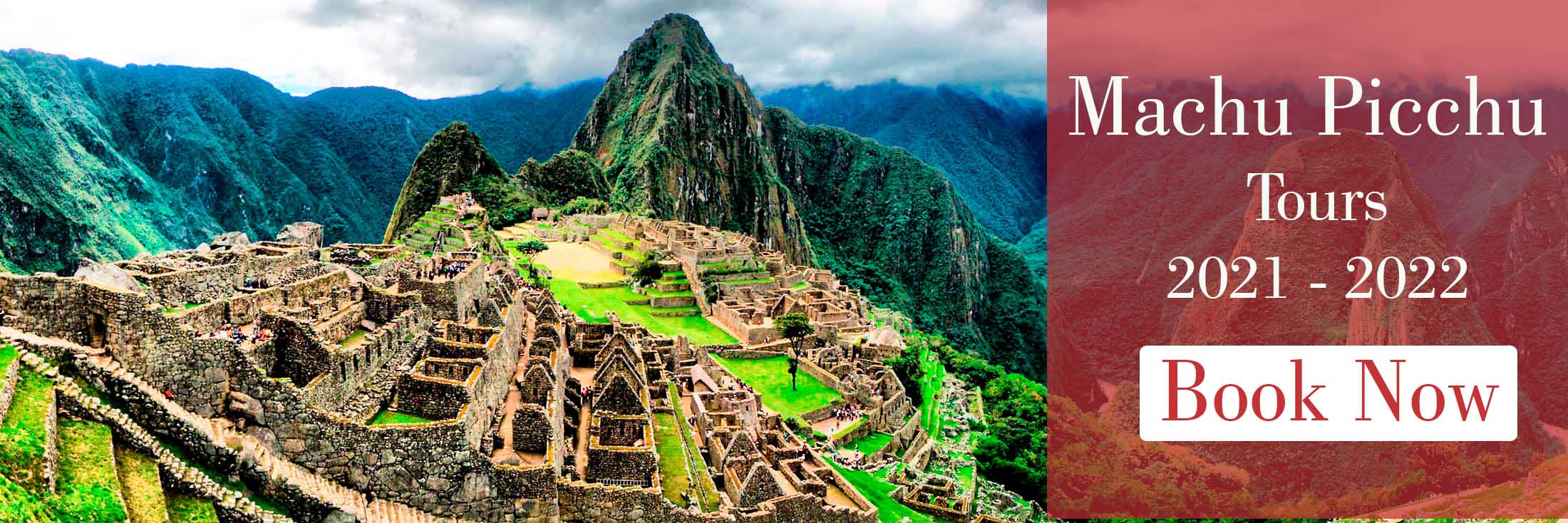
Promperu (a state agency in charge of the promotion of Peru) and MINCETUR (the Ministry of Foreign Trade and Tourism) declared about the tourism problems of the country. All local tour operators, travel agencies, hotels, Tour Guides, etc. were stopped due to the pandemic. The MINCETUR overseed the implementation of health and safety protocols in Cusco and Lima . It was to reactivate tourism in the months following the quarantine.
- Travelers entering the country must fill out a sworn statement ( Affidavit of Health and Geolocation Authorization ) and also provide the following before boarding the plane: a negative PCR test issued up to 72 hours before boarding or a negative antigen test issued up to 24 hours before boarding.
- The entry of non-resident passengers from South Africa, Brazil and / or India or anyone who have made a stopover in said countries in the last 14 days is suspended until August 22.
- Quarantine is canceled for travelers entering the country with the exception of Peruvians and foreigners residing from South Africa, Brazil and / or India or anyone who have made a stopover in those countries, who must carry out a mandatory quarantine at their home, accommodation or other temporary isolation center for 14 days from arrival in Peru.
Moderate alert level : Circulation hours are from 04:00 to 00:00.
High alert level : Circulation hours are from 04:00 to 00:00.
Very High alert level : Circulation hours are from 04:00 to 22:00 with vehicle restriction on Sundays.
- The use of a mask is mandatory throughout the country, as well as the use of double masks in closed places, such as airports, shopping centers, banks, supermarkets, among others.
- The population is reminded of constant hand washing, avoiding crowds and maintaining social distance.
Updated June 4, 2021
The Peruvian Government declared the National State of Emergency to control COVID19. Therefore, the Ministry of Foreign Trade and Tourism (MINCETUR) and the Commission for the Promotion of Peruvian Exports and Tourism (PROMPERU) announce the following:
- Travelers entering the country must fill out a sworn statement and also provide the following before boarding the plane: a negative molecular test (PCR), a negative antigen test or a medical certificate of epidemiological discharge. PCR or antigen test results must be obtained no later than 72 hours prior to check-in.
- The entrance of non-resident passengers from India, South Africa and/or Brazil, or who have made a stopover in such countries in the last 14 days, is suspended until May 30.
- Quarantine is not required any more for travelers entering the country, except for Peruvians and foreign residents from South Africa, Brazil and/or India or who have made a layover in those countries, they must mandatorily quarantine at their home, accommodation or other temporary isolation center for a period of fourteen 14 days from the date of arrival in Peru.
- The only requirement for domestic air travel is the signature of a sworn statement indicating that the traveler does not have symptoms of COVID-19.
- The use of masks to move around the country is mandatory, however, the Ministry of Health of Peru recommends double masking as a preventive measure.
- The use of face shields and double masking is mandatory when going to shopping malls, galleries, department stores, markets, supermarkets, stores and drugstores throughout the country.
- We remind the population to frequently wash their hands and keep social distancing.
- Moderate alert level : The movement of people schedule is from 04:00 h to 23:00 h. Vehicles will be able to run from Monday to Sunday in the region of Loreto (Maynas, Alto Amazonas, Loreto, Mariscal Ramón Castilla, Requena, Ucayali, Datem del Marañón and Putumayo)
- High alert level : The movement of people schedule is from 04:00 h to 22:00 h, with vehicle restriction on Sundays in the region of Ucayali (Coronel Portillo, Atalaya, Padre Abad and Purús).
- Very high alert level : The movement of people schedule is from 04:00 h to 21:00 h, with vehicle restriction on Sundays in the regions of Amazonas (Chachapoyas, Bagua, Bongará, Condorcanqui, Luya, Rodríguez de Mendoza and Utcubamba), Áncash (Huaraz, Aija, Antonio Raimondi, Asunción, Bolognesi, Carhuaz, Carlos Fermín Fitzcarrald, Casma, Corongo, Huari, Huarmey, Huaylas, Mariscal Luzuriaga, Ocros, Pallasca, Pomabamba, Recuay, Santa, Sihuas and Yungay), Apurímac (Abancay, Andahuaylas, Antabamba, Cotabambas, Chincheros and Grau), Arequipa (Arequipa, Camaná, Caravelí, Castilla, Condesuyos and La Unión), Ayacucho (Huamanga, Cangallo, Huanca Sancos, Huanta, La Mar, Páucar del Sara Sara, Sucre, Víctor Fajardo and Vilcashuamán), Cajamarca (Cajamarca, Cajabamba, Celendín, Contumazá, Cutervo, Hualgayoc, Jaén, San Marcos, San Miguel, San Pablo and Santa Cruz), Callao (Callao), Cusco (Acomayo, Anta, Calca, Canas, Chumbivilcas, Espinar, La Convención, Paruro, Paucartambo, Quispicanchi and Urubamba), Huancavelica (Huancavelica, Acobamba, Angaraes, Castrovirreyna, Churcampa, Huaytará and Tayacaja), Huánuco (Huánuco, Ambo, Dos de Mayo, Huacaybamba, Huamalíes, Leoncio Prado, Marañón, Pachitea, Puerto Inca, Lauricocha and Yarowilca), Ica (Ica, Chincha, Nasca, Palpa and Pisco), Junín Huancayo, Concepción, Chanchamayo, Jauja, Junín, Satipo, Tarma, Yauli and Chupaca), La Libertad (Trujillo, Ascope, Bolívar, Julcán, Pacasmayo, Pataz, Sánchez Carrión, Santiago de Chuco, Gran Chimú and Virú), Lambayeque (Chiclayo, Ferreñafe and Lambayeque), Lima (Lima, Barranca, Cajatambo, Canta, Cañete, Huaral, Huarochirí, Huaura, Oyón and Yauyos), Madre de Dios (Manu and Tahuamanu), Moquegua (Mariscal Nieto, General Sánchez Cerro and Ilo), Pasco (Pasco, Daniel Alcides Carrión and Oxapampa), Piura (Piura, Ayabaca, Huancabamba, Paita, Sullana, Talara and Sechura), Puno (Puno, Azángaro, Carabaya, Chucuito, El Collao, Huancané, Lampa, Moho, San Antonio de Putina and Sandia), San Martín (Bellavista, El Dorado, Huallaga, Lamas, Mariscal Cáceres, Picota, Rioja, San Martín and Tocache), Tacna (Tacna, Candarave, Jorge Basadre and Tarata) and Tumbes (Tumbes, Contralmirante Villar and Zarumilla).
- Extreme alert level: The movement of people schedule remains from Monday to Saturday from 04:00 h to 21:00 h, Apurímac (Aymaraes), Arequipa (Caylloma and Islay), Ayacucho (Lucanas and Parinacochas), Cajamarca (Chota and San Ignacio), Cusco (Canchis), La Libertad (Chepén and Otuzco), Madre de Dios (Tambopata), Piura (Morropón), Puno (Melgar, San Román and Yunguyo) and San Martín (Moyobamba).
- These measures will be in force from June 4 to 20, 2021.
Updated April 22, 2021
- Travelers entering the country must comply with a mandatory 14-day quarantine. However, upon arrival in Peru, visitors will be able to undergo an antigen test. A negative result of this test will eliminate the quarantine. The passenger must pay for the test.
- If the traveler plans to stay in Peru for a period less than 14 days, he or she must undergo an antigen test or PCR test with negative results in order to continue his or her trip and eliminate the 14-day quarantine. (List of laboratories performing molecular tests for the diagnosis of COVID-19)
- The entrance of non-resident passengers from United Kingdom, South Africa and/or Brazil, or who have made a stopover in such countries in the last 14 days, is suspended until May 9.
- Land borders are temporarily closed; therefore, international passenger transportation by land is suspended. Peruvians and foreign residents may enter the country by complying with the protocols and measures established by the Ministry of Health.
- The only requirement for flights to the interior of the country (local flights) is the signature of a sworn statement indicating that the traveler does not have
- symptoms of COVID-19.
- High alert level : The movement of people schedule is from 04:00 h to 22:00 h, with vehicle restriction on Sundays in the regions of Loreto (Maynas, Alto Amazonas, Loreto, Mariscal Ramón Castilla, Requena, Ucayali, Datem del Marañón and Putumayo).
- These measures will be in force from April 19 to May 9, 2021.
- The use of mask to move throughout the country is mandatory and the population is reminded of hand washing and social distancing constantly.
Updated March 15, 2021
The Peruvian Government has taken new measures to fight against COVID-19:
- Travellers will be able to enter Peru by showing their molecular test (PCR). Once arrival in Peru, visitors will be able to take an antigen test. A negative result will eliminate the mandatory 14-day quarantine. The extra cost of the test shall be borne by the passenger.
- The entrance of non-resident passengers travelling from United Kingdom, South Africa and/or Brazil, or who have made a stopover in such countries in the last 14 days, is suspended from March 15 to 28. Peru's land borders remain temporarily closed.
- The only requirement for flights to the interior of the country (local flights) is the signature of an affidavit stating that no symptoms of COVID-19 are present.
- High alert level: The movement of people schedule is from 04:00 h to 22:00 h, with vehicle restriction on Sundays in the regions of Huánuco and Piura .
Updated March 11, 2021
The Minister Claudia Cornejo (MINCETUR) announced that the COVID-19 quarantine will be suspended for travelers arriving from abroad to Peru. She indicated that now travelers must present a discard document to stay in the country. The details will be given by the Ministry of Transport and Communications this Friday.
Updated February 28, 2021
Lockdown in Lima and other extreme-risk regions has been lifted. These are the new measures to take effect between March 1-14, 2021:
- Curfew will be between 21:00 and 4:00, and social immobilization will be all day Sunday.
- All travelers arriving internationally to Peru must quarantine for 14 days, in addition to the negative PCR test issued no more than 72 hours before travel.
- 40% capacity at stores selling necessities: supermarkets, pharmacies, bodegas, etc.
- Pharmacies’ delivery service can operate 24 hours.
- 20% capacity at malls, department stores, outdoor spaces for performing arts.
- 30% capacity at restaurants; Delivery services between 4am and 11pm.
- 40% capacity at banks and other financial institutions.
- 40% at salons, spas, barber shops and related businesses.
- 30% capacity at libraries, museums, archaeological monuments, cultural centers, galleries, zoos, botanical gardens, etc.
- 20% capacity at educational & cultural spaces.
- 50% to 100% capacity for interprovincial land transportation, regulated by the Ministry of Transport and Communications (MTC).
Machu Picchu and Inca Trail reopen in March . You can in advance the tickets and permits for your trip.
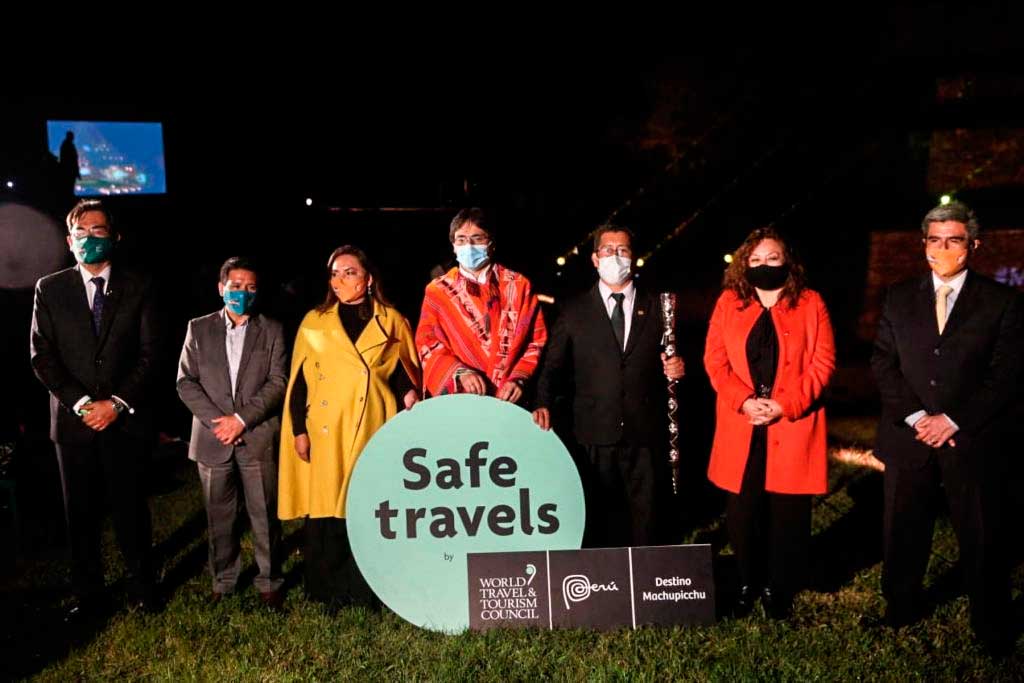
Peru Travel : "Safe Travels" by WTTC
In a ceremony held in Machu Picchu (Cusco) on 13 October, Peru received from the World Travel and Tourism Council (WTTC) the SAFE TRAVELS seal, the world's first safety and hygiene seal in tourism!!!
In a statement, the Ministry of Foreign Trade and Tourism (Mincetur) detailed that WTTC created the “ Safe Travels ” seal in order to contribute to the responsible and safe reopening of tourism, once the local authorities determine that the conditions exist for it. Therefore, the entity developed a set of protocols designed under the guidelines of the World Health Organization (WHO) and the Center for Disease Control and Prevention (CDC). This seal also has the backing of the World Tourism Organization (WTO) and more than 200 CEOs of the main business groups in the sector. Minister Rocío Barrios remarked that the biosecurity protocols issued by the Peruvian Executive regarding the tourism sector were evaluated by WTTC professionals and have their approval, which allows our country to have world-class health security standards in tourism . The ceremony was attended by the president of the Council of Ministers , Walter Martos, and the Japanese citizen Jesse Katayama , who became the first tourist to enter Machu Picchu after being reopened to the public in the context of the COVID-19 pandemic.
Peru is one of the most important destinations in the world and one of the first to obtain the Safe Travels seal from the WTCC.
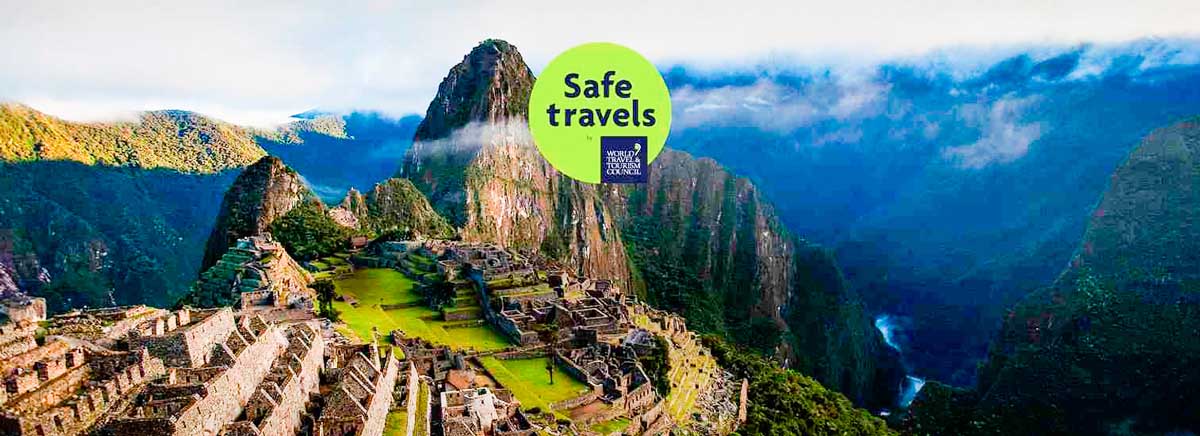
Coronavirus in Peru (COVID-19)
The virus keeps having a global impact. The U.S. government has established a state of emergency. This meant travel companies, leading airlines, and cruises had to cancel their routes. Italy, France, China, Iran, South Korea, and Europe were in quarantine. Some parts of Europe suffer from the 2nd wave nowadays applying local lockdowns.
In general, there is a higher risk for older travelers and those having a chronic disease. For that reason, it is recommended that these tourists reconsider traveling. If they travel, they should always follow strict hygienic rules such as washing their hands frequently, wear a mask/respirator, monitor their health and limit interactions with others for a period of 14 days after returning from a journey.
Is there COVID-19 in Peru?
Yes. The first case of COVID-19 in Peru was reported in March 2020. According to the latest reporting of the MINSA PERU , there are 677,987 (PCR) and 949,007 (Test Covid) cases in Peru, the total is 10.83% as of Decenber 13, 2021 . We continue to closely monitor this situation, and protocols continue to be set and enforced by the government.
Peru received the first vaccines from china against covid. The Ministry of Health published a map where vaccination in different regions of the country can be seen in real time. To date there are 23,578.016 registered that recieved the first dossis of vaccination, 20,097489 recievitin the second dossis and total dosses administered (1st and 2nd dossis) 43,675,505. In Lima there are 5,188,767 vaccinated, being the region with the highest number of doses applied, followed by La Libertad with 2,759,871 vaccinated. Of the total of this first batch, 84.5% have just been vaccinated.
This is the Map of the vaccinated in Peru in the real time
On the 15th October 2021 , the Ministry of Foreign Trade and Tourism of Peru issued the new necessary regulation called the " Health Guidelines for COVID-19 for Tourist Destinations ". It will form a framework for private and public subjects operating in tourism to prevent, monitor, and check the spread of the coronavirus.
Following the regulation, the first health and safety protocols to visit Machu Picchu after the coronavirus have been implemented by the Cusco office of the Ministry of Culture and SERNANP (a public organization attached to the Ministry of the Environment).
The Most Important Parts of the Protocols Include the Following Points:
- All Trains can operate 100% of the capacity of their seats. The ordered distance between passengers will be met.
- Shuttle buses operating the route between Aguas Calientes to Machu Picchu can operate with the total capacity.
- However, there is an option to ascend on foot from Aguas Calientes to the Inca citadel
- The Machu Picchu tickets reopen to a total capacity of 100%. The Peruvian government created new circuits to visit the Inca city.
- Only 500 visitors/hour can enter Machu Picchu (the Archaeological Zone). (5000 visitors per day)
- The first time of entry is 6 am and the last is 4 pm . Surely, more visiting hours will be added later.
According to the new protocols, any visitor has to enter with a company of a professional Tour Guide , who will be responsible to meet the protocols.
- Tour Guides can only enter with a group of a maximum of 10 people and maintain a distance of 20 meters from other groups.
- To visit Machu Picchu, four routes will be considered: Only Machu Picchu (Circuit 1, 2), Huayna Picchu mountain (Circuit 4), Machu Picchu mountain (Circuit 3), Huchuy Picchu mountain (Circuit 3), Puente Inca (Circuit 1, 2)
- "La casa del Vigilante" will be the point of explanation.
Safety Rules for Visitors:
- Mandatory use of masks.
- Do not share personal hygiene items or food with other tourists.
- Clean your hands frequently (eg. washing with soap and water, or use of antiseptic).
- Use disposable tissues and dispose of them properly in a litter bin with a lid immediately afterwards.
- In case of sneezing or coughing, cover your nose and mouth with a disposable tissue or your forearm.
- Maintain environments clean and ventilated .
- Check your body temperature every 12 hours .
Inca Trail and Machu Picchu Cancellation Policy
Machu Picchu and Inca Trail are the Peruvian top destinations. Loads of travellers had booked them, but could not arrive because of the Covid-19.
What to do in this case?
The Ministry of Culture's website says the new cancellation policy allows a refund of Inca Trail permits and Machu Picchu tickets .
If you booked the Inca Trail in advance and you could not visit it, you might postpone your tour until the year 2021. Your Inca Trail operator will need to do the paperwork for you to change the trail's date to a later date of this year or 2021. This will be done for no extra charge. In case, you like to cancel your hike, you will need to wait for a refund since tour operators will need to replace you with anybody else to change personal details given at the permit afterwards.
Machu Picchu Tickets
If you have booked by yourself.
If you have booked a Machu Picchu ticket by yourself, you will need to wait till the quarantine is over. At present, the Ministry of Culture is closed. It is very important to email them explaining about your requirement enclosing a copy of your ticket.
Postpone : In case, you prefer to postpone your Machu Picchu tickets to a later date, the ministry will likely accept it and make it without any extra charge.
Refund : If you like the canceling of your tickets, it is probable the ministry will refund the ticket amount for no extra bank transfer fee.
If you have booked by a tour operator
Postpone : Your tour operator will need to present to the ministry a list of all the travellers going with your group in order to postpone for a later date of this or the next year (2021).
Refund : If travellers prefer to cancel the trek, their tour operator should prepare a letter requesting a cancellation explaining its motive. Then, it might take some time to receive a reply from the ministry.
The Ministry of Culture of Peru's website says only:
- All the Inca Trail permits and Machu Picchu tickets booked in advance: all tour operators must present a list of cancellations and change travel date for no extra charge. This does not guarantee a refund.
- In case, travellers did not arrive at Machu Picchu or the Inca Trail , they lost their permits and tickets.
- Tour operators are obligated to find new participants in order for your Inca Trail permits and Machu Picchu tickets to be changed.
- A change of the date of Machu Picchu , Huayna Picchu, and Inca Trail permits are subject to availability.
PeruRail and Inca Rail are railway companies which normally operate trips to Machu Picchu. They do not operate it during the quarantine. Only a local train works now. If you have booked a train to Machu Picchu in advance, contact them directly by email. They will change the date of your trip or give you a refund.
RELATED : TRAIN RIDE FROM CUSCO TO MACHU PICCHU
Well, Machu Picchu was closed. At present, Tierras Vivas has been accepting the necessary steps to provide security and safety to all our travellers. Our booking policy is being replaced with new ones. Tierras Vivas will offer a private group service. We will operate in small groups (2 - 4 person max.) only. Our Tour Guides and other staff will implement a new safety policy into our tours/ hikes.
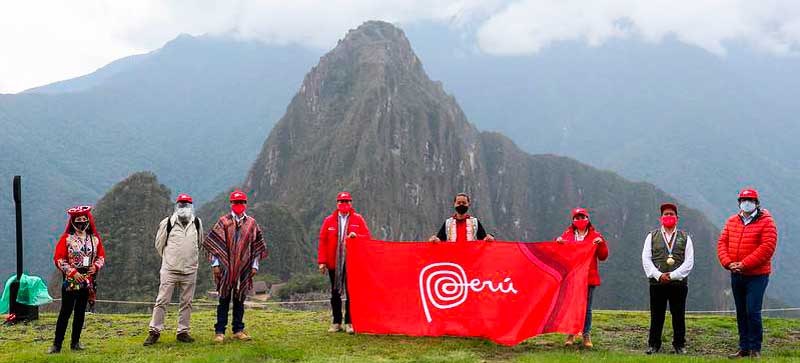
What Is Coronavirus?
Coronaviruses (CoV) are a large family of viruses that cause illness ranging from a common cold to more severe diseases such as Middle East Respiratory Syndrome (MERS-CoV) and Severe Acute Respiratory Syndrome (SARS-CoV).
Coronavirus was first discovered in November 2019 in Wuhan, within the Hubei Province of China. On 12 February 2020, the WHO announced that the official name for this specific strain of coronavirus is Covid-19.
On 11 March 2020, the World Health Organization tweeted that they characterized officially the situation as "pandemic".
What Are the Symptoms of Coronavirus?
Fever, cough, and difficulty breathing. If you get these symptoms, call a medical centre in advance seeking medical help. Follow the advice of your local health authority. Stay home if you feel unwell.
National and local authorities have the most up to date information on the situation in your area. Calling in advance will allow your health care provider to direct you quickly to the right health facility. This will also protect you and help prevent the spread of viruses and other infections.
What Can You Do to Prevent Coronavirus?
Wash Your Hands Frequently Regularly and thoroughly clean your hands with an alcohol-based hand sanitizer or wash them with soap and water.
Washing hands with soap or using alcohol-based hand sanitizer kills viruses that may be on your hands.
Keep Social Distancing
Keep a distance of 2 metres from anyone coughing or sneezing.
When someone coughs or sneezes, s/he sprays small liquid droplets from their nose or mouth which may contain viruses. If you are too close, you can breathe in the droplets, including the COVID-19 virus if the coughing person has the disease.
Avoid Touching Eyes, Nose, and Mouth Why?
Hands usually touch many surfaces and can pick up viruses. Once contaminated, hands can transfer the virus into your eyes, nose, or mouth. From there, the virus can spread the body and can make you sick.
Practice Respiratory Hygiene Make sure that you and the people around you follow good respiratory hygiene. It means covering the mouth and nose with a tissue when coughing or sneezing and dispose of the used tissue immediately afterwards. Ideally, use a mask or a respirator to protect yourself and others from infection spread.
The virus spreads by means of droplets. By following good respiratory hygiene, you protect people around you from viruses such as cold, flu, and COVID-19.
Recommendations
- Wash your hands frequently with soap and water at least 2 minutes.
- Cover your nose and mouth with your forearm or disposable tissue when sneezing or coughing and throw such a tissue away.
- Avoid touching your hands, eyes, nose, and mouth with unwashed hands.
- Avoid direct contact with people with respiratory problems.
- In the presence of mild symptoms (cough, sore throat, and fever), cover yourself and wash your hands. If possible, stay at home.
- In the presence of severe symptoms (respiratory distress and high fever), dial the toll-free emergency number 113 .
- Avoid waving or kissing on the cheek.
- Do not self-medicate.
- Clean surfaces at your home, office, or business (eg. tables, bathrooms, floors, toys, etc.) with disinfection (for example, Bleach, alcohol-based agents, etc.).
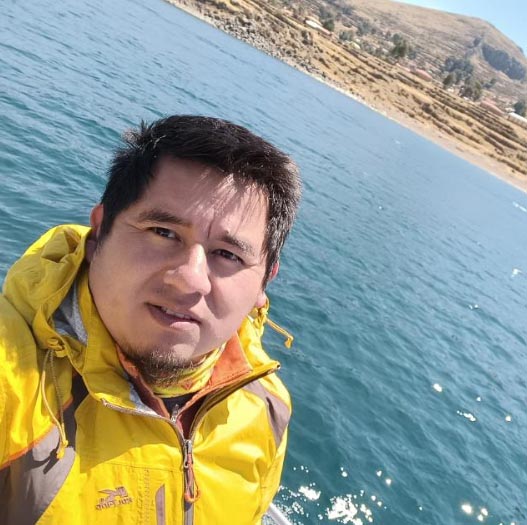
Edwin Caviedes Profesional guide
Lorem ipsum dolor sit amet, consectetur adipiscing elit. Vivamus sceler neque in euismod. Nam vitae urnasodales neque in faucibus.
Previous Post
The bedding was hardly able
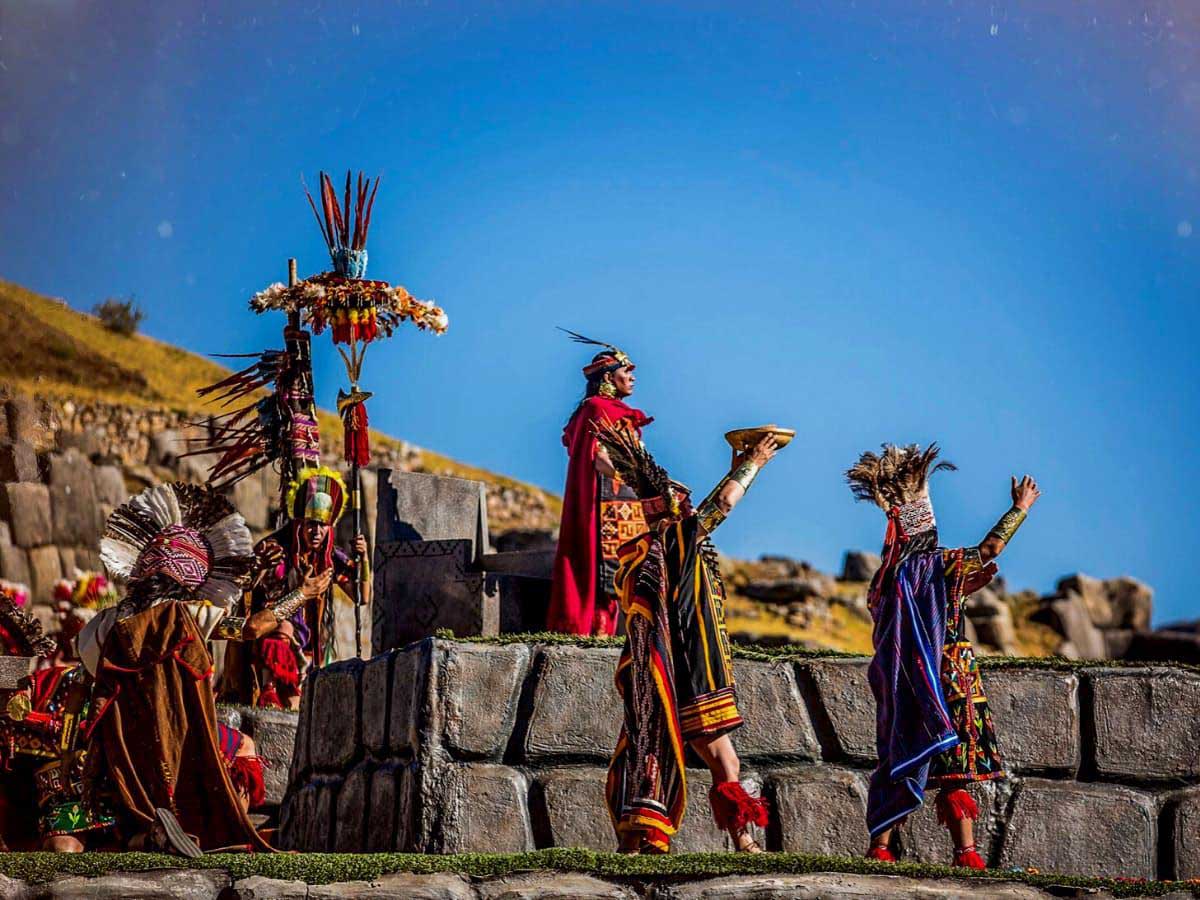
Traditional Peruvian Clothing
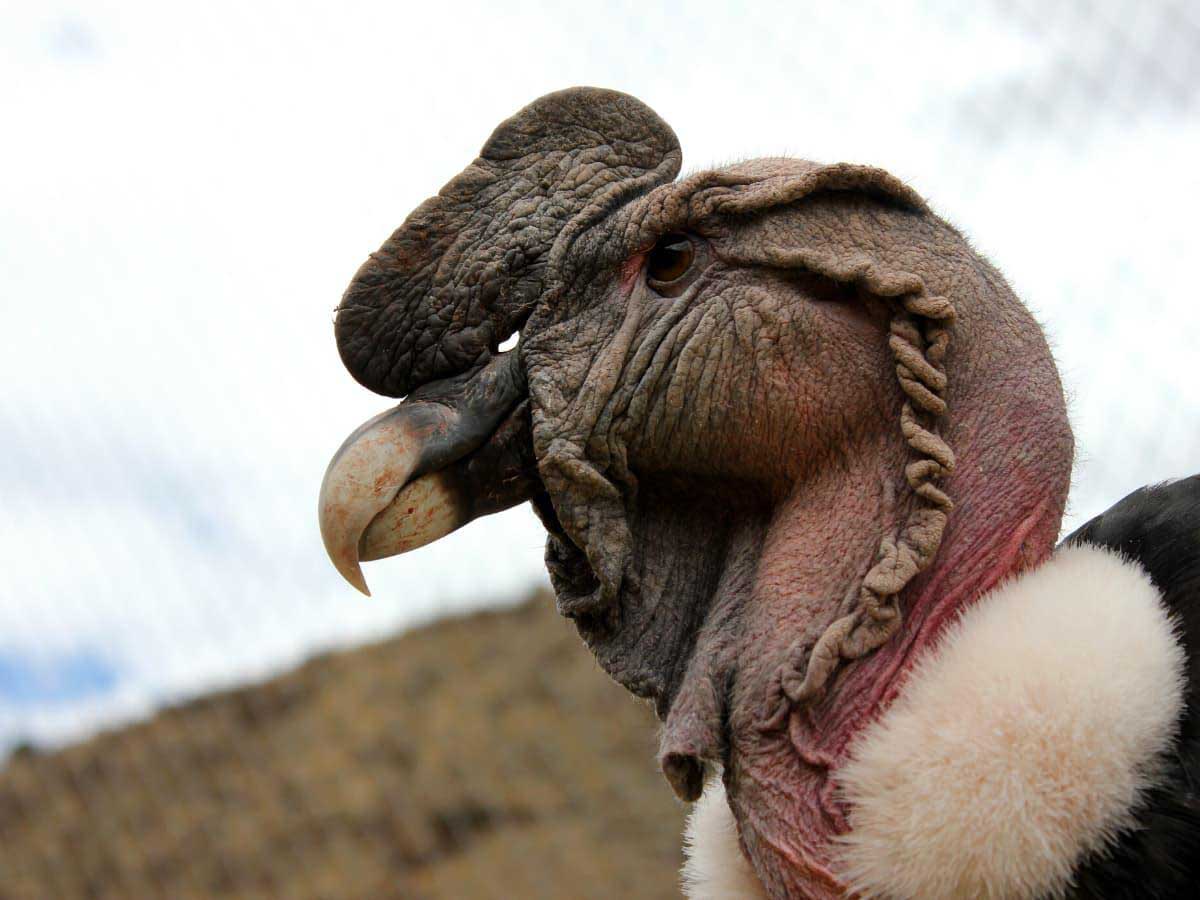
Condor Bird in Peru: The largest bird in the world
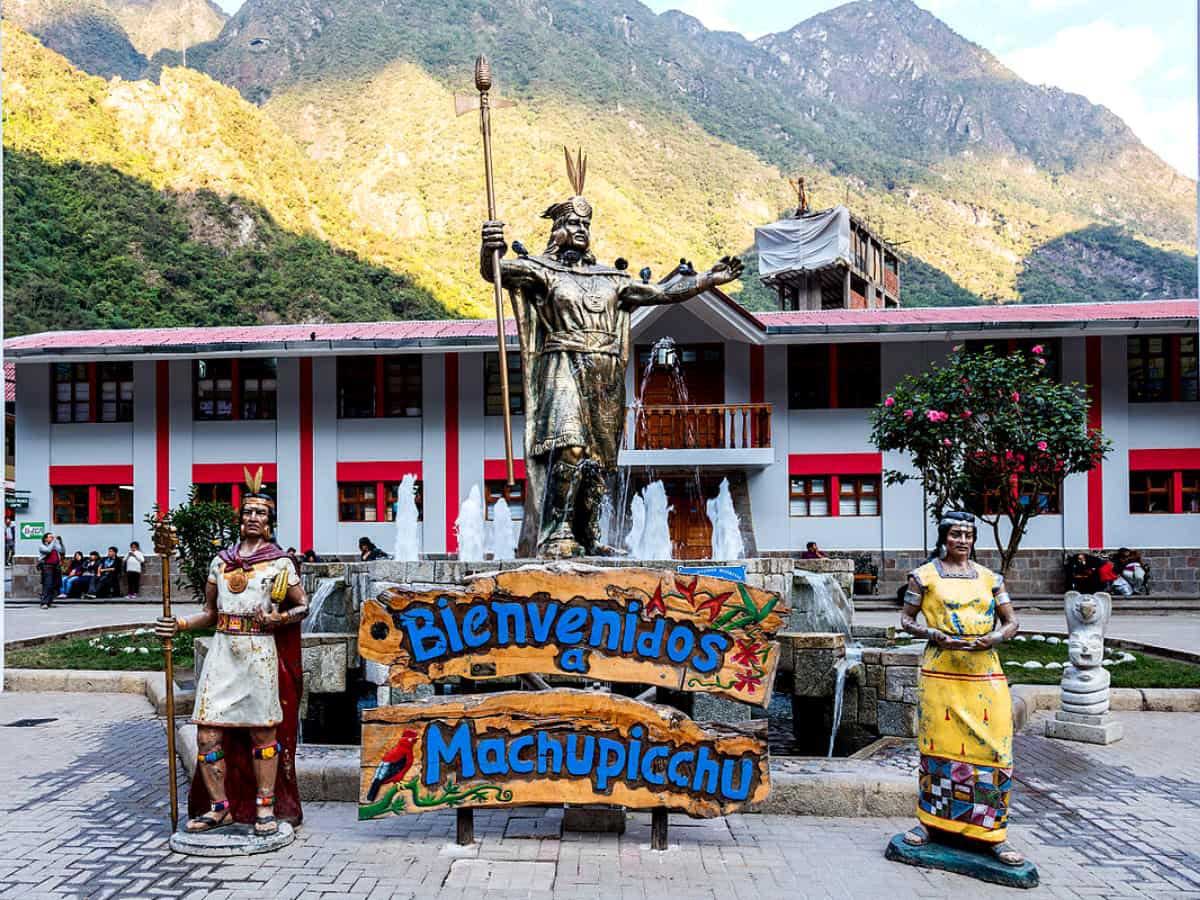
Aguas Calientes: Everything you need to know before to visiting Machu Picchu village
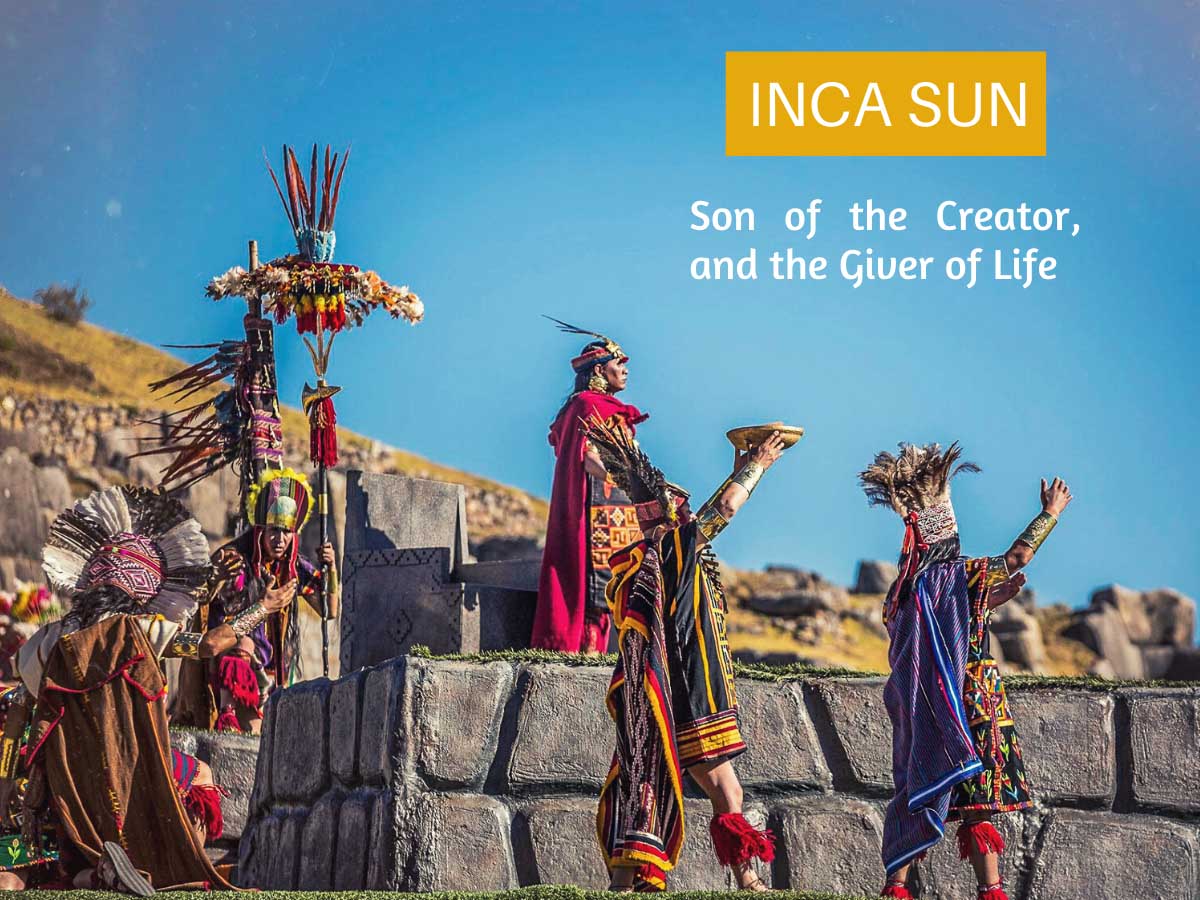
Inca Sun God
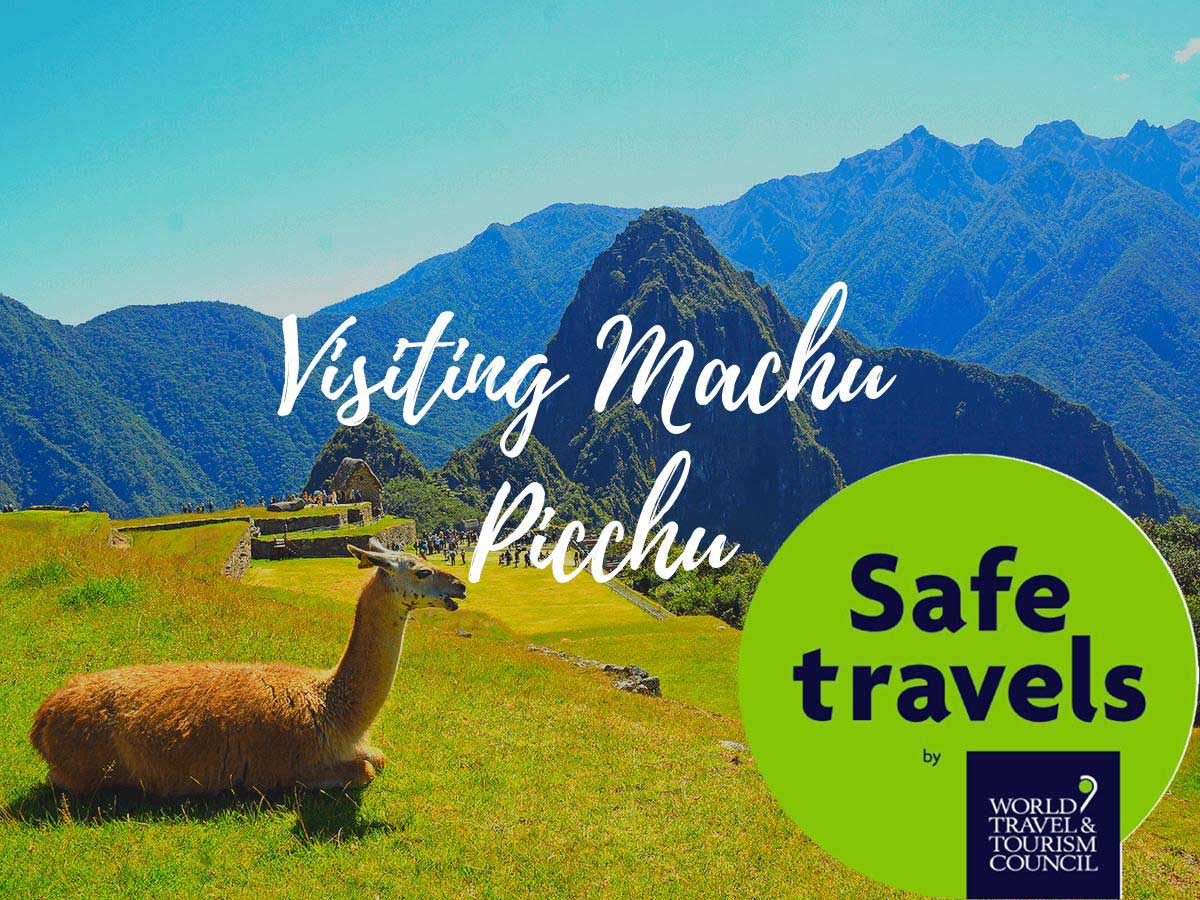
Machu Picchu to Close: Ultimate Upgrade 2024
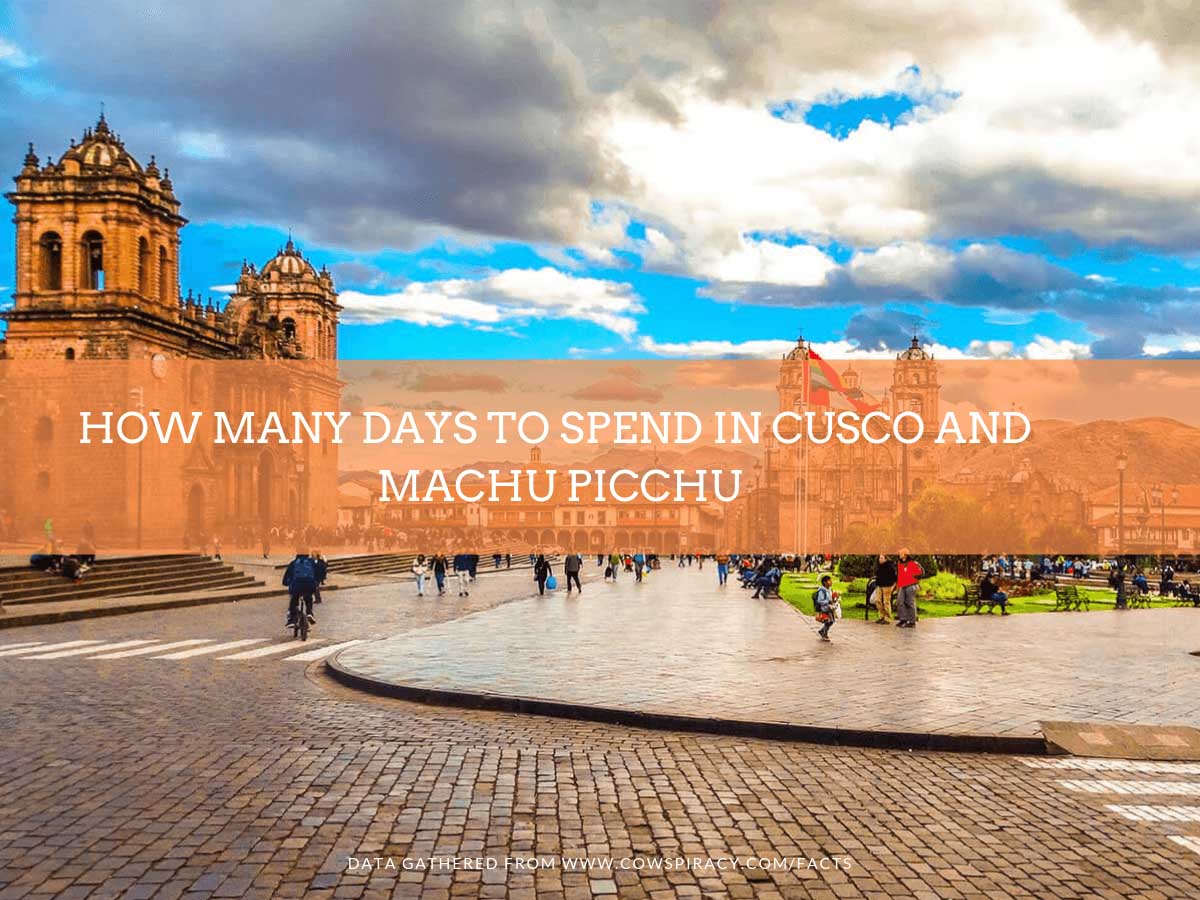
How Many Days to Spend in Cusco and Machu Picchu
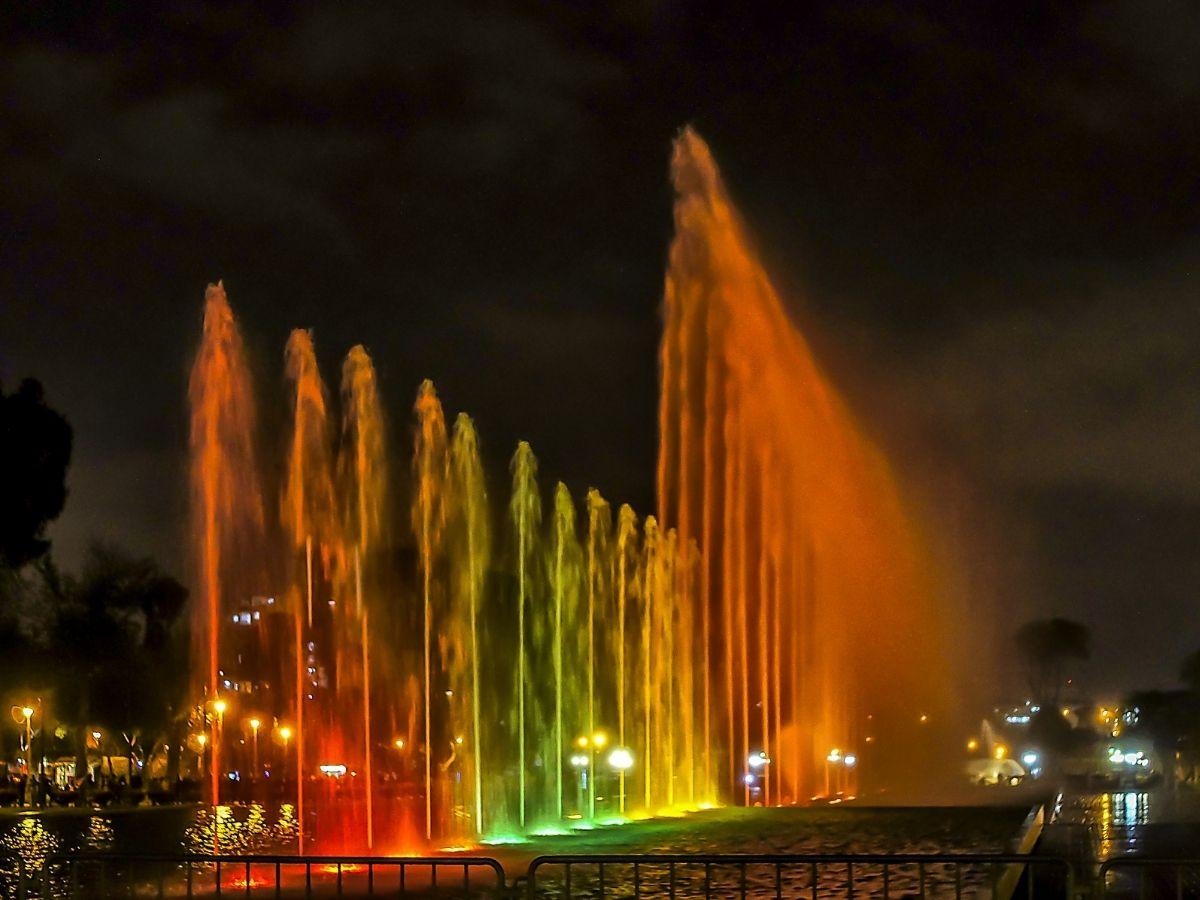
Magic Water Circuit of the Reserve Park

Machu Picchu Circuits: New Tickets 2024 Official Website
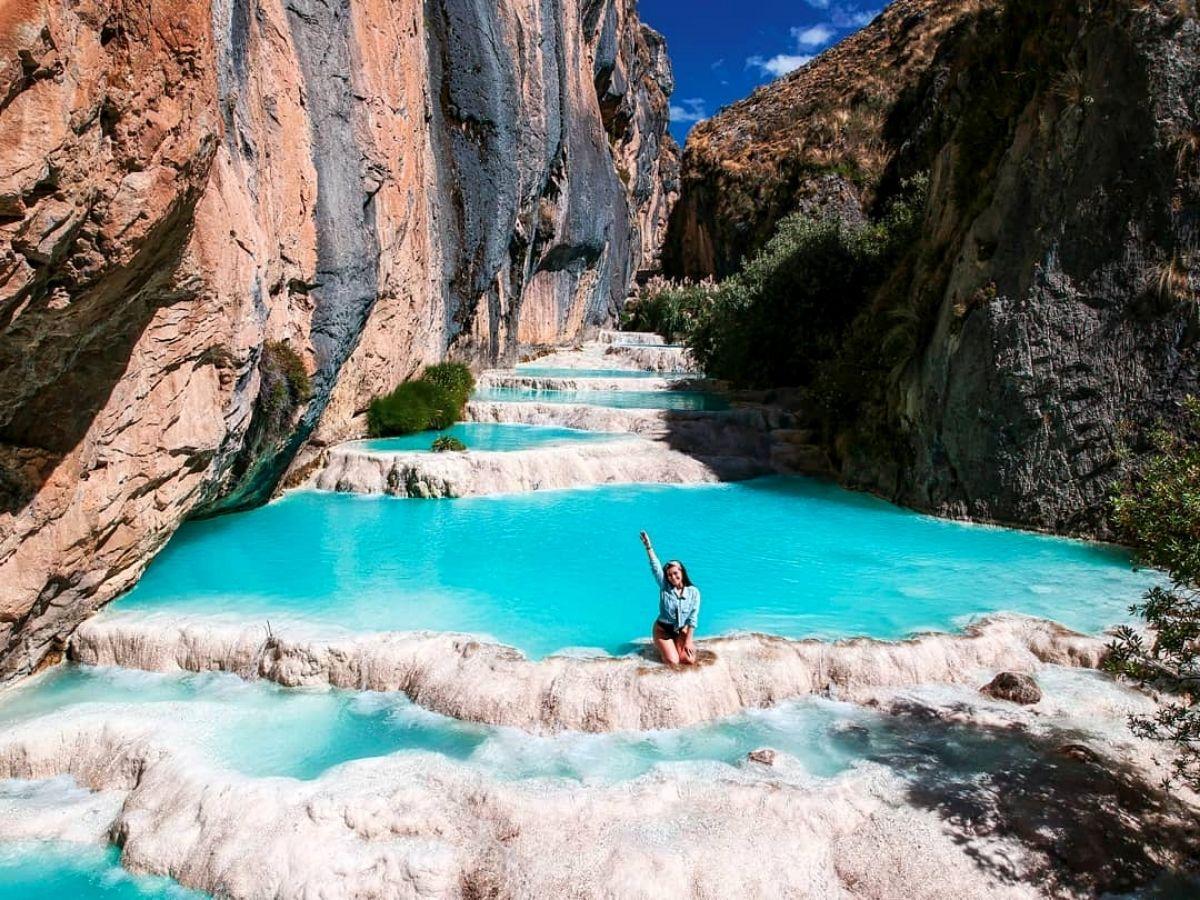
Millpu: Get to know these beautiful natural pools
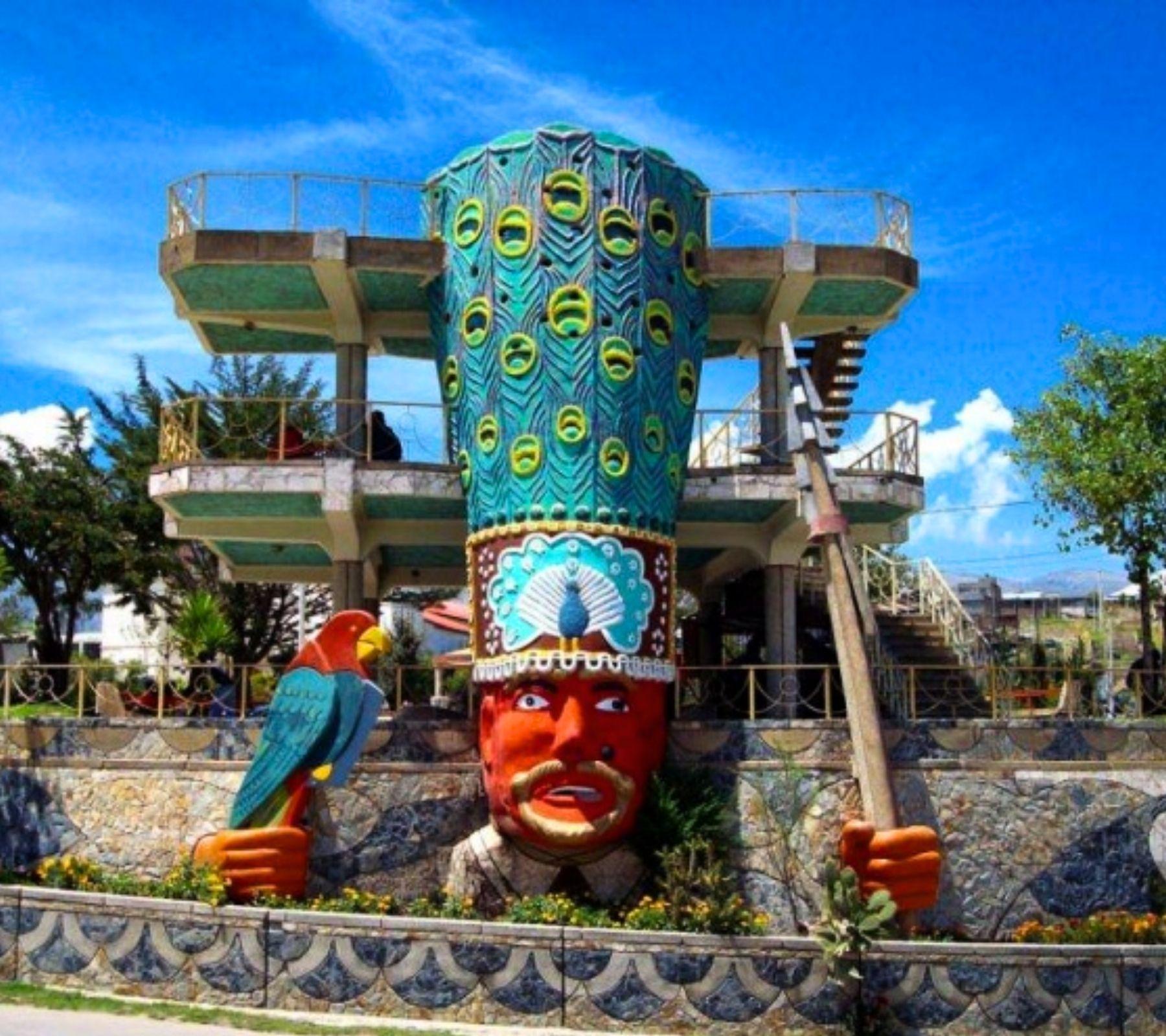
Places to visit in Chupaca Peru
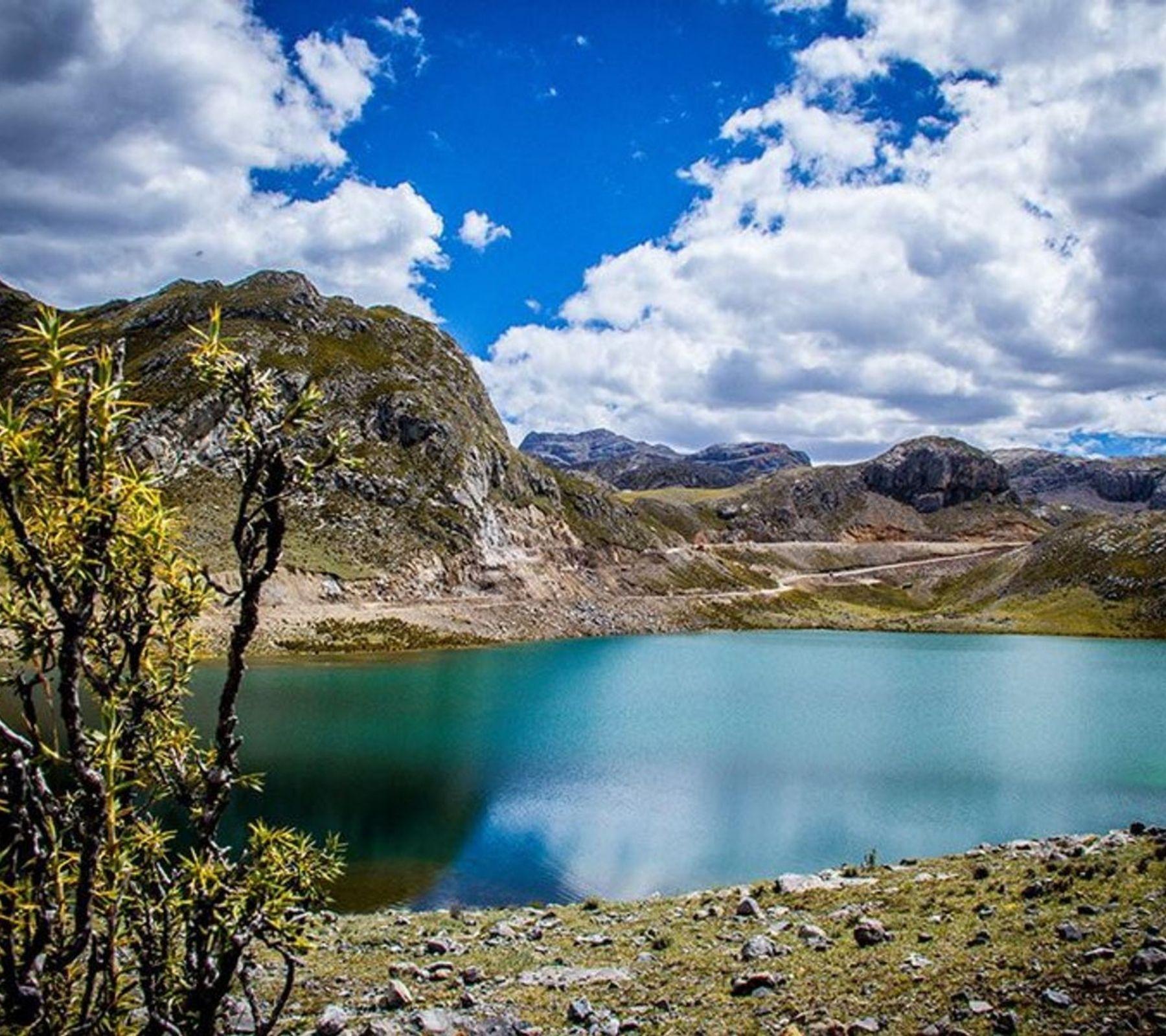
Yauli District: Huancavelica
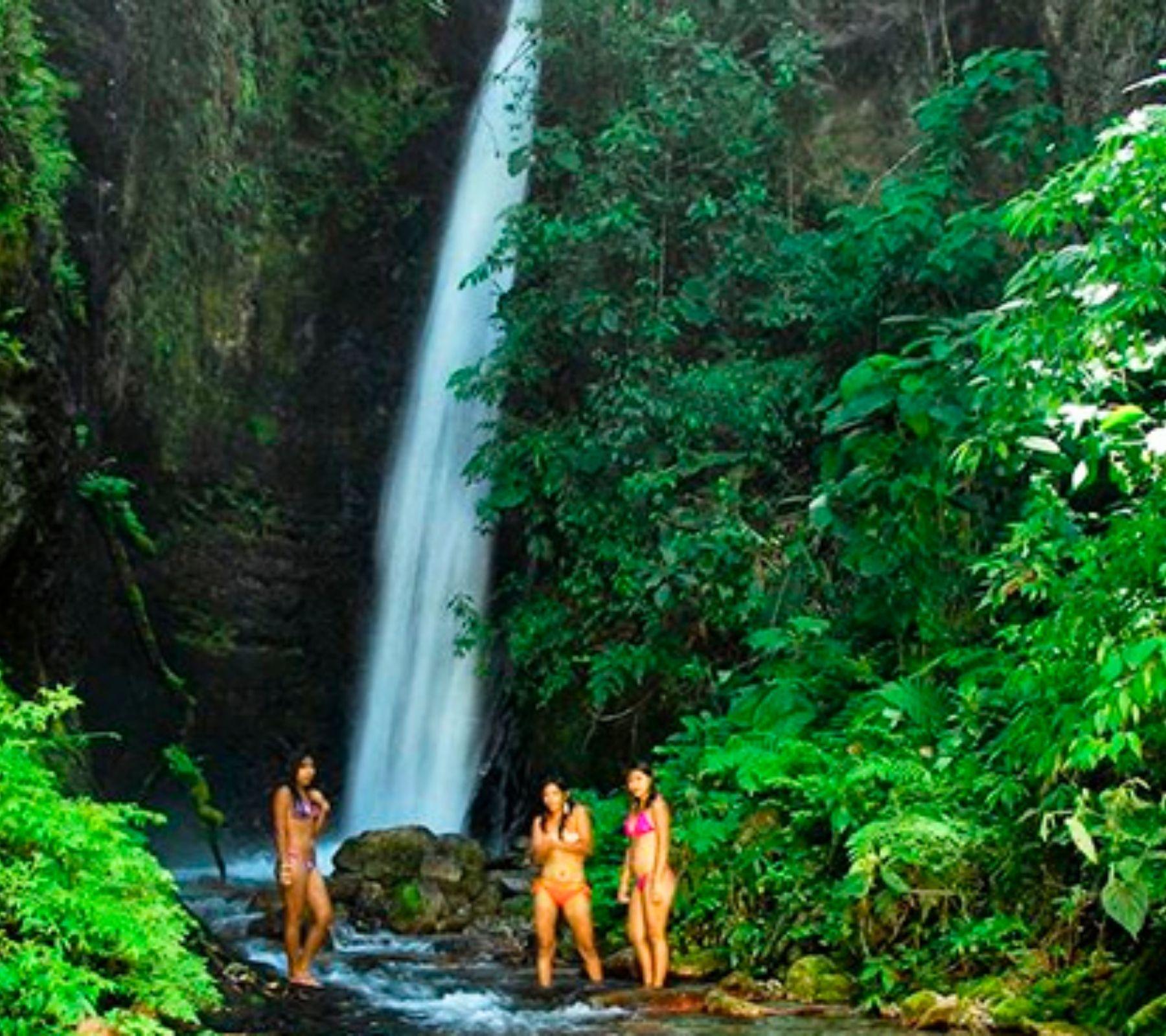
San Ramon: enjoy the beautiful attractions of The Golden Gate of the Central Jungle
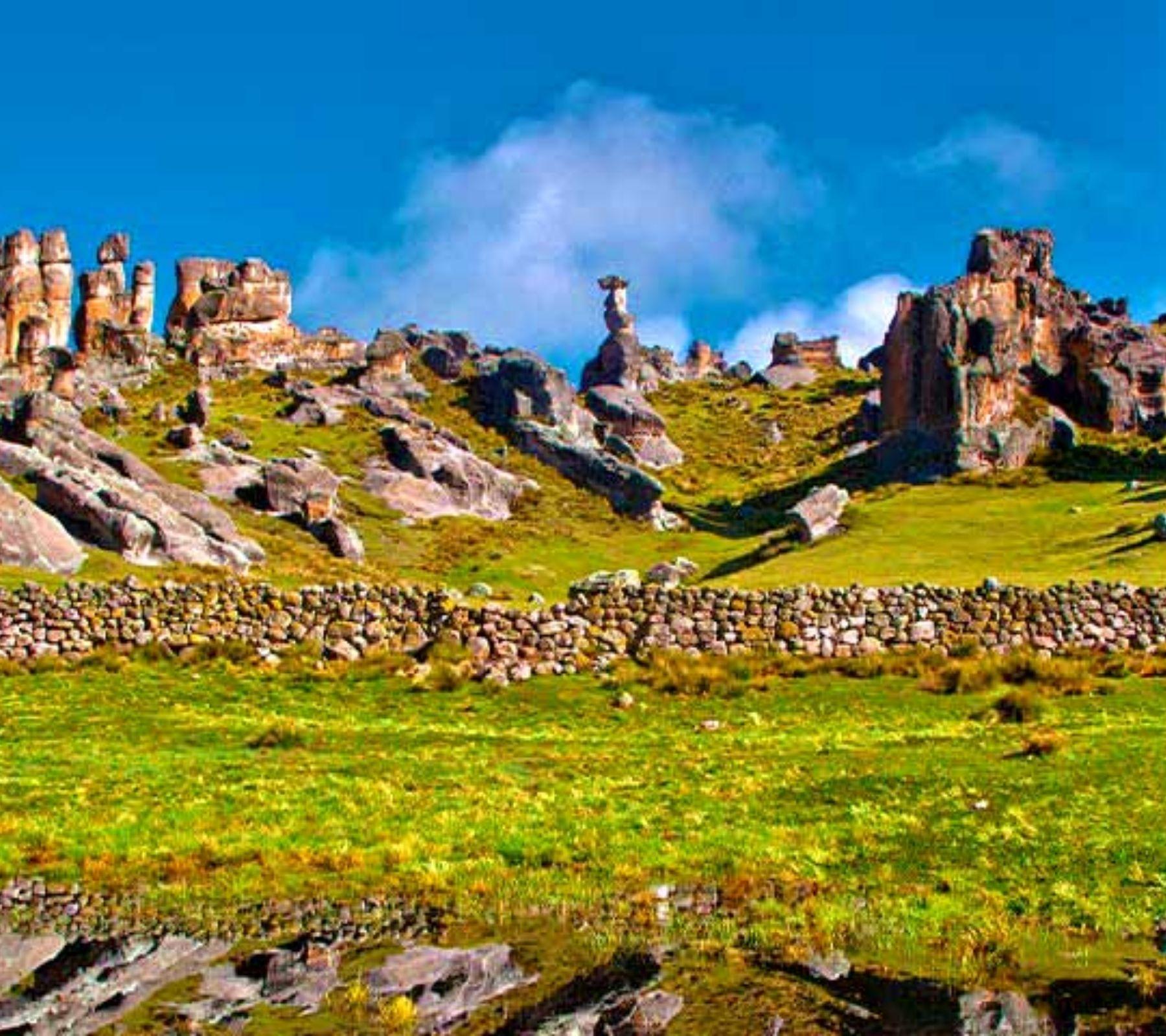
Tourist places in Pasco: know the main attractions of this department in central Peru
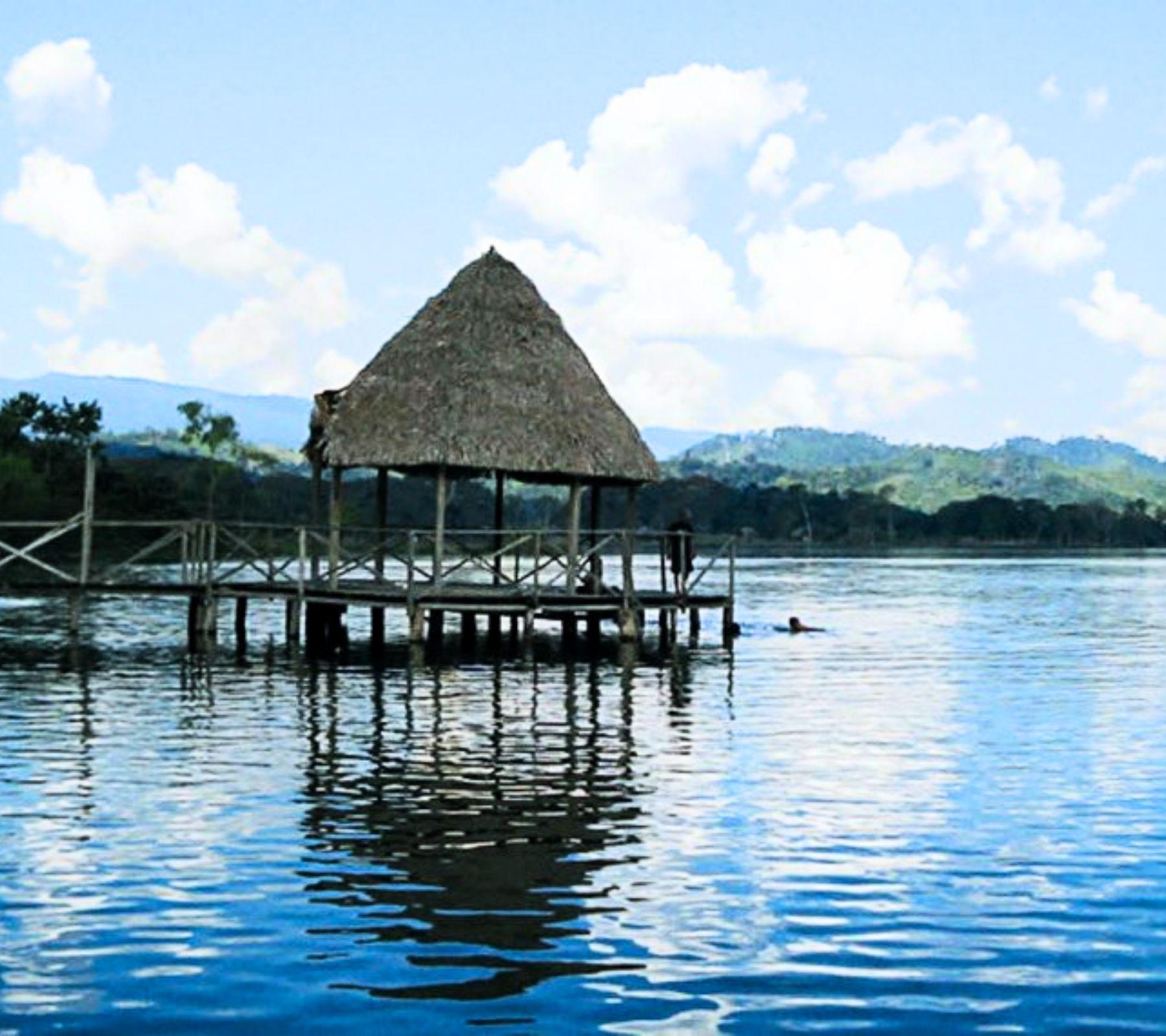
San Martin: Where waterfalls and lakes meet
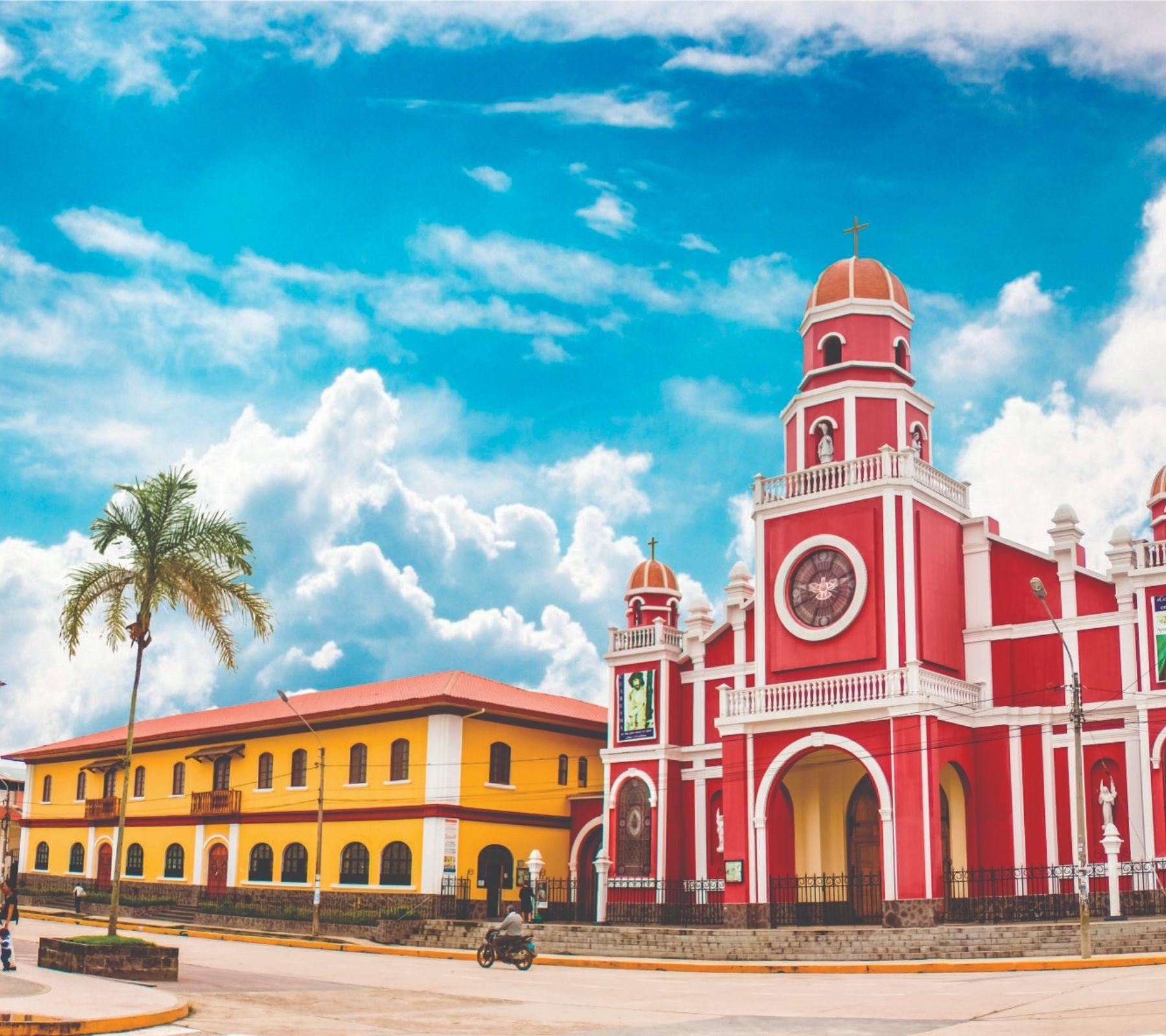
Moyobamba: the 10 best things to do in the Amazon paradise
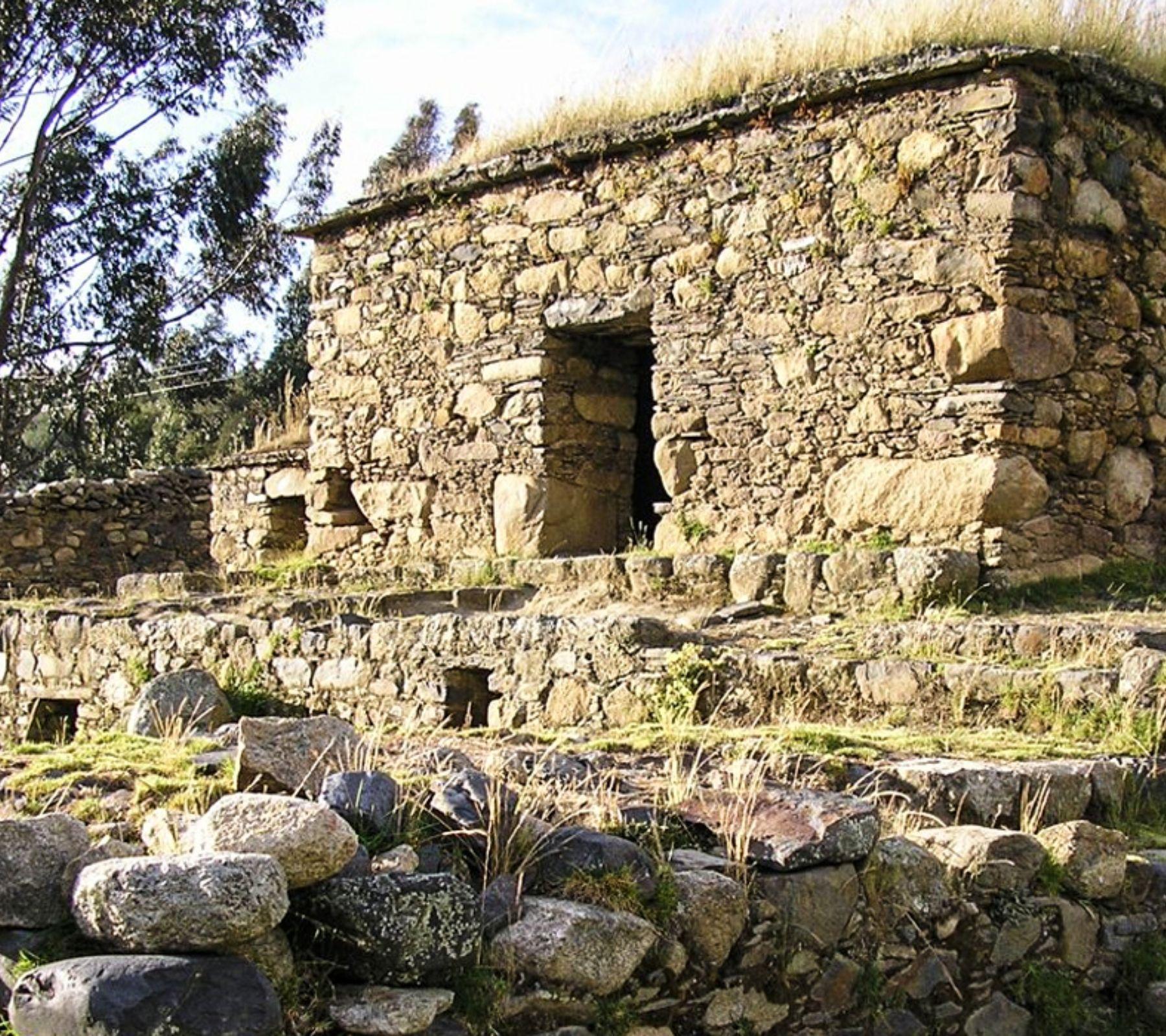
Wilcahuaín or Huillcahuayin Complex
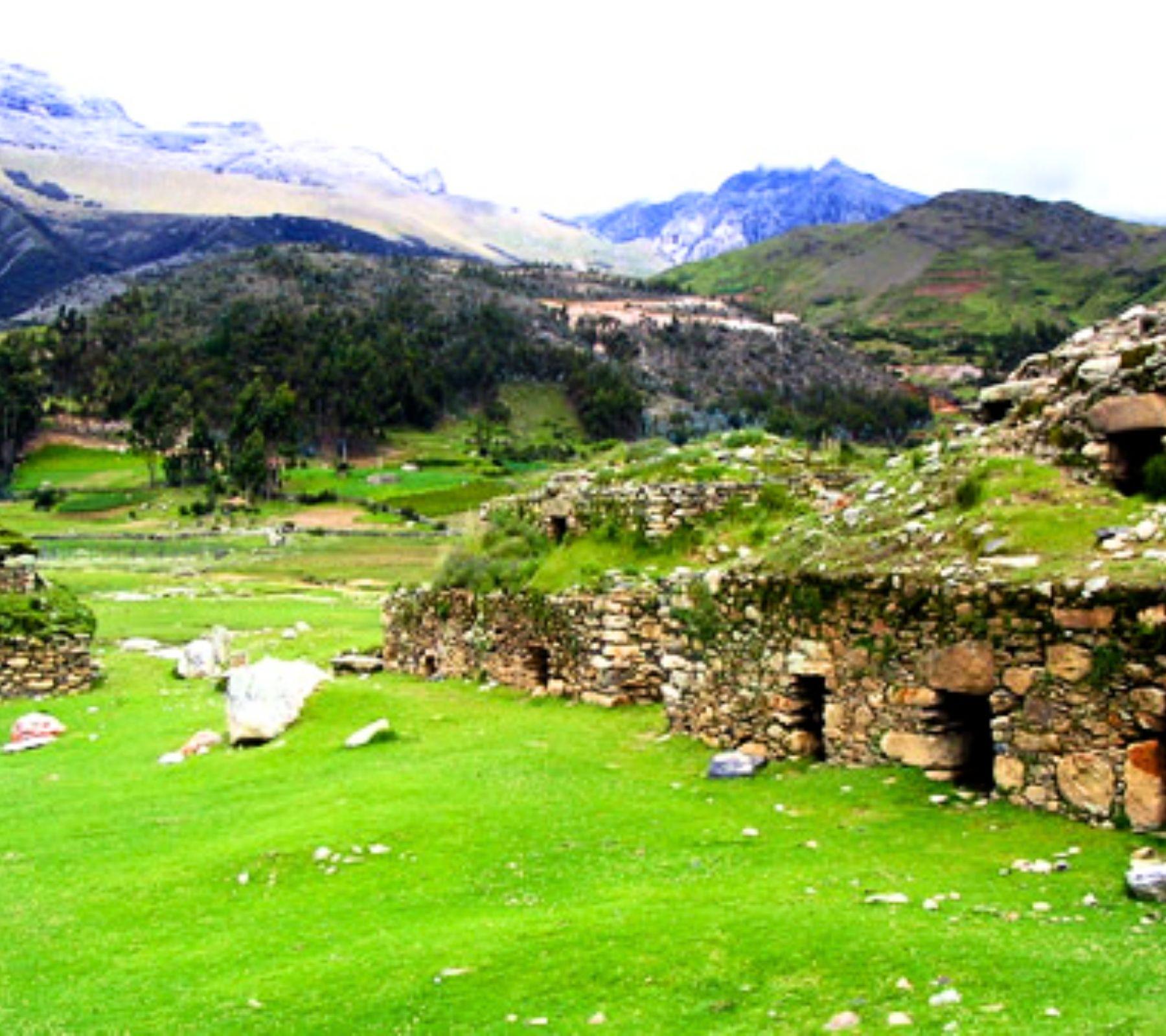
Honcopampa Archaeological Complex
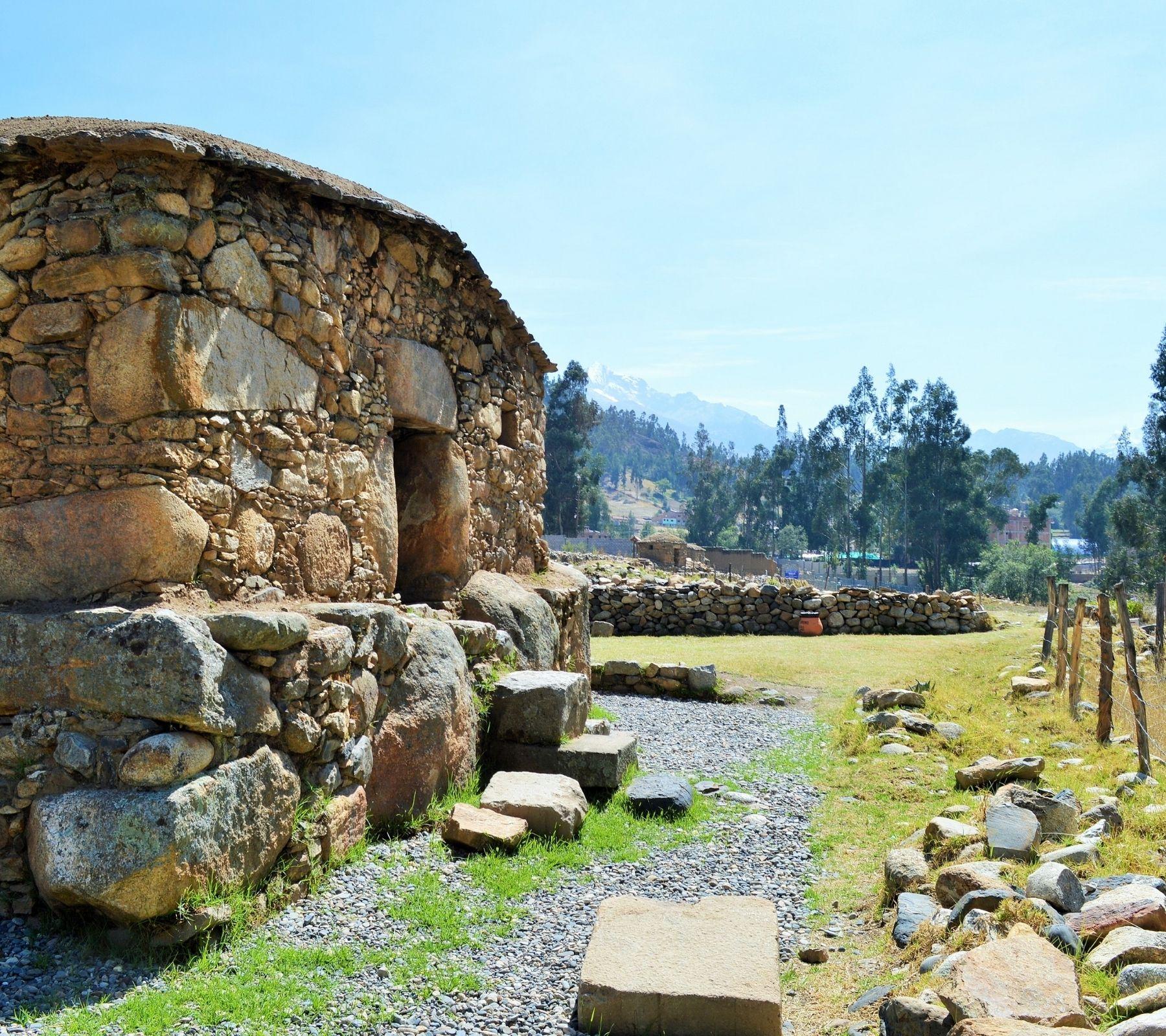
Tourism in Waullac Archaeological Complex
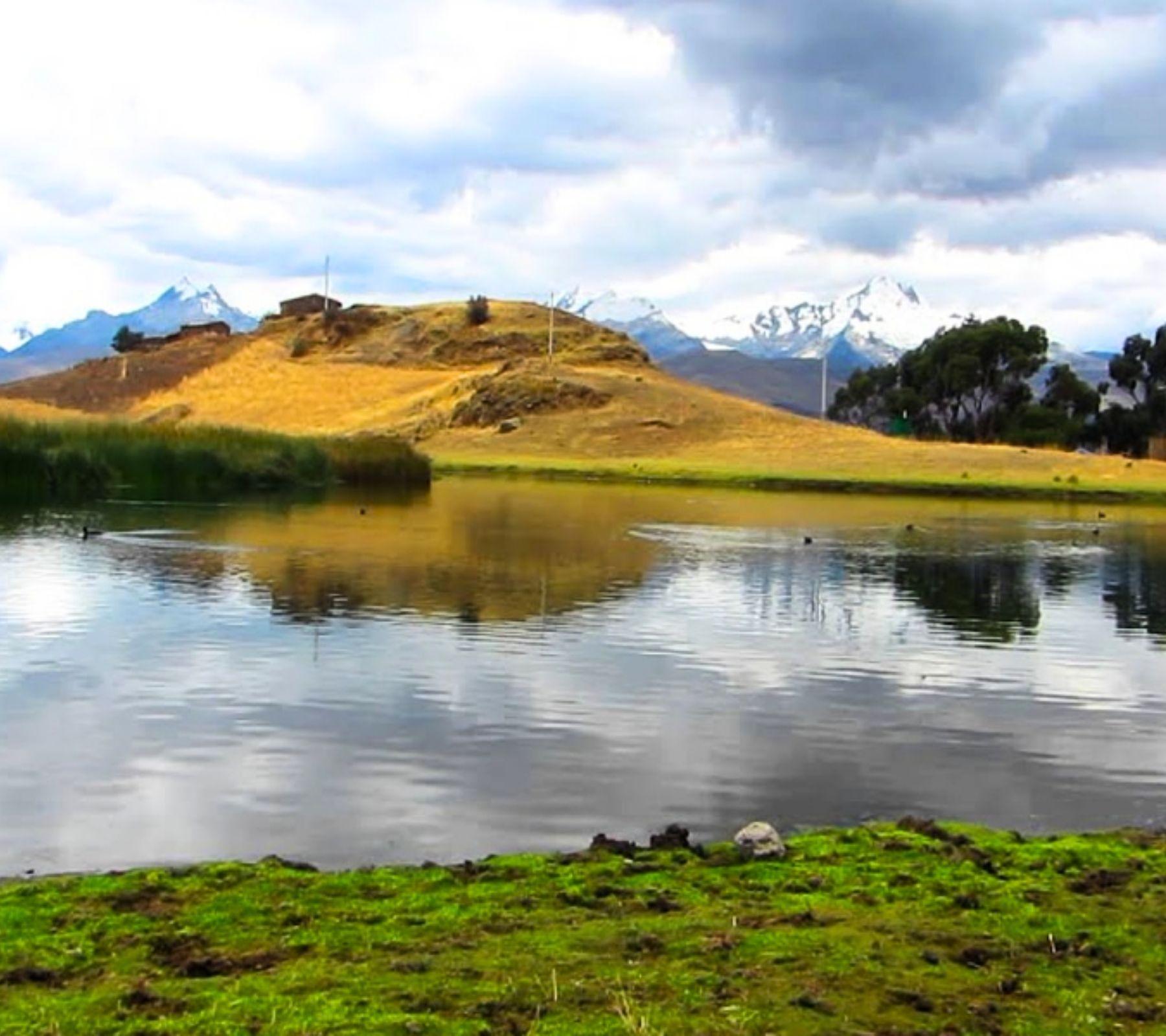
Wilcacocha Lagoon
Top destinations, explore top destinations.
Tierras Vivas Travel offers the best all-inclusive Inca Trail to Machu Picchu tours in Peru.
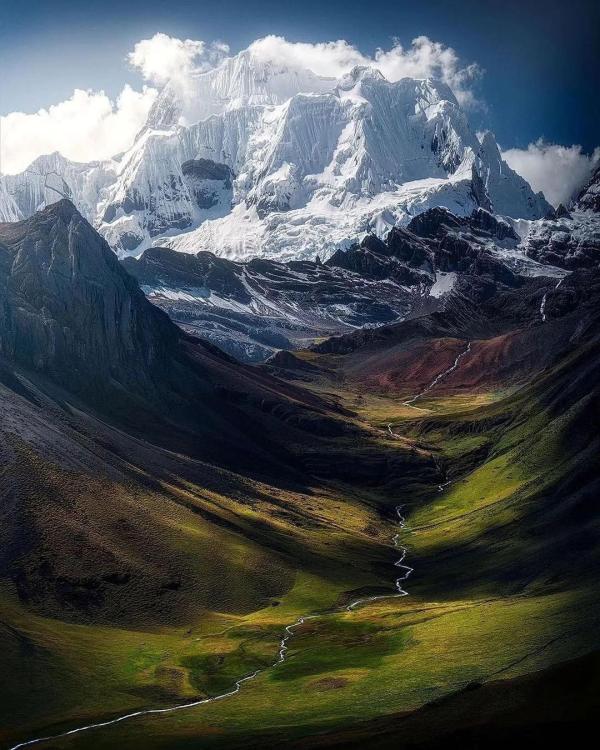
Trekking & Hiking
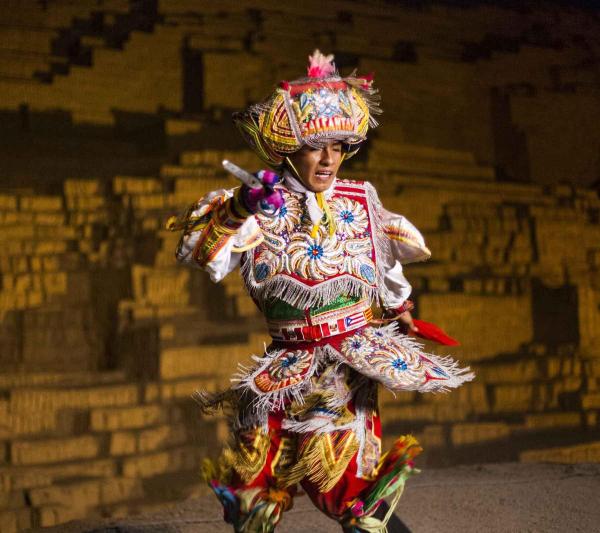
Culture / History
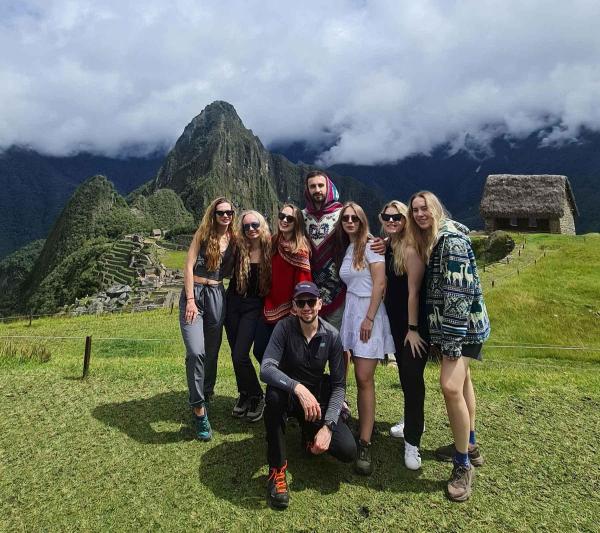
Adventure Holidays
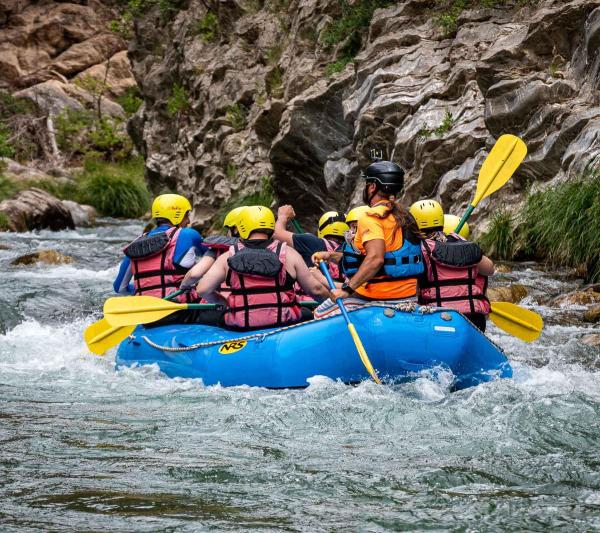
Mixed-Adventure Tours
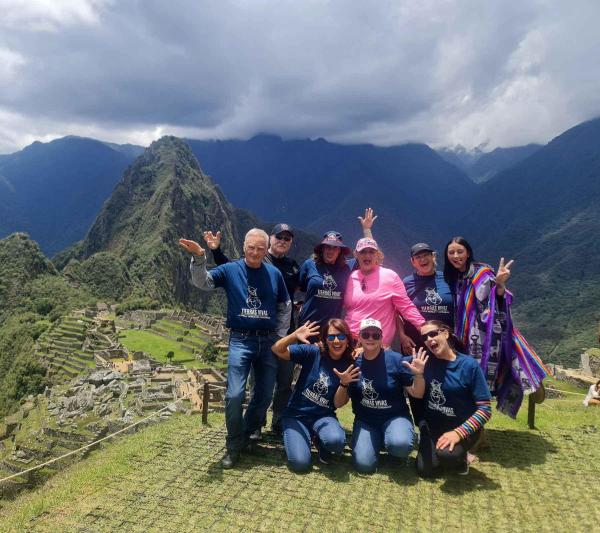
Family Travel
Don't have an account? Register
Already have an account? Login
- Skip to main content
- Skip to "About this site"
Language selection
Search travel.gc.ca.
Help us to improve our website. Take our survey !
COVID-19: travel health notice for all travellers
Peru travel advice
Latest updates: Editorial change
Last updated: June 4, 2024 08:03 ET
On this page
Safety and security, entry and exit requirements, laws and culture, natural disasters and climate, peru - exercise a high degree of caution.
Exercise a high degree of caution in Peru due to high levels of crime, as well as social conflicts and strikes that may occur across the country.
Regional advisory - Avoid non-essential travel
- Huallaga and Tocache provinces in the department of San Martín
- the Upper Huallaga and Ene river valleys in the departments of Huánuco and San Martín
- Padre Abad province in the department of Ucayali
- Huacaybamba, Humalíes, Leoncio Prado and Marañón provinces in the department of Huánuco
- Concepción and Satipo provinces in the department of Junín
- Tayacaja province in the department of Huancavelica
- the districts of Abancay, Andahuaylas and Chincheros in the department of Apurímac
- Huanta and La Mar provinces, in the department of Ayacucho
- Valley of Apurimac, Ene and Mantaro rivers (VRAEM)
Border area with Colombia - Avoid non-essential travel
Avoid non-essential travel to areas within 20 km of the border with Colombia due to drug trafficking and occasional incursions by armed guerrilla forces from Colombia into Peru.
Border area with Ecuador - Avoid non-essential travel
Avoid non-essential travel to areas within 20 km of the border with Ecuador, especially in the Cordillera del Cóndor region, due to the safety threat posed by landmines.
Back to top
State of emergency in regions bordering Ecuador
On January 10, 2024, the Peruvian government declared a state of emergency in the northern regions bordering Ecuador following the Government of Ecuador’s declaration of a nationwide state of “internal armed conflict” on January 9, 2024. The state of emergency is in effect in the following regions:
If you are in these regions, you should carry identification with you at all times.
Demonstrations and strikes
Demonstrations and strikes take place regularly throughout the country. Strikes can complicate travel and disrupt public transport and services, including your ability to travel to or leave isolated tourist destinations such as Machu Picchu. They could also lead to border closures with Bolivia. Protestors may also block rivers essential for transportation in some remote regions, including the Manu region of Madre de Dios and Iquitos region. This may result in the temporary detainment of tourists.
Even peaceful demonstrations can turn violent at any time. Police have used tear gas and other methods to disperse crowds in the past. Authorities often declare a state of emergency in response to demonstrations.
Peruvian law prohibits political activities by foreigners. You may face detention or deportation if you take part in a demonstration.
- Avoid areas where demonstrations and large gatherings are taking place
- Follow the instructions of local authorities
- Consult local media to be aware of strikes and demonstrations that may affect your stay or travel plans
Mass gatherings (large-scale events)
State of Emergency
The Peruvian government periodically declares a state of emergency in certain areas to allow the military to assist police forces to respond to security incidents and natural disasters. When a state of emergency is in effect, security forces have increased rights to:
- restrict freedom of movement
- monitor correspondence
- conduct search and seizures
- detain persons of interest
Border area with Colombia
Criminal activity related to narcotics trafficking and occasional incursions by armed guerrilla forces from Colombia at Cordillera del Cóndor, Peru, pose a threat to personal security.
Border area with Ecuador
Cross the Peru–Ecuador border at official crossing points only due to the presence of landmines along the border.
Basic services in the Tumbes district have become increasingly difficult to access due to an increased number of migrants entering Peru from the North land border with Ecuador. The increased population has limited the provision of these services.
Valle de los Ríos Apurímac, Ene y Mantaro (VRAEM)
Drug trafficking.
Cocaine production and trafficking occurs inVRAEM. Travel is particularly dangerous in areas where there is coca cultivation and processing.
Domestic terrorism
Incidents of domestic terrorism have occurred in VRAEM, particularly the region where the Apurímac, Ayacucho, Cuzco and Junín departments meet.
Crime rates are high throughout the country.
- Maintain a high level of vigilance and personal security awareness, especially at night
- Avoid walking in deserted or under-populated areas
- Travel in groups whenever possible
Petty crime
Petty crime, such as pickpocketing and purse snatching, occurs, particularly in Lima, in other cities and even in crowded, public areas. Theft occurs frequently in hotels, restaurants, bus stations and airports, on intercity buses and microbuses and while hailing taxis.
- Avoid wearing expensive watches and jewellery, or showing signs of affluence
- Ensure that your belongings, including your passport and other travel documents, are secure at all times
- Never leave bags unattended
Pickpockets and bag snatchers may work in pairs or groups and employ a variety of ruses to divert their victim’s attention. A common scam involves spraying a substance on victims and then robbing them while pretending to help clean the stain, or distracting the victim by asking questions while another person perpetrates the theft. In some cases, thieves on motorcycles will snatch purses, backpacks or cellular phones.
Violent crime
Violent crime occurs. Incidents have included:
- kidnappings
Armed robbery
Armed robberies are on the rise. While most victims are not physically injured, criminals will not hesitate to use force when opposed.
- If you are robbed, hand over your cash, electronic devices and valuables without resistance
- Be particularly vigilant after visiting a bank, an ATM or a change bureau, as thieves may follow and rob victims.
- Use ATMs inside banks and during regular hours of service, when guards are on duty
Assaults have occurred along the Inca Trail and in the Huaraz region of the Cordillera Blanca mountains. Hiking in these regions should be done in groups.
Express kidnappings involving tourists have occurred. Victims are usually abducted for a few hours and forced to withdraw money from ATMs for their release. Most express kidnappings take place at night, but incidents also occur during daylight hours. Incidents often involve criminals posing as taxi drivers, or taxi drivers working for organized gangs. Virtual kidnappings occur throughout the country. Criminals use stolen cellphones to contact family members claiming to have kidnapped the owner of the phone and then ask for ransom money.
- Be suspicious of strangers approaching you on the street
- Never leave your cellphone unattended
- Be cautious when using cellphones and smart devices in public as they are often targeted by thieves, especially while people are using them
- Ensure your phone is password protected
Organized crime
Organized crime is reportedly increasing in parts of Lima Province and in some districts of the Department of Piura. In some parts of the country, military and security forces have been deployed to assist police in combatting organized crime.
Incidents of domestic terrorism occur, particularly in remote jungle areas such as:
- parts of the Huancavelica and Ucayali departments
- the Upper Huallaga river valley in the Huánuco and San Martín departments.
Incidents have included:
- temporary ambushes of small villages
- bombings or threats of violence against local security forces or community figures
Overland travel in these regions is unsafe.
Counterfeit currency
Counterfeit currency in both sol and U.S. dollars is a growing and serious problem. Counterfeit bills are widely distributed, including by banks, casinos and local stores.
Avoid moneychangers on the street, as they may carry counterfeit currency or work with pickpockets.
Credit card fraud
Credit card and ATM fraud occurs. Be cautious when using debit or credit cards:
- pay careful attention when your cards are being handled by others
- use ATMs located in well-lit public areas or inside a bank or business
- avoid using card readers with an irregular or unusual feature
- cover the keypad with one hand when entering your PIN
- check for any unauthorized transactions on your account statements
Criminals posing as taxi drivers often rob tourists along the route to and from Lima’s Jorge Chávez International Airport.
- Use a secure taxi service when arriving at and leaving the airport
- Exercise caution en route to and from your hotel
Thieves also pose as police officers to gain the confidence and cooperation of their potential victims.
- If you are stopped by local authorities, ask to see official identification and record the officer’s name, badge number and district.
- For traffic violations, request that the officer issue you a fine in writing, which is payable at a later date.
- You should also note the location of the arrest.
Legitimate police officers have also extorted money in exchange for dismissing minor offences or traffic violations. They have also stolen money and valuables during searches.
- If you are searched, even at the airport, ensure you have all your belongings before leaving
- If you are planning to participate in volunteer activities in Peru, ensure that the company organizing your trip is legitimate
- Make sure your accommodations and return arrangements are secure before travelling
Useful links
- Lima Airport Partners
- Overseas fraud
- Volunteering abroad
Spiked food and drinks
Snacks, beverages, gum and cigarettes may contain drugs that could put you at risk of sexual assault and robbery.
- Be wary of accepting these items from new acquaintances
- Never leave food or drinks unattended or in the care of strangers
Women’s safety
Women travelling alone may be subject to some forms of harassment and verbal abuse. Incidents of sexual assault, including rape, occur throughout the country, particularly in tourist destinations. In some cases, tour guides have been implicated.
- Do not travel alone, especially after dark.
- Remain particularly vigilant at bus terminals and in taxis.
- Be careful when dealing with strangers or recent acquaintances, especially regarding the acceptance of rides or other invitations.
Women reporting sexual assault should contact police immediately. Medical examinations at identified clinics are part of the investigation process. Women who have delayed reporting may experience more scrutiny by local authorities.
Advice for women travellers
Adventure tourism
Each year, several hikers and climbers are victims of serious, sometimes fatal, accidents in the Andes, including at the Huayna Picchu peak near Machu Picchu and the Cordillera Blanca region in Huaraz, where Peru’s highest peaks are located.
The Inca Trail is usually closed each year in February for maintenance. Other trails, such as those found in Ollantaytambo, may be poorly marked. Hikers have become lost. Be aware that steep or slippery areas are neither fenced nor marked.
In November 2023, the Cusipata District in Quispicanchi Province closed two access routes to Vinicunca, the “Rainbow Mountain.” The closure follows violent disputes between the municipalities surrounding the access routes. Access to Vinicunca from Quispicanchi Province will be closed indefinitely, but access remains open via the Pitumarca District in Canchis Province.
Remote areas of Peru, where popular jungle excursions operate, may not have cellphone coverage or internet access.
If you intend to hike, trek or climb:
- never do so alone, and always hire an experienced guide from a reputable company
- only use licensed companies recommended by the Ministry of Tourism for adventure tours and sports
- exercise extreme caution while climbing, as local authorities have limited rescue capabilities
- buy travel insurance that includes helicopter rescue and medical evacuation
- ensure that your physical condition is good enough to meet the challenges of your activity
- make sure that you’re properly equipped and well-informed about weather and other conditions that may pose a hazard
- inform a family member or friend of your itinerary, including when you expect to be back to camp
- know the symptoms of acute altitude sickness, which can be fatal
- obtain detailed information on trekking routes or ski slopes before setting out and do not venture off marked trails or slopes
- always leave the contact information of the tour operator with your family and friends
- always hire an experienced guide from a reputable company if you travel in remote areas
- iPerú - Peruvian government’s Tourist Information and Assistance
- APOTUR - The Peruvian Association of Incoming and Domestic Tour Operators (in Spanish)
- APAVIT - Peruvian Association of Travel and Tourist Agencies (in Spanish)
- APTAE - Peruvian association of adventure, eco, and specialized tourism (in Spanish)
- Qualified Tourism Service Companies - Ministry of foreign trade and tourism (in Spanish)
Water activities
There have been several recent white-water rafting accidents and drownings involving tourists, particularly on the Urubamba River near Cuzco. Companies offering white-water rafting, their guides and their equipment may not be held to the same standards as similar companies in Canada. Rescue services may not be consistent with international standards.
Coastal waters can be dangerous. Strong currents exist in the Pacific Ocean and in rivers. Life guards are not always present or properly trained at beaches.
Swimming in jungle lakes and rivers can be dangerous due to the presence of parasites and wildlife.
Seek advice and consult residents and local authorities about conditions before swimming, surfing or participating in other aquatic activities.
Water safety abroad
Ayahuasca ceremonies
Spiritual cleansing and ayahuasca ceremonies, offered by shamans and other individuals, involve consuming substances that can cause medical complications and severely impair cognitive and physical abilities. Exposure to these substances has led to serious illness, injury, assault and even the death of several tourists.
Ceremonies often take place in remote areas with no access to medical or mental health facilities or resources and limited communication with local authorities. Most of the time, the facilities lack basic first aid or emergency plans for those suffering from physical or psychological illness from these ceremonies. Ayahuasca ceremonies are not regulated and there is no way to assess the safety of any of the services, the operators or the shamans.
Road safety
Road conditions and road safety are poor throughout the country. Drivers are extremely aggressive, and they do not respect traffic laws. Mountainous roads can be particularly dangerous, especially at night. Poor signage also poses a hazard. Accidents causing fatalities are common.
Regular police spot checks can cause traffic delays.
When renting a vehicle, always purchase insurance. Most drivers in Peru have only the minimum required car insurance, which may not adequately cover accidents.
Vehicles are a target for robbery. Criminals have thrown objects in front of oncoming traffic in the hope that cars will stop. If this occurs and you need to stop, do so only in a safe location, such as a gas station.
- While travelling by car, keep your doors locked and windows shut at all times
- Keep your personal belongings in the trunk of the vehicle, as criminals have been known to shatter windows to “smash and grab” and to attempt entry when they see travel bags or merchandise
- Avoid travelling by road outside of major cities after dark, when there is a higher risk of robbery
State of the roads in Peru in real time – Government of Peru (in Spanish)
Thefts on boats by river pirates occur along rivers in the Amazon jungle.
Mariners should take appropriate precautions.
Live piracy report - International Maritime Bureau
Public transportation
Buses and minibuses operate between most major cities. Demonstrations and strikes can lead to disruptions to traffic and public transportation.
Many of the buses and combis in Lima are old, poorly maintained and overcrowded. Drivers of these vehicles tend to dominate the roads and disregard other drivers or pedestrians.
Intercity bus travel can be dangerous due to the risk of bus accidents, which are usually caused by excessive speed, poor vehicle maintenance and driver fatigue. Armed gangs have been known to stop buses to rob travellers, especially at night. Incidents of assaults on buses have also been reported.
The Government of Peru publishes a list of the bus companies with the highest rates of involvement in fatal or serious injury traffic accidents.
- Only use reputable transportation companies
- Contact your travel agency for a list of recommended intercity bus companies
Ministry of Transportation - Government of Peru (in Spanish)
Trains operate between Arequipa-Cusco-Puno and between Cusco-Ollantaytambo-Machu Picchu . Demonstrations, strikes and derailments can disrupt travel by train, including trains to or from Machu Picchu.
- Train services – Peru rail
- Train to Machu Picchu - Inca rail
Licensed taxis are not metered. Taxi drivers sometimes do not provide change or will continue to drive until they can obtain change.
- Do not hail taxis on the street
- Reserve a taxi by calling a reputable taxi company or use taxi services associated with major hotels
- Agree to a fare prior to departure and do not pay until you have reached your destination
- Try to carry the exact fare
We do not make assessments on the compliance of foreign domestic airlines with international safety standards.
Information about foreign domestic airlines
entry_restrictions_at_land_and_river_borders_with_ecuador
Entry restrictions at land and river borders with Ecuador
On January 11, 2024, the Government of Ecuador announced new entry restrictions in response to the ongoing state of internal armed conflict.
All foreigners entering Ecuador at crossing points with the land or river borders must present a criminal record check from their country of origin or residence. The original criminal record check and the Spanish translation must be apostilled and cover the past five years. Minors travelling with their family members will generally be exempt.
If you cannot provide a criminal record check, the Ecuadorian Migration System will check to verify that you don’t have previous convictions.
- Requirements to enter and exit Ecuador – Ministry of Interior (in Spanish)
- Entry requirements to Ecuador through land borders – Ministry of tourism (in Spanish)
- Migration information – Ecuador Immigration Agency (in Spanish)
- Changes to authentication services in Canada
- Authentication of documents
Every country or territory decides who can enter or exit through its borders. The Government of Canada cannot intervene on your behalf if you do not meet your destination’s entry or exit requirements.
We have obtained the information on this page from the Peruvian authorities. It can, however, change at any time.
Verify this information with the Foreign Representatives in Canada .
Entry requirements vary depending on the type of passport you use for travel.
Before you travel, check with your transportation company about passport requirements. Its rules on passport validity may be more stringent than the country’s entry rules.
Regular Canadian passport
Your passport must be valid for at least 6 months beyond the date you expect to leave Peru.
Passport for official travel
Different entry rules may apply.
Official travel
Passport with “X” gender identifier
While the Government of Canada issues passports with an “X” gender identifier, it cannot guarantee your entry or transit through other countries. You might face entry restrictions in countries that do not recognize the “X” gender identifier. Before you leave, check with the closest foreign representative for your destination.
Other travel documents
Different entry rules may apply when travelling with a temporary passport or an emergency travel document. Before you leave, check with the closest foreign representative for your destination.
- Foreign Representatives in Canada
- Canadian passports
Tourist visa: not required for a stay of less than 90 days per 365 day period Business visa: required Student visa: required
If you entered Peru with a business visa, you must obtain a certificate from the Peruvian Ministry of the Economy to prove that all Peruvian taxes on income earned during the trip have been paid prior to leaving the country. The certification is required even if no money was paid or earned and must be presented to the central Peruvian immigration office in Lima before departure.
Entering the country
You must register your entry into Peru at the port of entry or checkpoint.
- Only cross the border at official checkpoints
- Ensure the immigration office at your port of entry is open at the time you intend to cross the border
Other entry requirements
Customs officials may ask you to show them:
- a return or onward ticket
- proof that you have a place to stay
- proof that you have sufficient funds for the duration of your stay
Length of stay
As a Canadian tourist, you may stay in Peru for up to 90 days in a 365-day period.
Overstaying is a criminal offence. There is a fine for each day of overstay. This fee must be paid upon exiting the country.
Dual citizenship
Peruvian–Canadians entering Peru using their Canadian passport are subject to visit restrictions, including length of stay and associated fines. Dual nationals must use the same nationality to enter and exit the country.
- Children and travel
Travellers under 18 exiting Peru after a stay of 183 days are automatically protected by Peru’s law on minors and will require the authorization of both parents/guardians to exit the country.
Children who have resident status in Peru must have written permission from the non-accompanying parents to leave the country.
Children born of Canadian parents in Peru require a Peruvian passport to leave the country for the first time. Contact Peruvian immigration officials for more information.
Travelling with children
Yellow fever
Learn about potential entry requirements related to yellow fever (vaccines section).
Relevant Travel Health Notices
- Global Measles Notice - 13 March, 2024
- Zika virus: Advice for travellers - 31 August, 2023
- COVID-19 and International Travel - 13 March, 2024
- Dengue: Advice for travellers - 6 May, 2024
This section contains information on possible health risks and restrictions regularly found or ongoing in the destination. Follow this advice to lower your risk of becoming ill while travelling. Not all risks are listed below.
Consult a health care professional or visit a travel health clinic preferably 6 weeks before you travel to get personalized health advice and recommendations.
Routine vaccines
Be sure that your routine vaccinations , as per your province or territory , are up-to-date before travelling, regardless of your destination.
Some of these vaccinations include measles-mumps-rubella (MMR), diphtheria, tetanus, pertussis, polio, varicella (chickenpox), influenza and others.
Pre-travel vaccines and medications
You may be at risk for preventable diseases while travelling in this destination. Talk to a travel health professional about which medications or vaccines may be right for you, based on your destination and itinerary.
Yellow fever is a disease caused by a flavivirus from the bite of an infected mosquito.
Travellers get vaccinated either because it is required to enter a country or because it is recommended for their protection.
- There is a risk of yellow fever in this country.
Country Entry Requirement*
- Proof of vaccination is not required to enter this country.
Recommendation
- Vaccination is recommended depending on your itinerary.
- Contact a designated Yellow Fever Vaccination Centre well in advance of your trip to arrange for vaccination.
- Discuss travel plans, activities, and destinations with a health care professional.
- Protect yourself from mosquito bites.
About Yellow Fever Yellow Fever Vaccination Centres in Canada * It is important to note that country entry requirements may not reflect your risk of yellow fever at your destination. It is recommended that you contact the nearest diplomatic or consular office of the destination(s) you will be visiting to verify any additional entry requirements.
There is a risk of hepatitis A in this destination. It is a disease of the liver. People can get hepatitis A if they ingest contaminated food or water, eat foods prepared by an infectious person, or if they have close physical contact (such as oral-anal sex) with an infectious person, although casual contact among people does not spread the virus.
Practise safe food and water precautions and wash your hands often. Vaccination is recommended for all travellers to areas where hepatitis A is present.
Malaria is a serious and sometimes fatal disease that is caused by parasites spread through the bites of mosquitoes. There is a risk of malaria in certain areas and/or during a certain time of year in this destination.
Antimalarial medication may be recommended depending on your itinerary and the time of year you are travelling. Consult a health care professional or visit a travel health clinic before travelling to discuss your options. It is recommended to do this 6 weeks before travel, however, it is still a good idea any time before leaving. Protect yourself from mosquito bites at all times: • Cover your skin and use an approved insect repellent on uncovered skin. • Exclude mosquitoes from your living area with screening and/or closed, well-sealed doors and windows. • Use insecticide-treated bed nets if mosquitoes cannot be excluded from your living area. • Wear permethrin-treated clothing. If you develop symptoms similar to malaria when you are travelling or up to a year after you return home, see a health care professional immediately. Tell them where you have been travelling or living.
In this destination, rabies is carried by dogs and some wildlife, including bats. Rabies is a deadly disease that spreads to humans primarily through bites or scratches from an infected animal. While travelling, take precautions , including keeping your distance from animals (including free-roaming dogs), and closely supervising children.
If you are bitten or scratched by an animal while travelling, immediately wash the wound with soap and clean water and see a health care professional. Rabies treatment is often available in this destination.
Before travel, discuss rabies vaccination with a health care professional. It may be recommended for travellers who are at high risk of exposure (e.g., occupational risk such as veterinarians and wildlife workers, children, adventure travellers and spelunkers, and others in close contact with animals).
Measles is a highly contagious viral disease. It can spread quickly from person to person by direct contact and through droplets in the air.
Anyone who is not protected against measles is at risk of being infected with it when travelling internationally.
Regardless of where you are going, talk to a health care professional before travelling to make sure you are fully protected against measles.
Hepatitis B is a risk in every destination. It is a viral liver disease that is easily transmitted from one person to another through exposure to blood and body fluids containing the hepatitis B virus. Travellers who may be exposed to blood or other bodily fluids (e.g., through sexual contact, medical treatment, sharing needles, tattooing, acupuncture or occupational exposure) are at higher risk of getting hepatitis B.
Hepatitis B vaccination is recommended for all travellers. Prevent hepatitis B infection by practicing safe sex, only using new and sterile drug equipment, and only getting tattoos and piercings in settings that follow public health regulations and standards.
Coronavirus disease (COVID-19) is an infectious viral disease. It can spread from person to person by direct contact and through droplets in the air.
It is recommended that all eligible travellers complete a COVID-19 vaccine series along with any additional recommended doses in Canada before travelling. Evidence shows that vaccines are very effective at preventing severe illness, hospitalization and death from COVID-19. While vaccination provides better protection against serious illness, you may still be at risk of infection from the virus that causes COVID-19. Anyone who has not completed a vaccine series is at increased risk of being infected with the virus that causes COVID-19 and is at greater risk for severe disease when travelling internationally.
Before travelling, verify your destination’s COVID-19 vaccination entry/exit requirements. Regardless of where you are going, talk to a health care professional before travelling to make sure you are adequately protected against COVID-19.
The best way to protect yourself from seasonal influenza (flu) is to get vaccinated every year. Get the flu shot at least 2 weeks before travelling.
The flu occurs worldwide.
- In the Northern Hemisphere, the flu season usually runs from November to April.
- In the Southern Hemisphere, the flu season usually runs between April and October.
- In the tropics, there is flu activity year round.
The flu vaccine available in one hemisphere may only offer partial protection against the flu in the other hemisphere.
The flu virus spreads from person to person when they cough or sneeze or by touching objects and surfaces that have been contaminated with the virus. Clean your hands often and wear a mask if you have a fever or respiratory symptoms.
Safe food and water precautions
Many illnesses can be caused by eating food or drinking beverages contaminated by bacteria, parasites, toxins, or viruses, or by swimming or bathing in contaminated water.
- Learn more about food and water precautions to take to avoid getting sick by visiting our eat and drink safely abroad page. Remember: Boil it, cook it, peel it, or leave it!
- Avoid getting water into your eyes, mouth or nose when swimming or participating in activities in freshwater (streams, canals, lakes), particularly after flooding or heavy rain. Water may look clean but could still be polluted or contaminated.
- Avoid inhaling or swallowing water while bathing, showering, or swimming in pools or hot tubs.
Travellers' diarrhea is the most common illness affecting travellers. It is spread from eating or drinking contaminated food or water.
Risk of developing travellers' diarrhea increases when travelling in regions with poor standards of hygiene and sanitation. Practise safe food and water precautions.
The most important treatment for travellers' diarrhea is rehydration (drinking lots of fluids). Carry oral rehydration salts when travelling.
Typhoid is a bacterial infection spread by contaminated food or water. Risk is higher among children, travellers going to rural areas, travellers visiting friends and relatives or those travelling for a long period of time.
Travellers visiting regions with a risk of typhoid, especially those exposed to places with poor sanitation, should speak to a health care professional about vaccination.
Insect bite prevention
Many diseases are spread by the bites of infected insects such as mosquitoes, ticks, fleas or flies. When travelling to areas where infected insects may be present:
- Use insect repellent (bug spray) on exposed skin
- Cover up with light-coloured, loose clothes made of tightly woven materials such as nylon or polyester
- Minimize exposure to insects
- Use mosquito netting when sleeping outdoors or in buildings that are not fully enclosed
To learn more about how you can reduce your risk of infection and disease caused by bites, both at home and abroad, visit our insect bite prevention page.
Find out what types of insects are present where you’re travelling, when they’re most active, and the symptoms of the diseases they spread.
There is a risk of chikungunya in this country. The risk may vary between regions of a country. Chikungunya is a virus spread through the bite of an infected mosquito. Chikungunya can cause a viral disease that typically causes fever and pain in the joints. In some cases, the joint pain can be severe and last for months or years.
Protect yourself from mosquito bites at all times. There is no vaccine available for chikungunya.
American trypanosomiasis (Chagas disease) is a risk in this country. It is caused by a parasite spread by infected triatomine bugs. The infection can be inactive for decades, but humans can eventually develop complications causing disability and even death.
Risk is generally low for most travellers. Protect yourself from triatomine bugs, which are active at night, by using mosquito nets if staying in poorly-constructed housing. There is no vaccine available for Chagas disease.
Cutaneous and mucosal leishmaniasis causes skin sores and ulcers. It is caused by a parasite spread through the bite of a female sandfly.
Risk is generally low for most travellers. Protect yourself from sandfly bites, which typically occur after sunset in rural and forested areas and in some urban centres. There is no vaccine or medication to protect against leishmaniasis.
- In this country, dengue is a risk to travellers. It is a viral disease spread to humans by mosquito bites.
- Dengue can cause flu-like symptoms. In some cases, it can lead to severe dengue, which can be fatal.
- The level of risk of dengue changes seasonally, and varies from year to year. The level of risk also varies between regions in a country and can depend on the elevation in the region.
- Mosquitoes carrying dengue typically bite during the daytime, particularly around sunrise and sunset.
- Protect yourself from mosquito bites . There is no vaccine or medication that protects against dengue.
Zika virus is a risk in this country.
Zika virus is primarily spread through the bite of an infected mosquito. It can also be sexually transmitted. Zika virus can cause serious birth defects.
During your trip:
- Prevent mosquito bites at all times.
- Use condoms correctly or avoid sexual contact, particularly if you are pregnant.
If you are pregnant or planning a pregnancy, you should discuss the potential risks of travelling to this destination with your health care provider. You may choose to avoid or postpone travel.
For more information, see Zika virus: Pregnant or planning a pregnancy.
Animal precautions
Some infections, such as rabies and influenza, can be shared between humans and animals. Certain types of activities may increase your chance of contact with animals, such as travelling in rural or forested areas, camping, hiking, and visiting wet markets (places where live animals are slaughtered and sold) or caves.
Travellers are cautioned to avoid contact with animals, including dogs, livestock (pigs, cows), monkeys, snakes, rodents, birds, and bats, and to avoid eating undercooked wild game.
Closely supervise children, as they are more likely to come in contact with animals.
There is a risk of plague in this country. Plague is a bacterial disease that can cause serious illness, and if left untreated, death.
The occurrence of cases in areas where the plague bacteria are known to circulate can be influenced by weather and environmental conditions. In some countries, this results in seasonal outbreaks. Travellers to areas where plague routinely occurs may be at risk if they are camping, hunting, or in contact with rodents.
Plague is spread by:
- bites from fleas infected with the plague
- direct contact with body fluids or tissues from an animal or person who is sick with or has died from plague
Overall risk to travellers is low. Protect yourself by reducing contact with fleas and potentially infected rodents and other wildlife.
Person-to-person infections
Stay home if you’re sick and practise proper cough and sneeze etiquette , which includes coughing or sneezing into a tissue or the bend of your arm, not your hand. Reduce your risk of colds, the flu and other illnesses by:
- washing your hands often
- avoiding or limiting the amount of time spent in closed spaces, crowded places, or at large-scale events (concerts, sporting events, rallies)
- avoiding close physical contact with people who may be showing symptoms of illness
Sexually transmitted infections (STIs) , HIV , and mpox are spread through blood and bodily fluids; use condoms, practise safe sex, and limit your number of sexual partners. Check with your local public health authority pre-travel to determine your eligibility for mpox vaccine.
Tuberculosis is an infection caused by bacteria and usually affects the lungs.
For most travellers the risk of tuberculosis is low.
Travellers who may be at high risk while travelling in regions with risk of tuberculosis should discuss pre- and post-travel options with a health care professional.
High-risk travellers include those visiting or working in prisons, refugee camps, homeless shelters, or hospitals, or travellers visiting friends and relatives.
Medical services and facilities
Quality of care varies throughout the country.
Private hospitals and clinics in urban centres are well-staffed and -equipped to handle any emergency or medical issue. Public hospitals and rural facilities, even in some tourist destinations and major cities, may not meet Canadian standards or may be inadequate to treat serious conditions.
Cases of serious injury or illness in remote areas may require evacuation to the nearest adequate medical facility in the country. Clinic, hospital and evacuation expenses can be costly and the service provider often expects immediate cash payment or confirmation of payment from an insurance company.
Make sure you get travel insurance that includes coverage for medical evacuation and hospital stays.
Travel health and safety
Keep in Mind...
The decision to travel is the sole responsibility of the traveller. The traveller is also responsible for his or her own personal safety.
Be prepared. Do not expect medical services to be the same as in Canada. Pack a travel health kit , especially if you will be travelling away from major city centres.
You must abide by local laws.
Learn about what you should do and how we can help if you are arrested or detained abroad .
Penalties for possession, use or trafficking of illegal drugs are severe. Convicted offenders can expect lengthy jail sentences, regardless of the amount of narcotics seized at arrest.
If you are arrested in Peru, you should expect lengthy delays to resolve your case, pre-trial detention in harsh conditions and significant related expenses.
- Pack your own luggage and monitor it closely at all times
- Never transport other people’s packages, bags or suitcases
Drugs, alcohol and travel
Identification
You must carry photo identification at all times. Keep a photocopy of your passport in a safe place, in case it's lost or confiscated. Failure to show identification could result in detention.
Peruvian authorities may impose fines and other penalties for any action considered to be disrespectful at historical and archaeological sites such as Machu Picchu, Ollantaytambo and Saqsayhuaman. Visitors to Machu Picchu must adhere to strict regulations regarding entry restrictions and behaviour within the site. Check with your travel guide or agent for the latest information.
Peruvian law strictly prohibits the export of antiques and artefacts (huacos) from pre-colonial civilizations. Purchase reproductions of colonial or pre-colonial art from reputable dealers only and insist on obtaining documentation from Peru's National Institute of Culture to prove that the object is a reproduction and may be exported.
The export of coca tea bags and products is prohibited.
It is illegal to remove certain fauna and flora items from Peru. Items made from or displaying animals, insects or plants may be seized. If you are convicted of possession of such items, you could face heavy fines or jail sentences.
National Forest and Wildlife Service (SERFOR) - Ministry of Agriculture and Irrigation of Peru (in Spanish)
Photography
It is forbidden to photograph military installations.
2SLGBTQI+ travellers
Peruvian law does not prohibit sexual acts between individuals of the same sex. However, homosexuality is not widely accepted in Peruvian society.
Travel and your sexual orientation, gender identity, gender expression and sex characteristics
Dual citizenship is legally recognized in Peru.
If you are a Canadian citizen, but also a citizen of Peru, our ability to offer you consular services may be limited while you're there. You may also be subject to different entry/exit requirements .
Travellers with dual citizenship
International Child Abduction
The Hague Convention on the Civil Aspects of International Child Abduction is an international treaty. It can help parents with the return of children who have been removed to or retained in certain countries in violation of custody rights. The convention applies between Canada and Peru.
If your child was wrongfully taken to, or is being held in Peru, and if the applicable conditions are met, you may apply for the return of your child to the Peruvian court.
If you are in this situation:
- act as quickly as you can
- contact the Central Authority for your province or territory of residence for information on starting an application under The Hague Convention
- consult a lawyer in Canada and in Peru to explore all the legal options for the return of your child
- report the situation to the nearest Canadian government office abroad or to the Vulnerable Children's Consular Unit at Global Affairs Canada by calling the Emergency Watch and Response Centre
If your child was removed from a country other than Canada, consult a lawyer to determine if The Hague Convention applies.
Be aware that Canadian consular officials cannot interfere in private legal matters or in another country's judicial affairs.
- List of Canadian Central Authorities for the Hague Convention
- International Child Abductions: A guide for affected parents
- The Hague Convention – Hague Conference on Private International Law
- Canadian embassies and consulates by destination
- Request emergency assistance
You must carry an international driving permit. A foreign driver's licence can be used only in Lima and only for 30 days after arrival.
Carry identification and vehicle registration at all times.
International Driving Permit
The currency is the Peruvian sol (PEN). The U.S. dollar is widely accepted.
Credit cards are not commonly accepted outside major cities. Many establishments will request to see a passport to confirm the identity of the person using the credit card.
ATMs are not easily accessible in small towns. They often have limits to the amount and number of daily withdrawals.
El Niño
The complex weather phenomenon called El Niño happens at irregular intervals of 2 to 7 years. El Niño generally generates heavy rainfalls, occurring at the same time as the rainy season, from November to May.
- Keep informed of regional weather forecasts before and during your travels, and plan accordingly.
- Ensure you have adequate insurance to cover the consequences of such events, including the disruption of travel plans.
Seismic activity
Earthquakes.
Peru is in an active seismic zone and is prone to earthquakes.
Dangerous landslides can also occur, even after minor earthquakes.
Latest earthquakes - Government of Peru (in Spanish)
Tsunamis can occur following seismic activity. Tsunami evacuation routes are posted along the Costa Verde in Lima and several locations on the coast.
Directorate of Hydrography and Navigation (in Spanish)
There are active and potentially active volcanoes in southern Peru. Debris from erupting volcanoes may clog rivers and cause them to overflow, resulting in potential flash floods and mudslides. Transportation and services may be affected. Ash clouds may cause disruptions to domestic and international flights. If you live or are travelling near active volcanoes:
- monitor levels of volcanic activity through the local media
- pay careful attention to all warnings issued and follow the advice of local authorities
- Be prepared to modify your travel arrangements or even evacuate the area on short notice
Geophysical Institute of Peru (in Spanish)
Higher tides are experienced several times throughout the year and may cause flooding and damage along the coast.
Rainy season
The rainy season extends from November to May in the Peruvian Andes.
Seasonal flooding, mudslides and landslides can hamper overland travel and reduce the provision of essential services such as utilities, emergency and medical care, food, fuel and water supplies. Roads may become impassable and bridges damaged.
Keep informed of regional weather forecasts and plan accordingly.
- Emergency monitoring – National Institute of Civil Defence (in Spanish)
- Nationwide weather warnings – National Meteorology and Hydrology Service of Peru (in Spanish)
- Tornadoes, cyclones, hurricanes, typhoons and monsoons
Local services
- Police: 105
- Tourist police: +51 980 122 335 (Whatsapp number)
- Medical assistance: 116
- Firefighters: 116
Consular assistance
For emergency consular assistance, call the embassy of Canada to Peru, in Lima, and follow the instructions. At any time, you may also contact the Emergency Watch and Response Centre in Ottawa.
The decision to travel is your choice and you are responsible for your personal safety abroad. We take the safety and security of Canadians abroad very seriously and provide credible and timely information in our Travel Advice to enable you to make well-informed decisions regarding your travel abroad.
The content on this page is provided for information only. While we make every effort to give you correct information, it is provided on an "as is" basis without warranty of any kind, expressed or implied. The Government of Canada does not assume responsibility and will not be liable for any damages in connection to the information provided.
If you need consular assistance while abroad, we will make every effort to help you. However, there may be constraints that will limit the ability of the Government of Canada to provide services.
Learn more about consular services .
Risk Levels
take normal security precautions.
Take similar precautions to those you would take in Canada.
Exercise a high degree of caution
There are certain safety and security concerns or the situation could change quickly. Be very cautious at all times, monitor local media and follow the instructions of local authorities.
IMPORTANT: The two levels below are official Government of Canada Travel Advisories and are issued when the safety and security of Canadians travelling or living in the country or region may be at risk.
Avoid non-essential travel
Your safety and security could be at risk. You should think about your need to travel to this country, territory or region based on family or business requirements, knowledge of or familiarity with the region, and other factors. If you are already there, think about whether you really need to be there. If you do not need to be there, you should think about leaving.
Avoid all travel
You should not travel to this country, territory or region. Your personal safety and security are at great risk. If you are already there, you should think about leaving if it is safe to do so.
Peru's Travel Restrictions: What You Need To Know
- Last updated Aug 01, 2023
- Difficulty Beginner
- Category United States
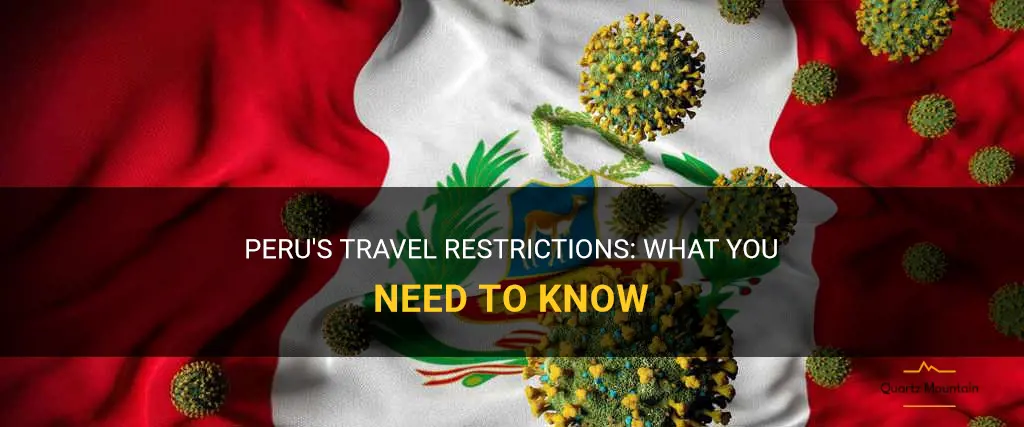
Peru, a land of ancient ruins, vibrant culture, and breathtaking landscapes, has long been a dream destination for travelers around the world. However, like many countries, Peru has implemented travel restrictions in response to the ongoing COVID-19 pandemic. These restrictions have not only impacted the tourism industry but also the countless adventurers who long to experience the magic of Machu Picchu, explore the colorful streets of Lima, and immerse themselves in the rich history that permeates the country. In this article, we will delve into the current travel restrictions in Peru, offering insights into the measures in place, the impact on tourism, and the hopes for a brighter future when travelers can once again embark on their Peruvian adventures.
What You'll Learn
What are the current travel restrictions to peru due to the covid-19 pandemic, are there any specific requirements or documentation needed for travelers entering peru, are there any exemptions or special considerations for certain types of travelers, such as essential workers or residents, how long are the travel restrictions expected to remain in place, are there any alternative methods of travel to peru, such as special flights or transportation arrangements.

The COVID-19 pandemic has caused widespread travel restrictions around the world, including to Peru. If you are planning to travel to Peru or are currently in the country, it is important to be aware of the current travel restrictions in place.
As of now, Peru has implemented a series of measures to control the spread of the virus. These measures include restrictions on international travel and mandatory quarantine for travelers entering the country.
Foreign travelers are currently prohibited from entering Peru, with some exceptions. Only Peruvian nationals, foreign residents, diplomats, and those with special authorization are allowed to enter the country. Travelers must also present a negative COVID-19 test result taken within 72 hours before their arrival in Peru.
Upon arrival, all travelers, including Peruvian nationals, must undergo a mandatory 14-day quarantine. This quarantine period must be completed at a designated location, such as a hotel or a private residence. Travelers are not allowed to leave their quarantine location during this period.
It is important to note that the situation is dynamic and can change at any time. Therefore, it is advisable to stay updated with the latest travel advisories from the Peruvian government and consult with the respective embassy or consulate if you have any questions or concerns.
If you are planning to travel to Peru in the future, it is recommended to check the current entry requirements and travel restrictions well in advance. This will ensure that you are prepared and can make any necessary arrangements before your trip.
In addition to travel restrictions, Peru has implemented various safety measures within the country to prevent the spread of COVID-19. These measures include the mandatory use of face masks in public spaces, social distancing protocols, and restrictions on public gatherings.
It is important to follow these guidelines and adhere to any local regulations while in Peru. This will not only help protect yourself but also contribute to the efforts to control the spread of the virus and keep the local community safe.
In conclusion, Peru currently has travel restrictions in place due to the COVID-19 pandemic. Foreign travelers are prohibited from entering the country, except for a few exceptions. All travelers, including Peruvian nationals, are required to undergo a mandatory 14-day quarantine upon arrival. It is important to stay updated with the latest travel advisories and follow all safety guidelines while in Peru.
Exploring Niagara County: Understanding Current Travel Restrictions and Guidelines
You may want to see also
If you are planning a trip to Peru, it is important to be aware of the specific requirements and documentation needed for entry into the country. Peru has certain regulations and procedures that must be followed to ensure a smooth and hassle-free entry.
First and foremost, all travelers entering Peru must have a valid passport. The passport must be valid for at least six months beyond the date of entry into the country. It is recommended to have a passport with at least two blank pages for entry and exit stamps.
In addition to a valid passport, visitors to Peru may also require a visa depending on their country of citizenship. Citizens of many countries, such as the United States, Canada, and most European countries, are permitted to enter Peru as tourists without a visa for up to 183 days. This period can be extended by applying for an extension at the immigration office in Peru.
However, some countries do require a visa to enter Peru. It is important to check the official website of the Peruvian consulate or embassy in your country to determine if you need a visa and what the requirements and application process are.
Another important requirement for travelers entering Peru is proof of onward or return travel. This means that you must have a valid travel ticket that shows you will be leaving Peru at the end of your stay. The immigration authorities may ask to see this proof upon entry.
Furthermore, all travelers must complete an entry form upon arrival in Peru. This form, called the Andean Migration Card or TAM, is provided onboard the flight or at the immigration desk. It must be filled out with relevant personal information and handed over to the immigration officer along with your passport.
Additionally, it is highly recommended to have travel insurance that covers medical expenses and emergency evacuation while in Peru. Although not a formal requirement, having travel insurance can offer peace of mind and protection against unforeseen events.
It is also important to note that Peru requires a yellow fever vaccination certificate for travelers arriving from certain countries, particularly in Africa and South America. It is advised to check the Centers for Disease Control and Prevention (CDC) or World Health Organization (WHO) websites for the most up-to-date information on vaccine requirements.
In summary, traveling to Peru requires a valid passport, a possible visa depending on your country of citizenship, proof of onward or return travel, completion of an entry form, and potentially a yellow fever vaccination certificate. It is always advisable to check the official sources and consult with the Peruvian consulate or embassy in your country for the most accurate and up-to-date information regarding entry requirements to Peru.
New Hampshire Travel Restrictions: What You Need to Know
In the midst of the COVID-19 pandemic, travel restrictions and regulations have become commonplace around the world. Many countries have implemented measures to control the spread of the virus, including mandatory quarantine periods and testing requirements for travelers. However, there are often exemptions or special considerations for certain types of travelers, such as essential workers or residents.
Essential workers, such as healthcare professionals, emergency responders, and other critical infrastructure workers, are often exempt from travel restrictions. This is because their services are deemed necessary for the functioning of society and cannot be easily replaced. These workers may be required to provide documentation or proof of their essential status in order to travel. They may also be subject to additional testing or quarantine requirements upon arrival or return.
Residents, or citizens and permanent residents of a country, are usually granted special considerations when it comes to travel restrictions. Governments understand that their citizens have a right to return to their home country and therefore allow them to enter, even during times of restrictions. However, residents may still be subject to testing or quarantine requirements upon arrival and may need to provide proof of residency, such as a valid ID or passport.
In some cases, countries may have special agreements or arrangements with certain countries or regions. For example, neighboring countries may have a travel bubble agreement, which allows residents from both countries to travel freely between them without the need for quarantine or testing. These agreements are usually based on low case numbers and a shared commitment to controlling the spread of the virus. Travelers from countries or regions with lower case numbers may also be granted exemptions from certain restrictions or requirements.
It's important to note that the specific exemptions and special considerations for essential workers, residents, or other types of travelers vary from country to country. Each government has the authority to define who qualifies as an essential worker and what documentation or proof is necessary. Similarly, the rules for residents and special agreements can differ significantly.
If you are an essential worker or resident planning to travel during this time, it is crucial to stay informed about the rules and regulations in both your home country and your destination. Check the official government websites or consult with a travel expert to ensure you have the most up-to-date information. It's also recommended to have all necessary documentation prepared and to be prepared to comply with any testing or quarantine requirements that may be in place. By following the regulations and guidelines, you can travel safely and responsibly during these challenging times.
Navigating the KLM Travel Restrictions: What You Need to Know
The travel restrictions imposed due to the ongoing COVID-19 pandemic have greatly impacted the global tourism industry. With borders closing and flights being grounded, many people are left wondering how long these restrictions will remain in place. While it is difficult to predict an exact timeline, there are several factors that will contribute to the duration of these travel restrictions.
The first and most important factor is the development and distribution of vaccines. As vaccines become more readily available and more people get vaccinated, it is expected that travel restrictions will begin to ease. Many countries are already prioritizing vaccination for frontline workers and vulnerable populations, with plans to roll out vaccinations to the general public in the coming months. However, it will likely take some time before a significant portion of the global population is vaccinated, and travel restrictions may remain in place until then.
Another factor to consider is the emergence of new COVID-19 variants. As new variants continue to be identified, countries may implement stricter travel restrictions to prevent their spread. This could include mandatory quarantine periods or additional testing requirements for travelers. The duration of these restrictions will depend on the effectiveness of current vaccines against new variants and the ability to control their spread.
The overall global COVID-19 situation will also influence the duration of travel restrictions. If cases continue to rise or new waves of infections occur, countries may choose to extend or reinstate travel restrictions. On the other hand, if cases decrease and the virus is brought under control, travel restrictions may be lifted.
Additionally, the success of international cooperation and coordination will play a role in determining how long travel restrictions will remain in place. Countries will need to work together to share information and implement consistent policies in order to effectively manage the global spread of COVID-19. The development of standardized testing procedures and vaccination certificates will also be crucial in lifting travel restrictions.
It is important to note that travel restrictions are not solely determined by individual countries. Many restrictions are implemented in accordance with recommendations and guidelines from international health organizations such as the World Health Organization (WHO) and the Centers for Disease Control and Prevention (CDC). As these organizations monitor the global situation and provide guidance, countries may adjust their travel restrictions accordingly.
In conclusion, the duration of travel restrictions will depend on several factors including the development and distribution of vaccines, the emergence of new variants, the overall global COVID-19 situation, international cooperation, and guidance from health organizations. While it is difficult to predict an exact timeline, it is reasonable to expect that these restrictions will remain in place for the foreseeable future. As the world continues to navigate the challenges posed by the pandemic, it is important to stay informed and follow the guidance of health authorities to ensure the safety of both travelers and the general population.
Exploring the Exotic Paradise: Understanding Zanzibar's Travel Restrictions
When it comes to traveling to Peru, there are various methods of transportation available. Besides the usual commercial flights, there are also alternative options that can provide unique travel experiences. Whether you're looking for a special flight or transportation arrangement, there are options to suit different preferences.
One alternative method of travel to Peru is by taking a charter flight. Charter flights offer a more personalized and exclusive experience compared to commercial flights. These flights can be arranged specifically for a small group or even for an individual traveler. Charter flights often provide more flexibility in terms of departure and arrival times, as well as the ability to choose your preferred airports of departure and arrival.
Another alternative method of travel to Peru is through luxury train journeys. Peru is known for its breathtaking landscapes and ancient ruins, and traveling by train allows you to witness these attractions in a unique way. There are several luxury train options available, such as the Belmond Andean Explorer or the Hiram Bingham train. These trains offer onboard amenities and services, allowing you to relax while enjoying the stunning scenery.
For those seeking an adventurous experience, another alternative method of travel to Peru is by joining an expedition cruise. These cruises take you along the Peruvian coast and offer the opportunity to explore remote regions and wildlife-rich areas. You can visit places like the Ballestas Islands, known as the "mini-Galapagos," or the Paracas National Reserve, home to diverse bird species and marine life.
Additionally, there are alternative transportation arrangements within Peru itself. One popular option is to take domestic flights to reach different regions of the country. Peru has several domestic airlines that offer flights to various destinations, allowing you to easily travel between cities and explore different parts of the country.
Another alternative transportation option within Peru is to take a long-distance bus. Peru has a well-developed bus network that connects cities and towns across the country. These buses range from basic to luxury options and provide an affordable and convenient way to travel within Peru.
In conclusion, there are alternative methods of travel to Peru, such as special flights or transportation arrangements. Whether you prefer a charter flight for a personalized experience, a luxury train journey to witness the stunning landscapes, an expedition cruise to explore remote areas, or domestic flights and buses to travel within the country, there are options available to suit different preferences. These alternative methods of travel can provide unique experiences and allow you to make the most of your trip to Peru.
Understanding Monkeypox Travel Restrictions and How They Protect Public Health
Frequently asked questions.
Yes, there are travel restrictions in place for Peru in response to the COVID-19 pandemic. As of now, foreign travelers are not allowed to enter Peru unless they have a special authorization or meet certain exceptions. These restrictions may change over time, so it is important to stay updated on the latest requirements before planning a trip to Peru.
To check if you meet the exceptions to enter Peru during the travel restrictions, you can visit the official website of the Peruvian government or contact the nearest Peruvian embassy or consulate. The government's website will provide you with the most up-to-date information on the entry requirements and exceptions, including the necessary documentation and procedures to follow.
As of now, all travelers entering Peru, including Peruvian citizens and residents, are required to undergo a mandatory quarantine for a period of 14 days. This quarantine will be supervised by the Peruvian health authorities, and travelers will be required to comply with the health and safety protocols during their quarantine period. It is important to note that these requirements may change, so it is advisable to check for updates before traveling to Peru.

- Michaela Krajanova Author Reviewer Traveller

- Cagri Burak Author Reviewer Traveller
It is awesome. Thank you for your feedback!
We are sorry. Plesae let us know what went wrong?
We will update our content. Thank you for your feedback!
Leave a comment
United states photos, related posts.

12 Must-Do Activities at The Battery Atlanta
- May 07, 2023
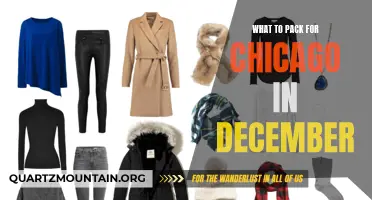
Must-Have Items for an Unforgettable December Trip to Chicago
- Jan 03, 2024
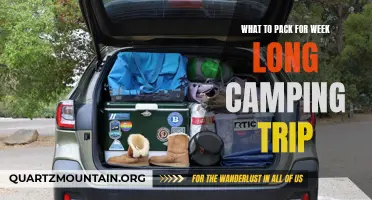
Essential Items to Pack for a Memorable Week-Long Camping Trip
- Feb 01, 2024

14 Affordable Family Activities to Do in Panama City Beach
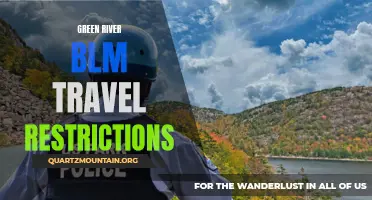
Understanding the Green River BLM Travel Restrictions: What You Need to Know
- Sep 08, 2023

12 Activities in Corolla NC When It Rains

Latest updates and travel restrictions for entering Peru
The latest news and travel restrictions for entering Peru were updated in March 2024.
Traveling to Peru in 2024
Peru is a safe country for travelers , and we have thousands of travelers from all over the world who are arriving to visit the most extraordinary places like Machu Picchu. Still, like any destination, there are some safety considerations that visitors should keep in mind. Here are some tips to help ensure a safe and enjoyable trip to Peru:
- There have been no more strikes or civil unrest in Peru since January 2023. All travels to Peru, Machu Picchu, Inca Trail are back to normal.
- Be aware of petty crime: Pickpocketing and other forms of petty crime can occur in popular tourist areas, so it's important to keep an eye on your belongings and avoid carrying large amounts of cash or valuable items. Use common sense and stay alert, especially in crowded areas and on public transportation.
- Use reputable tour operators : When booking tours or activities, choose reputable tour operators and travel providers with good reviews and established reputations. This can help ensure a safe and enjoyable experience.
- Take precautions in remote areas: If you're traveling to remote areas or hiking in the mountains, be sure to research the area and take appropriate safety precautions, such as hiring a guide or traveling with a reputable tour company.
- Follow health and safety guidelines: As with any destination, it's important to follow health and safety guidelines related to COVID-19 or other health risks. This may include wearing masks, practicing social distancing, and following local regulations and restrictions.
- Respect local customs and traditions : Peru has a rich culture and history, and it's important to respect local customs and traditions, including dress codes and religious practices.
Latest travel-related FAQs.
Is traveling to peru safe right now.
Yes, travel in Peru is back to normal after the political crisis in January. All tours are 100% confirmed, and travel to Machu Picchu is safe. If you have plans to come to Peru, this is the best time to travel, as we have great deals on hotels and flights, and Machu Picchu has fewer visitors.

Is Machu Picchu and the Inca Trail open?
Machu Picchu is fully open, and hundreds of travelers are visiting the Inca citadel. The Citadel was temporarily closed from January 21st to February 11th, 2023; this measure was taken to prevent any incidents due to the political crisis in Peru.
The Inca Trail has been fully open since March 1st, 2023. Every day, we have group tours departing to Machu Picchu and the Inca Trail.
All tours to Machu Picchu after March 1st, 2023, are confirmed.
Is the airport in Cusco and others operating?
Yes, the airport in Cusco is open, and flights are operating normally.
Are the Machu Picchu Trains running?
Yes, the Machu Picchu trains, Inca Rail, and Peru Rail are in operation, and we have several trains daily.
Is Peru/ Cusco/ Machu Picchu safe for travelers?
Yes, 100% safe to travel. Despite warnings from many countries that advised people not to travel to Peru, Cusco and Machu Picchu are among the safest towns in Peru for travelers.
International flights arriving in Peru
There are no longer travel restrictions to enter Peru related to Covid 19. Travelers must verify with the airline company if anything is needed to board the flights.
Domestic flights in Peru
From October 1st, there are no restrictions to board domestic flights in Peru.
Restrictions while traveling in buses in Peru
- No restrictions to travel on buses.
- Contact the company to verify if they have any requirements.
Restrictions in Hotels, Restaurants
- There are no travel restrictions.
- Contact the hotels or restaurants to verify if there are any special requirements.
Machu Picchu restrictions
- Inca Trail Tours : There are no restrictions on entering the Inca Trail.
- Machu Picchu Citade l: No restrictions
- Machu Picchu bus : No restrictions.
- Machu Picchu trains : No restrictions.
Travelers Flying out of Peru
Contact your embassy or flight company; this depends on the country of destination policy.
The Classic Inca Trail , 4 days to Machu Picchu - 2024, is open to book, and some dates are selling out fast.
Peru Travel restrictions to enter the country, updated on October 23rd, 2022.
Face masks and vaccination cards are no longer mandatory in Peru in open spaces and well-ventilated places. You must only wear only if you have symptoms of Covid 19.
Wearing masks and vaccination cards will still be mandatory when traveling by car or train and in enclosed spaces.
From October 1st, all Peruvians, resident foreigners, and non-resident foreigners aged 12 or over have 2 options when entering Peru.
- Non-resident foreigners over 12 years or older must be fully vaccinated according to their country's protocol (This is for most tourists arriving in Peru)
- Peruvians and foreign residents aged 12 years and older must provide proof that they have received three (3) doses of vaccination against COVID-19 in Peru or abroad.
- Children under 12 can board the plane as long as they are asymptomatic. This rule applies to Peruvians and foreigners.
Option 2:
- Non-vaccinated travelers can present a negative molecular test dated 48 hours before boarding.
Travel restrictions for domestic flights in Peru
- From October 1st, 2022, COVID-19 Vaccination cards or PCR/Antigen COVID tests are not required anymore.
- Face masks are optional for passenger
Peru Land border restrictions
Land borders with Ecuador, Bolivia, Basil, and Chile are now open.
- Bolivia: Desaguadero, Kasani, Tillai, CEBAF Desaguadero
- Ecuador: Tumbes, Huaquillas
- Brasil: Iñapari (Madre de dios)
Travelers must show the following:
- Current documents (Passport or National ID in case of Latin America).
- All Peruvians and residents over 18 must prove they have received three (3) doses.
- All Peruvians and residents from 12-17 years old must provide proof of double vaccination.
- Travelers under 12 can enter as long as they are asymptomatic
- Non-vaccinated travelers must have a negative PCR test taken within 48 hours.
- Foreigners must show a full vaccination card according to their country's protocol
Travelers going to Chile from Peru:
- Contact your embassy to request more information
Travel Restrictions inside Peru
Wearing a mask is optional in all public areas:
- Wearing a mask is not mandatory anymore in public areas or well-ventilated places.
- A double mask is mandatory in buses, trains, hospitals, clinics, or enclosed spaces; 1 disposable mask + 1 reusable fabric mask or 1 KN95 mask.
- Face shields are not required anymore.
- Vaccination cards are not required anymore.
What is new when traveling to Machu Picchu?
Train companies are no longer requesting face shields.
- Machu Picchu: Wearing a mask is optional in Machu Picchu
- Inca Trail to Machu Picchu: Wearing a mask at checkpoints is optional; you need to wear a mask when you are traveling by bus and train
- Inca Rail: A double or 1 KN95 mask is mandatory .
- Peru Rail: A double or 1 KN95 mask is mandatory .
- Bus to Machu Picchu: A double mask , or 1 KN95 mask, is mandatory .
What happens if I show symptoms or test positive for Covid?
- The National Health Authority can test passengers for COVID-19 and implement additional health measures for positive cases.
- If you show symptoms of COVID-19, a physician will examine you. The MINSA will offer transportation to medical services or the isolation unit if necessary.
- In the Affidavit, you must provide the address and phone number of your 14-day isolation place. The Minsa does a health check every three days. Monitoring ends after 14 days.
- If you must leave the country before the 14-day quarantine period, you must pay for and undergo an additional molecular test on the 6th day after your arrival. If your test results are negative, the health department will release you. You may be quarantined at Villa Panamericana or another temporary facility if you do not comply.
How to Stay Safe While Traveling in Peru
Taking basic precautions is the best way to stay safe while traveling in Peru. First, make sure you are up-to-date on all your vaccinations. Second, wash your hands often. Third, avoid touching your face. Fourth, clean and disinfect surfaces that you come into contact with. Fifth, stay in well-ventilated areas as much as possible. Finally, wear a face mask if you cannot avoid close contact with others.
If you get sick while traveling in Peru, it is essential to seek medical attention immediately. Many hospitals and clinics in Peru can provide you with the necessary care.
Are covid, antigen, and/or PCR tests available for U.S. citizens in Peru?
Yes, you can take a Covid 19 test in Peru; hundreds of laboratories and clinics can issue a covid test certificate allowing you to travel in case your flight company requests you to the U.S. or any other country.
- Rapid/Antigen test : it takes around 30 minutes to get the results, and the average cost is around 120 soles.
- PCR/Molecular test : it takes around 5 hours to get the results, and the average cost is around 280 soles
- People who show symptoms of COVID-19 have to dial the toll-free number 113, send a WhatsApp to +51-952-842-623, or email [email protected] . The answers are usually only in Spanish. For more information on requesting a COVID-19 test through MINSA, visit this website (in Spanish only): https://www.minsa.gob.pe .
- Beware, all travelers are responsible for the costs of testing for COVID-19.
- For information on how to protect yourself from COVID-19 while traveling, visit the CDC website .
More Information Covid-19
- Tourism: All Peru travelers can visit the iPeru website for the latest tourist guide. iPerú has a WhatsApp number that will answer questions in English: (+51) 944 492 314.
- For official COVID-19 health-related information and statistics, visit the Peruvian Ministry of Health website (in Spanish): https://www.gob.pe/8736-coronavirus-informacion-para-viajeros .
- For more information and updates on the latest decrees and official publications, visit https://elperuano.pe/ .
- COVID-19 Information page for travelers on travel.state.gov
- CDC page on COVID-19
- Country Information Page and Travel Advisory
FAQs About Travel Restrictions in Peru
What can i do if i have symptoms of covid 19 while traveling in peru.
If you are having symptoms of Covid 19, report immediately to your tour guide, hotel or you can call INFOSALUD:
- (+51) 952842623 (Only WhatsApp Available)
- [email protected]
What if I test positive for Covid 19 while traveling in Peru?
Report immediately to the hotel, tour operator, tour guide, or INFOSALUD:
Is tourism safe in Peru?
Traveling in Peru, traveling to Cusco and Machu Picchu is safe.
Are the land borders open between Peru, Ecuador, Chile, and Bolivia?
Land borders are open; for travel restrictions, you need to contact your embassy or the country of destination to verify travel restrictions.
The Classic Inca Trail , 4 days to Machu Picchu - 2023, is open to book, and some dates are selling out fast.
Peru Travel restrictions, updated on August 4th, 2022.
The latest travel restrictions for Peru are that all travelers must be fully vaccinated or have a negative COVID-19 test result within 48 hours of their flight. They must also complete a Health Declaration form before arriving in the country.
- Non-resident foreigners must be fully vaccinated according to their country's protocol, regardless of their origin.
- Peruvians and foreign residents aged 18 years and older must provide proof that they have received three (3) doses of vaccination against COVID-19 in Peru or abroad.
- Travelers aged 12 to 17 must prove double vaccination against COVID-19 in Peru or abroad.
- Children under 12 can board the plane without a PCR test if they are asymptomatic. This rule applies to Peruvians and foreigners.
- Non-vaccinated travelers can present a negative molecular test dated no more than 48 hours before boarding.
- The use of a double mask is mandatory, or 1 KN95 mask
- All travelers must complete the "Traveler's Electronic Health Affidavit and Geolocation Authorization " within 72 hours before the trip. Your legal guardian must complete this document if you are minor or dependent.
Travel restrictions for domestic flights in Peru:
- All non-resident travelers over the age of 12 require double vaccination
- Triple vaccination for Peruvians over 18.
- Travelers under 12 can enter without a PCR test as long as they are asymptomatic
- Non-vaccinated travelers must present a negative PCR test taken within 48 hours.
- All travelers must complete the "Traveler's Electronic Health Affidavit and Geolocation Authorization ."
Peru border restrictions:
Land borders with Ecuador, Bolivia, Basil, and Chile are open now. Travelers must show the following:
- Proof of COVID-19 vaccination certificate with the total dose.
- Or PCR test (taken no more than 48 hours).
Wearing a mask is mandatory in all public areas:
- Áncash, Ica, and Lima, the usage of face masks in open places is optional
- In all other regions, masks are mandatory in all public places; 1 KN95 mask or 1 disposable mask + 1 reusable fabric mask is required.
- Machu Picchu: It is mandatory to wear a mask; surgical, reusable fabric mask, or a KN95
- Inca Trail to Machu Picchu: It is mandatory to wear a mask in public places or around people, a surgical, reusable fabric mask, or a KN95. You can remove it when hiking.
- Inca Rail: To board the trains, you must be fully vaccinated or have a negative Covid 19 test. The use of a double mask is mandatory, or 1 KN95 mask.
- Peru Rail: You must be fully vaccinated or have a negative Covid 19 test to board the trains. The use of a double mask is mandatory, or 1 KN95 mask.
- Bus to Machu Picchu: You must be fully vaccinated or have a negative Covid 19 test to board the buses. The use of a double mask is mandatory, or 1 KN95 mask.
- If you must leave the country before the 14-day quarantine period, you must pay for and undergo an additional molecular tes t on the 6th day after your arrival. If your test results are negative, the health department will release you. You may be quarantined at Villa Panamericana or another temporary facility if you do not comply.
The best way to stay safe while traveling in Peru is to take basic precautions. First, make sure you are up-to-date on all your vaccinations. Second, wash your hands often. Third, avoid touching your face. Fourth, clean and disinfect surfaces that you come into contact with. Fifth, stay in well-ventilated areas as much as possible. Finally, wear a face mask if you cannot avoid close contact with others.
Peru Travel restrictions, updated on December 15th, 2021.
New restrictions to enter the country from December 10th, 2021, to January 2nd, 2022
- From December 10th, 2021, a physical or virtual card of complete vaccination is required to enter enclosed spaces for anyone over 18 years old. This restriction includes trains from Machu Picchu, restaurants, and malls.
- Fully Vaccinated travelers are no longer required to present a PCR test; they must have completed the vaccinations 14 days before or more from when they board the flight to Peru. (Important: you must verify with your airline company if you have any tests to board the flight to Peru).
- Travelers who have completed the vaccination 14 days or less from entering Peru must show a Negative PCR test taken within 72 hours.
- Non-vaccinated travelers must present a negative PCR test taken within 72 hours.
- Travelers under 12 years old will enter the country without a PCR test; they must be healthy.
- Travelers who show symptoms when entering the national territory must complete a mandatory 14 days of isolation.
- All travelers must complete the "Traveler's Electronic Health Affidavit and Geolocation Authorization " within 72 hours before the trip.
Country restrictions, Inside Peru from December 10th, 2021:
- People over 18 years of age who wish to enter venues for economic and religious activities must present a physical or virtual card to prove that they have completed their vaccination program against COVID-19 in Peru or abroad.
- All travelers over 18 years old need to present a physical or virtual card of complete vaccination to board domestic flights or a negative PCR test taken within 72 hours.
Border restrictions, Peru Border closure:
- All land borders with Colombia, Bolivia, Ecuador, Chile, and Brazil are closed. International land transportation is not allowed in these countries. Travelers from these countries must book a flight to Lima first, then a domestic flight to any province in Peru.
- Using masks is mandatory in all public places; 1 KN95 mask or 1 disposable mask + 1 reusable fabric mask is required.
- Face shield is not required anymore in public transportation. However, the train ride to/from Machu Picchu is still needed.
What is new when traveling to Peru?
- Train companies to/from Machu Picchu request proof of complete vaccination; this can be a physical card or virtual. Non-Vaccinated travelers will not be allowed to board the trains: IncaRail requests from December 10th, while PeruRail asks for all travelers from December 15th, 2021.
- To board domestic flights in Peru, complete vaccination is required for all travelers over 18. Otherwise, they can present a negative PCR test taken within 72 hours.
- Using KN95 masks is mandatory in all public places, or a double mask (1 disposable mask + 1 reusable fabric mask)
Alert Levels in all of Peru until January 16th, 2022:
Moderate level: Curfew from 2:am to 4:am
- All other provinces in Peru
High Alert Level: Curfew from 23:pm to 4:am
- Bagua, Chepén, Concepción, Huamanga, Huancavelica, Santa, Sullana, Piura, Sechura, Talaram, Virú
Very High Alter: Curfew from 10 pm to 4:am
Extreme Alert: Mobday to Saturday curfew from 21:pm to 4:am, Sundays curfew from 4:pm to 4:am
Peru Travel restrictions, updated on October 9th, 2021.
All passengers entering Peru must have a negative PCR test taken within 72 hours before boarding a flight to Peru (both vaccinated and unvaccinated guests must present the PCR test results)
Contrary to the Government's latest announcement, unvaccinated passengers can still enter the country. They must show a negative PCR test and fill in the Affidavit ( link ) required to board the flight to Peru. The sworn health affidavit must be filled up within 72 hours or less.
Passengers under the age of 12 need not provide a negative PCR test but a medical certificate of good health.
Travelers who have tested positive for COVID-19 in the past 3 months can provide evidence of discharge instead of being negative by PCR.
Travelers from Brazil are again allowed to enter Peru without mandatory isolation.
Passengers from South Africa are not allowed to enter
Machu Picchu and the Inca Trail are again running at 100% capacity.
Huayna Picchu Mountain and Machu Picchu Montaña are now open to hiking.
Peru Travel restrictions were updated on September 25th, 2021.
All travelers entering Peru must have a negative PCR test taken within 72 hours before boarding the flight to Peru (fully vaccinated and non-vaccinated guests must show the PCR test)
Contrary to the last announcement from the Government, travelers without vaccination are still allowed to enter the country. They need to show proof of a negative PCR test and fill up an affidavit ( link ) necessary to board the flight to Peru. This form must be filled up within 72 hours or less.
Travelers under 12 need not provide a negative PCR test but a medical certificate of good health.
Travelers who have tested positive for COVID-19 in the past 3 months may provide evidence of discharge instead of a negative PCR test.
Travelers from Brazil and South Africa were again allowed to enter Peru without Quarantine.
Machu Picchu and Inca Trail are once again operating at 100% capacity.
Peru Travel restriction, updated on September 18th, 2021.
Peruvians, resident foreigners, and non-resident foreigners whose final destination is Peru, passengers, regardless of the country of origin, must have a negative molecular test with a result date no longer than 72 hours before boarding the flight and have completed the respective doses of vaccines according to the requirements of the country where they were vaccinated."
You must be fully vaccinated to enter Peru, and also, you will need to have a negative PCR test taken 72 hours or less from the time you are boarding the flight. The rule is not clear about the Antigen test.
According to this new restriction, from September 20th, 2021, only fully vaccinated travelers will be allowed to enter Peru. Unvaccinated travelers might not be allowed to enter Peru.
These new rules contradict the last restrictions published just a week ago, where fully vaccinated travelers were not required to show tests.
Entry is suspended until October 3rd, 2021, for all travelers, residents, non-resident foreigners from South Africa , or foreigners who have stayed there within the past fourteen (14) calendar days.
Peruvians and foreigners entering Peru from South Africa or stopping in that country will be subject to fourteen (14) calendar days of compulsory isolation at their homes, residences, or other temporary isolation centers, counting from the country's arrival.
Before entering the country, all travelers must fill out an affidavit ( link ) necessary to board the flight to Peru. This form must be filled up within 72 hours or less.
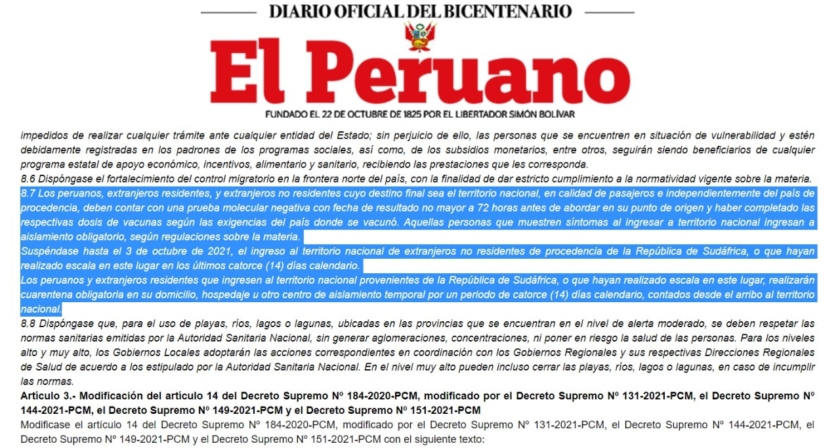
Restrictions to enter Peru, updated on September 14th.
Important update for travelers arriving in peru this september.
Fully Vaccinated travelers no longer need to provide a PCR or Antigen test to enter Peru.
Travelers holding a double vaccination certificate no longer need to show a negative Covid 19 test when entering Peru.
Vaccinations that are accepted in Peru are:
- Pfizer/BioNTech
- Johnson & Johnson
- Oxford/AstraZeneca
- Serum Institute of India, Sinopharm, and Sinovac.
Non-vaccinated or single-dose vaccines still require a negative PCR test taken no later than 72 hours before the arrival to the country. Please note that the Antigen tests are no longer valid; we recommend contacting your airline company for more details.
Before entering the country, all travelers must fill out an affidavit ( link ) necessary to board the flight to Peru. This form must be filled up within 72 hours or less.
Travels from South Africa are still suspended.
Machu Picchu has been open at a total of 100% capacity again since September 1st, 2021. Huayna Picchu Mountain and Montaña Machu Picchu are still closed but is expected to open soon.
The Government of Peru has classified the regions on different levels:
The Government has arranged a series of targeted measures to face the COVID-19 pandemic in Peru. Locate your place of visit and the standards that you must comply with according to the alert level from September 6th to 19, 2021 (Supreme Decree No. 151-2021-PCM):
Provinces with a high up level
Luya and Chachapoyas (Amazonas), Cangallo, La Mar and Paucar del Sara Sara (Ayacucho), Tahuamanu (Madre de Dios), Azángaro, Carabaya, Chucuito, El Collao, Huancané, Lampa, Sandia and Yunguyo (Puno).
- Private cars are allowed on Sundays.
- Curfew: Monday to Sunday from 11:00 pm to 4:00 am
- Commercial establishments must be closed one (01) hour before the curfew.
- Inter-provincial land transportation: allowed.
It's not allowed: Large-scale events, carnivals, traditional festivals.
Provinces with a moderate alert level
All other provinces, including Cusco, Sacred Valley, and Machu Picchu.
- Curfew: Monday to Sunday from 1:00 am to 4:00 am (This will not affect the tours to Machu Picchu)
- Commercial establishments must be closed one hour before the curfew, but Lima and Callao must be closed two hours before.
Peru Travel restrictions during Machu Picchu Tours:
During this pandemic, traveling to Machu Picchu is safe; all our tours are organized with all safety protocols to prevent Covid 19.
When participating in our tours, you must follow the following restrictions.
- Temperature checks are mandatory.
- You need to wear a face mask in public areas like Machu Picchu.
- When you are hiking, you can remove it to make it easy to breathe
- Whenever you are around people, tour guides explanation, or checkpoints, you need to wear a mask
- You must wear a face mask and shield when traveling by bus or train.
Peru Travel restrictions were updated on June 22nd.
Great news for all nature and adventure lovers, the Classic Inca Trail to Machu Picchu is opening this July 15th, 2021. All permits for the 2021 season will be released this June 25th at 9:am, and some dates will sell out immediately. We recommend that all travelers waiting for this trek book get one of the limited spots to hike this amazing trail as soon as possible.
Only 250 people, including guests, tour guides, chefs, and porters, will be allowed daily. This is only 50% of its total capacity.
The Peruvian Government has implemented the following safety measures to reduce the spread of Covid 19 in Peru.
1.- Passengers entering must present a negative molecular test (PCR), Antigen test, or an epidemiological discharge medical certificate before boarding the plane. Test results must be obtained within 72 hours before check-in.
2.- All travelers must fill out an affidavit ( link ) necessary to board the flight to Peru.
3.- Travel restrictions to Brazil, India, and South Africa have been extended until July 11th
4.- For domestic flights in Peru, no Covid test is required; however, you must fill out an affidavit ( link ) and wear face shields and masks
5.- No quarantine is required upon arrival to Peru, except for travelers from India, Brazil, and South Africa, who must complete a mandatory 14 days quarantine before arriving in Peru.
6.- Sunday lockdowns in Cusco are over, and you can travel to Machu Picchu on any date.
Moderate Alert:
Ucayali, Loreto: Curfew from 12 am to 4 am; everything open at 60% capacity
High Alert:
Cajamarca, Huancavelica, Huanaco, Ica, La Libertad, Lambayeque, Lima, Madre de Dios, Piura, Puno, San Martin, Tumbes: Curfew from 11 pm to 4 am, everything open at 50% capacity
Very High Alert:
Amazonas, Ancash, Apurimac, Ayacucho, Cusco, Junin, Moquegua, Pasco, Tacna: Curfew from 10 pm to 4 am; archeological sites and museums are open at 40% capacity, and partial restrictions for vehicles on Sundays. Machu Picchu and other places are open on Sundays.
Extreme Alert:
At this level, we have specific provinces in different regions, including Cusco.
In Amazonas ( Chachapoyas ), Arequipa ( Arequipa, Camaná, Caravelí, Castilla, Caylloma and Islay ), Ayacucho ( Lucanas ) and Cusco ( Espinar ). Curfew form 9 pm to 4 am, Sunday mandatory lockdown.
Total Lockdown in Arequipa:
Epidemiological fence in Arequipa, all air and land traffic is suspended until July 11th to prevent the spread of the Delta variant of Covid found in Arequipa. If you have travel plans during this time, please reschedule.
To enter Peru, you only need a PCR or Antigen test and fill out the Affidavit; then, you can travel without restrictions in Cusco and Machu Picchu. You will always be required to wear a mask in public areas and a face shield whenever you travel on buses and trains to Machu Picchu.
Peru Travel restrictions updated on March 11th, 2021
Great news for all International Travelers. From March 15th, the mandatory 14-day quarantine is over. Starting from March 15th, all travelers arriving in Peru don't need to keep the quarantine. However, there are still a few restrictions.
- All travelers must present a negative Covid 19 test to enter Peru. This test must be no later than 72 hours from travel time.
- A sworn health statement is required; click here to download the document.
- The use of masks is mandatory in all public areas.
- We are organizing tours to Machu Picchu with all safety protocols
Peru Travel restrictions updated on March 2nd, 2021
Machu Picchu was closed all February 2021 due to the second wave of Covid 19. Machu Picchu reopened on March 1st, 2021, and now we have travelers arriving every day. All trekking tours, tours by train, and day tours are available.
This March 2021 will depart with all safety measures and guidelines with Covid 19 protocols. See restrictions below.
New Peru Travel restriction with Covid 19 in 2021
- All international travelers arriving in Peru must stay in a mandatory 14 days quarantine. The quarantine can be completed at any hotel.
- The 14-day quarantine can end on the 6th day if you take a Covid test negative for Covid 19.
- Flights longer than 8 hours are still suspended.
Peru Travel restrictions updated January 23rd, 2021
New Safety Protocols for International Travels
Due to the new variant of Covid 19 found in many countries and the 3 first cases in Peru, the Peruvian Government passed a series of security protocols to help prevent the spread of the virus and minimize the second wave's effects in Peru. All our tours are confirmed after March 1st, 2021; however, if you cannot travel, you can reschedule your tour at any time in the future.
- From January 4th . All travelers arriving in Peru must complete a mandatory 14-day quarantine. On the 6 th day, travelers can leave quarantine if they test negative on a molecular Covid-19 test.
- The 14- days quarantine can be completed at any location of their choice (hotels, hostels, Airb&B). The cost of this quarantine is on travelers.
- All travelers must have a negative molecular test for Covid-17 to enter Peru. This test must be no later than 72 hours from when it was taken.
- Flights from Europe will be suspended until January 31st. Same with flights longer than 8 hours.
- Non-resident travelers from Europe or South Africa (or travelers who have transited there in the last 14 days) cannot enter Peru until January 31st, 2021.
As of January 13th, 2021, there is a daily curfew in all regions of Peru. The curfews in the areas are ranked from Moderate to Very High .
Moderate level alert
- Amazonas, Ayacucho, Huancavelica, Loreto, San Martín y Ucayali.
- Curfew: 11:00 p. m. a 4:00 a. m.
High-level alert.
- Arequipa, Apurímac, Cajamarca, Provincia del Callao, Cusco , Huánuco, La Libertad, Lima Metropolitana, Madre de Dios, Moquegua, Pasco, Puno y Tumbes.
- Curfew: 9:00 p. m. a 4:00 a. m.
- Private transportation is not allowed on Sundays
Very High-level alert
- Ancash, Ica, Junín, Lambayeque, Lima provincias, Piura y Tacna.
- Curfew: 11:00 p. m. a 4:00 a. m
- Lockdown on Sundays
Update on October 28th:
The Ministry of Transport and Communications (MTC) has announced that from November 1st, Peru will open 25 new international flights, including the USA, Canada, Mexico, and the Caribbean. With this further expansion, Peru will be allowing 36 destinations.
From October 5th, Peru has allowed flights from Latin America as part of the Economic Reactivation's Phase 4. The expansion to more international destinations is with the Ministry of Health (MINSA), and all travelers must comply with international flights' health protocols.
The new destinations are:
- Los Ángeles
- Ciudad de México
- Montego Bay
República Dominicana
- Toronto (Canadá)
- Foz de Iguazú
- Porto Alegre
- Buenos Aires
El Salvador
- San Salvador
From October 5th, Peru has opened to 11 destinations from Lima to Guayaquil, La Paz, Quito, Bogotá, Santa Cruz, Cali, Medellín, Panamá, Asunción, Montevideo, and Santiago . It's important to note that all passengers must have a negative molecular test for COVID-19.
Machu Picchu : Although international flights are allowed to Peru, Machu Picchu is closed until November 1st. From November 1st to November 15th, Machu Picchu is reopening with free entry for Peruvian and is completely sold out. For International, Travelers is expected to be open this November, but no date has been confirmed yet.
Inca Trails : the Classic Inca Trail 4-days remain closed; only the Shorter Version (2 days Inca Trail) is opening this November 1st; however, due to the current situation of the country as we are recovering from this pandemic, international visitors are not allowed yet officially. Together with Machu Picchu, the Inca Trails are expected to reopen this November as part of the Economic reactivation Phase 4.
Flexible options for Existing bookings.
All bookings are now transferable to any date in the future; however, they remain non-refundable. The permits, tickets, trains, hotels, and other expenses we incur to organize our tours are not offering any refunds but are flexible in rescheduling.
In response to COVID-19, we've introduced the option to convert the amount you've paid to credit for future tours run by TreXperience. We know it is challenging to decide on a new date due to the current situation and worldwide travel restrictions. For this, we are introducing new flexibilities for all our guests.
- Inca Trail Tours: You can use 100% of your deposit to rebook on any date until December 31st, 2023. Please, keep in mind that permits are released the year before, around the weeks of October. For instance, if you want to rebook for 2021, you must provide a travel date before October 2020. See HERE for more information about booking for Inca Trail 2021. Please note that once permits are booked, under normal circumstances, these permits are non-transferable and non-refundable.
- Alternative Treks and Tours by Train: You can use the 100% to rebook on any date until December 31st, 2023. You can use the amount paid to book the same tour or any other tour offered by TreXperience. The tours can be rescheduled at any time up to 48 hours before the departure at no cost.
Flexible dates for Future bookings.
- Inca Trail Tours: Book your tours in advance and benefit from the 10% discount on our group departures. For all tours for 2020 and 2021, you can change the date of departure at no cost until September 30th, 2020.
- Alternative Treks and Tours by Train: Book the best alternative tours and benefit from the group departure discounts. For all future bookings, if you can't travel or travel restrictions, you can change departure time as many times as necessary with no charges.
Peru Coronavirus Travel Restrictions FAQs
My tour has been suspended or canceled - what happens.
Suppose you have a tour scheduled to depart between March 16th, 2020, and October 5th, 2020. You can rebook the same or any other tours with TreXperience at no extra fee. All rebookings will also automatically apply the 10% discount, or you can have a complimentary day tour for all your party (City tour, Sacred Valley, Humantay Lake, or Rainbow Mountain tour).
If you have a tour from October 5th onwards, please contact us if you cannot travel; the TreXperience team will help you reschedule your tour at no extra cost.
How do I convert my deposit into credit for future tours?
Please email [email protected] or call +51 957 011 937; you can contact us on WhatsApp and the same number; you need to specify the date number of the travelers.
When do I need to provide a new travel date?
For Inca Trail tours, if you plan to rebook for this year, 2020, the earlier you provide a travel date, the better to get your preferred date. Please keep in mind that permits tend to sell out fast. For 2021, the ideal is to provide a travel date before October of this year. The 2021 Inca Trail will be released in the first weeks of October 2020.
For Alternative tours, you can rebook at any time in the future, depending on departure availability. The tours can be rescheduled in need at no cost at all.
What happens if we still have travel restrictions on my travel date?
If we still have travel restrictions when your travel date, we will assist you and rebook at no extra cost.
Can I change the number of travelers and names?
Only for rebookings will you be able to transfer your reservation and deposit to any friend or family member. For Inca Trail, tours can be done before we book the new permits. Please get in touch with us at [email protected].
A Humble Message from TreXperience
TreXperience is a local Peruvian tour company. We are committed to helping all our guests, staff, and community during this challenging situation. Initially, we never thought Coronavirus would harmfully affect the whole world. We know things are getting tough everywhere; everything has stopped, and millions of jobs are lost in Peru, especially in Cusco, a 90% tourism-based city. TreXperience has decided not to lay off any of our regular staff, and we are supporting monthly bonuses to all our porters, chef, and guides.
If you cannot reschedule, the non-refundable deposit will go straight to support our porters, chefs, and all our staff in a more vulnerable situation.
If you cancel your tour now and decide to travel to Peru later in the future, please send us an email, and we will reactivate your booking, and your deposit will be used for your new tour. This way, we will ensure you do not lose any money, but you also help us support our staff.
Warm regards
Priscila Coronel
Founder of TreXperience
Related Blogs
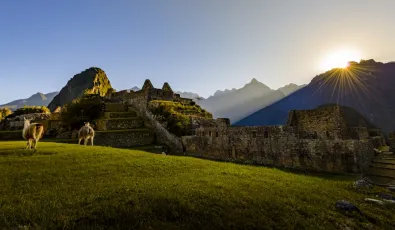
Bravo, this excellent idea is necessary just by the way
Hi trexperienceperu.com…
Hi trexperienceperu.com admin, You always provide clear explanations and step-by-step instructions.
Cool, I've been looking for this one for a long time
Thanks, I've been looking for this for a long time
Add new comment
- No HTML tags allowed.
- Lines and paragraphs break automatically.
- Web page addresses and email addresses turn into links automatically.

Juan Coronel - Author
You are using an outdated browser. Upgrade your browser today or install Google Chrome Frame to better experience this site.
Peru Traveler View
Travel health notices, vaccines and medicines, non-vaccine-preventable diseases, stay healthy and safe.
- Packing List
After Your Trip
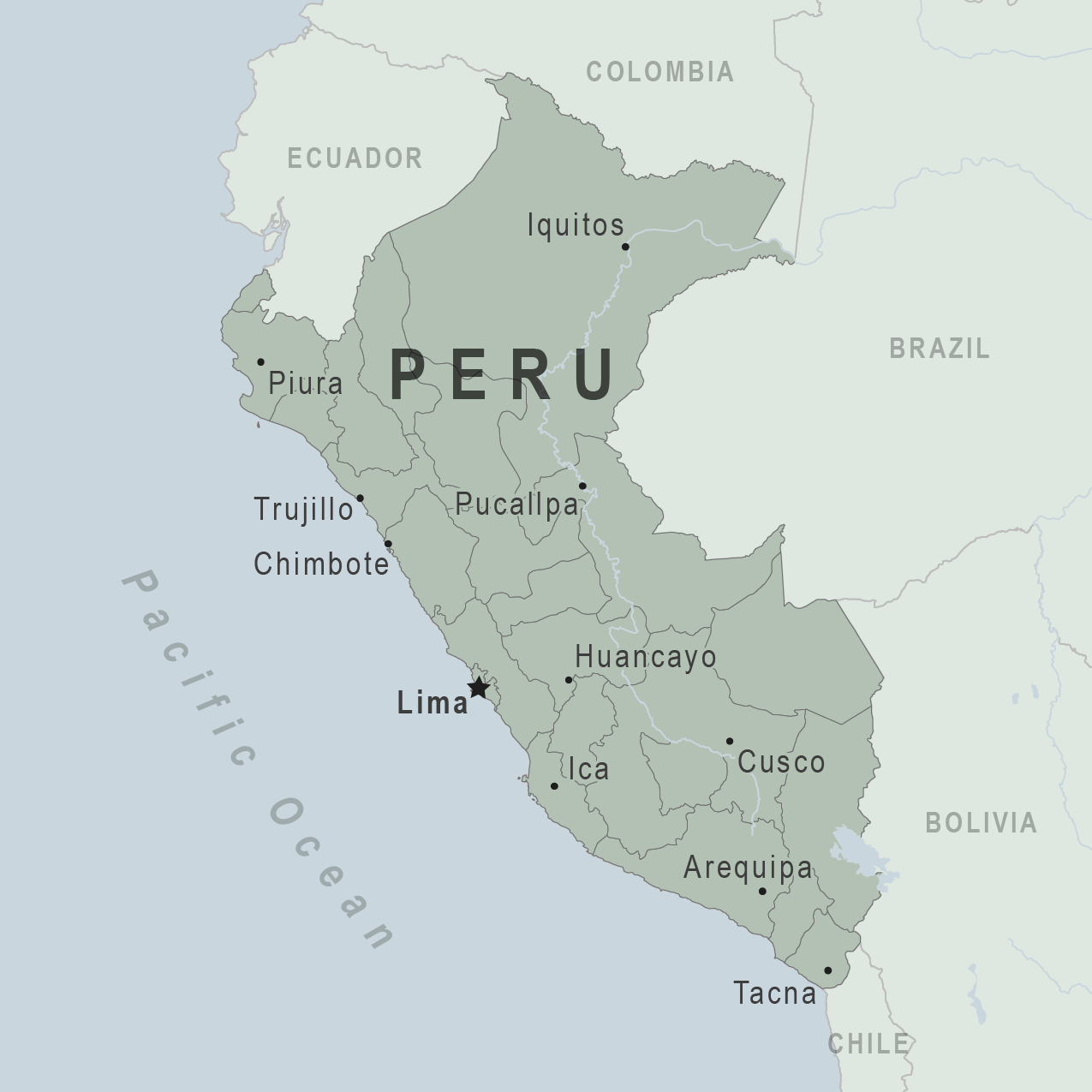
Be aware of current health issues in Peru. Learn how to protect yourself.
Level 1 Practice Usual Precautions
- Oropouche Fever in the Americas June 05, 2024 There are outbreaks of Oropouche fever in parts of Brazil, Bolivia, Peru, Colombia, and Cuba. Travelers to affected areas should take steps to avoid bug bites. Destination List: Bolivia, Brazil, Colombia, Cuba, Peru
- Dengue in the Americas May 16, 2024 Dengue is a risk in many parts of Central and South America, Mexico, and the Caribbean. Some countries are reporting increased numbers of cases of the disease. Travelers to the Americas can protect themselves by preventing mosquito bites. Destination List: Argentina, Brazil, Colombia, Costa Rica, Curaçao, Ecuador, including the Galápagos Islands, French Guiana (France), Guadeloupe, Guatemala, Guyana, Honduras, Martinique (France), Mexico, Nicaragua, Panama, Paraguay, Peru, Uruguay
⇧ Top
Check the vaccines and medicines list and visit your doctor at least a month before your trip to get vaccines or medicines you may need. If you or your doctor need help finding a location that provides certain vaccines or medicines, visit the Find a Clinic page.
Routine vaccines
Recommendations.
Make sure you are up-to-date on all routine vaccines before every trip. Some of these vaccines include
- Chickenpox (Varicella)
- Diphtheria-Tetanus-Pertussis
- Flu (influenza)
- Measles-Mumps-Rubella (MMR)
Immunization schedules
All eligible travelers should be up to date with their COVID-19 vaccines. Please see Your COVID-19 Vaccination for more information.
COVID-19 vaccine
Chikungunya
There has been evidence of chikungunya virus transmission in Peru within the last 5 years. Chikungunya vaccination may be considered for the following travelers:
- People aged 65 years or older, especially those with underlying medical conditions, who may spend at least 2 weeks (cumulative time) in indoor or outdoor areas where mosquitoes are present in Peru, OR
- People planning to stay in Peru for a cumulative period of 6 months or more
Chikungunya - CDC Yellow Book
Hepatitis A
Recommended for unvaccinated travelers one year old or older going to Peru.
Infants 6 to 11 months old should also be vaccinated against Hepatitis A. The dose does not count toward the routine 2-dose series.
Travelers allergic to a vaccine component or who are younger than 6 months should receive a single dose of immune globulin, which provides effective protection for up to 2 months depending on dosage given.
Unvaccinated travelers who are over 40 years old, immunocompromised, or have chronic medical conditions planning to depart to a risk area in less than 2 weeks should get the initial dose of vaccine and at the same appointment receive immune globulin.
Hepatitis A - CDC Yellow Book
Dosing info - Hep A
Hepatitis B
Recommended for unvaccinated travelers younger than 60 years old traveling to Peru. Unvaccinated travelers 60 years and older may get vaccinated before traveling to Peru.
Hepatitis B - CDC Yellow Book
Dosing info - Hep B
CDC recommends that travelers going to certain areas of Peru take prescription medicine to prevent malaria. Depending on the medicine you take, you will need to start taking this medicine multiple days before your trip, as well as during and after your trip. Talk to your doctor about which malaria medication you should take.
Find country-specific information about malaria.
Malaria - CDC Yellow Book
Considerations when choosing a drug for malaria prophylaxis (CDC Yellow Book)
Malaria information for Peru.
Cases of measles are on the rise worldwide. Travelers are at risk of measles if they have not been fully vaccinated at least two weeks prior to departure, or have not had measles in the past, and travel internationally to areas where measles is spreading.
All international travelers should be fully vaccinated against measles with the measles-mumps-rubella (MMR) vaccine, including an early dose for infants 6–11 months, according to CDC’s measles vaccination recommendations for international travel .
Measles (Rubeola) - CDC Yellow Book
Dogs infected with rabies are sometimes found in Peru.
Rabies is also commonly found in some terrestrial wildlife species and bats.
If rabies exposures occur while in Peru, rabies vaccines may only be available in larger suburban/urban medical facilities.
Rabies pre-exposure vaccination considerations include whether travelers 1) will be performing occupational or recreational activities that increase risk for exposure to potentially rabid animals and 2) might have difficulty getting prompt access to safe post-exposure prophylaxis.
Please consult with a healthcare provider to determine whether you should receive pre-exposure vaccination before travel.
For more information, see country rabies status assessments .
Rabies - CDC Yellow Book
Recommended for most travelers, especially those staying with friends or relatives or visiting smaller cities or rural areas.
Typhoid - CDC Yellow Book
Dosing info - Typhoid
Yellow Fever
Recommended for travelers ≥9 months old going to areas <2,300 m (≈7,550 ft) elevation in the regions of Amazonas, Cusco, Huánuco, Junín, Loreto, Madre de Dios, Pasco, Puno, San Martín, and Ucayali, and designated areas of Ancash (far northeast), Apurímac (far north), Ayacucho (north and northeast), Cajamarca (north and east), Huancavelica (far north), La Libertad (east), and Piura (east). Generally not recommended for travel limited to the following areas west of the Andes: the regions of Lambayeque and Tumbes, and designated areas of Cajamarca (west-central), and Piura (west). Not recommended for travel limited to areas >2,300 m (≈7,550 ft) elevation, areas west of the Andes not listed above, the city of Lima (the capital), and the highland tourist areas (the city of Cusco, the Inca Trail, and Machu Picchu).
Yellow Fever - CDC Yellow Book
Avoid contaminated water
Leptospirosis
How most people get sick (most common modes of transmission)
- Touching urine or other body fluids from an animal infected with leptospirosis
- Swimming or wading in urine-contaminated fresh water, or contact with urine-contaminated mud
- Drinking water or eating food contaminated with animal urine
- Avoid contaminated water and soil
- Avoid floodwater
Clinical Guidance
Avoid bug bites, chagas disease (american trypanosomiasis).
- Accidentally rub feces (poop) of the triatomine bug into the bug bite, other breaks in the skin, your eyes, or mouth
- From pregnant woman to her baby, contaminated blood products (transfusions), or contaminated food or drink.
- Avoid Bug Bites
Chagas disease
- Mosquito bite
Leishmaniasis
- Sand fly bite
- An infected pregnant woman can spread it to her unborn baby
Airborne & droplet
- Breathing in air or accidentally eating food contaminated with the urine, droppings, or saliva of infected rodents
- Bite from an infected rodent
- Less commonly, being around someone sick with hantavirus (only occurs with Andes virus)
- Avoid rodents and areas where they live
- Avoid sick people
Tuberculosis (TB)
- Breathe in TB bacteria that is in the air from an infected and contagious person coughing, speaking, or singing.
Learn actions you can take to stay healthy and safe on your trip. Vaccines cannot protect you from many diseases in Peru, so your behaviors are important.
Eat and drink safely
Food and water standards around the world vary based on the destination. Standards may also differ within a country and risk may change depending on activity type (e.g., hiking versus business trip). You can learn more about safe food and drink choices when traveling by accessing the resources below.
- Choose Safe Food and Drinks When Traveling
- Water Treatment Options When Hiking, Camping or Traveling
- Global Water, Sanitation and Hygiene (WASH)
- Avoid Contaminated Water During Travel
You can also visit the Department of State Country Information Pages for additional information about food and water safety.
Prevent bug bites
Bugs (like mosquitoes, ticks, and fleas) can spread a number of diseases in Peru. Many of these diseases cannot be prevented with a vaccine or medicine. You can reduce your risk by taking steps to prevent bug bites.
What can I do to prevent bug bites?
- Cover exposed skin by wearing long-sleeved shirts, long pants, and hats.
- Use an appropriate insect repellent (see below).
- Use permethrin-treated clothing and gear (such as boots, pants, socks, and tents). Do not use permethrin directly on skin.
- Stay and sleep in air-conditioned or screened rooms.
- Use a bed net if the area where you are sleeping is exposed to the outdoors.
What type of insect repellent should I use?
- FOR PROTECTION AGAINST TICKS AND MOSQUITOES: Use a repellent that contains 20% or more DEET for protection that lasts up to several hours.
- Picaridin (also known as KBR 3023, Bayrepel, and icaridin)
- Oil of lemon eucalyptus (OLE) or para-menthane-diol (PMD)
- 2-undecanone
- Always use insect repellent as directed.
What should I do if I am bitten by bugs?
- Avoid scratching bug bites, and apply hydrocortisone cream or calamine lotion to reduce the itching.
- Check your entire body for ticks after outdoor activity. Be sure to remove ticks properly.
What can I do to avoid bed bugs?
Although bed bugs do not carry disease, they are an annoyance. See our information page about avoiding bug bites for some easy tips to avoid them. For more information on bed bugs, see Bed Bugs .
For more detailed information on avoiding bug bites, see Avoid Bug Bites .
Some diseases in Peru—such as dengue, Zika, louse-borne typhus, and Chagas disease—are spread by bugs and cannot be prevented with a vaccine. Follow the insect avoidance measures described above to prevent these and other illnesses.
Stay safe outdoors
If your travel plans in Peru include outdoor activities, take these steps to stay safe and healthy during your trip.
- Stay alert to changing weather conditions and adjust your plans if conditions become unsafe.
- Prepare for activities by wearing the right clothes and packing protective items, such as bug spray, sunscreen, and a basic first aid kit.
- Consider learning basic first aid and CPR before travel. Bring a travel health kit with items appropriate for your activities.
- If you are outside for many hours in heat, eat salty snacks and drink water to stay hydrated and replace salt lost through sweating.
- Protect yourself from UV radiation : use sunscreen with an SPF of at least 15, wear protective clothing, and seek shade during the hottest time of day (10 a.m.–4 p.m.).
- Be especially careful during summer months and at high elevation. Because sunlight reflects off snow, sand, and water, sun exposure may be increased during activities like skiing, swimming, and sailing.
- Very cold temperatures can be dangerous. Dress in layers and cover heads, hands, and feet properly if you are visiting a cold location.
Stay safe around water
- Swim only in designated swimming areas. Obey lifeguards and warning flags on beaches.
- Practice safe boating—follow all boating safety laws, do not drink alcohol if driving a boat, and always wear a life jacket.
- Do not dive into shallow water.
- Do not swim in freshwater in developing areas or where sanitation is poor.
- Avoid swallowing water when swimming. Untreated water can carry germs that make you sick.
- To prevent infections, wear shoes on beaches where there may be animal waste.
Many popular destinations in Peru, such as Machu Picchu, are at high altitudes. You may experience altitude sickness as a result. Talk to your doctor about ways to prevent and treat altitude sickness.
See Travel to High Altitudes .
Leptospirosis, a bacterial infection that can be spread in fresh water, is found in Peru. Avoid swimming in fresh, unchlorinated water, such as lakes, ponds, or rivers.
Keep away from animals
Most animals avoid people, but they may attack if they feel threatened, are protecting their young or territory, or if they are injured or ill. Animal bites and scratches can lead to serious diseases such as rabies.
Follow these tips to protect yourself:
- Do not touch or feed any animals you do not know.
- Do not allow animals to lick open wounds, and do not get animal saliva in your eyes or mouth.
- Avoid rodents and their urine and feces.
- Traveling pets should be supervised closely and not allowed to come in contact with local animals.
- If you wake in a room with a bat, seek medical care immediately. Bat bites may be hard to see.
All animals can pose a threat, but be extra careful around dogs, bats, monkeys, sea animals such as jellyfish, and snakes. If you are bitten or scratched by an animal, immediately:
- Wash the wound with soap and clean water.
- Go to a doctor right away.
- Tell your doctor about your injury when you get back to the United States.
Consider buying medical evacuation insurance. Rabies is a deadly disease that must be treated quickly, and treatment may not be available in some countries.
Reduce your exposure to germs
Follow these tips to avoid getting sick or spreading illness to others while traveling:
- Wash your hands often, especially before eating.
- If soap and water aren’t available, clean hands with hand sanitizer (containing at least 60% alcohol).
- Don’t touch your eyes, nose, or mouth. If you need to touch your face, make sure your hands are clean.
- Cover your mouth and nose with a tissue or your sleeve (not your hands) when coughing or sneezing.
- Try to avoid contact with people who are sick.
- If you are sick, stay home or in your hotel room, unless you need medical care.
Avoid sharing body fluids
Diseases can be spread through body fluids, such as saliva, blood, vomit, and semen.
Protect yourself:
- Use latex condoms correctly.
- Do not inject drugs.
- Limit alcohol consumption. People take more risks when intoxicated.
- Do not share needles or any devices that can break the skin. That includes needles for tattoos, piercings, and acupuncture.
- If you receive medical or dental care, make sure the equipment is disinfected or sanitized.
Know how to get medical care while traveling
Plan for how you will get health care during your trip, should the need arise:
- Carry a list of local doctors and hospitals at your destination.
- Review your health insurance plan to determine what medical services it would cover during your trip. Consider purchasing travel health and medical evacuation insurance.
- Carry a card that identifies, in the local language, your blood type, chronic conditions or serious allergies, and the generic names of any medications you take.
- Some prescription drugs may be illegal in other countries. Call Peru’s embassy to verify that all of your prescription(s) are legal to bring with you.
- Bring all the medicines (including over-the-counter medicines) you think you might need during your trip, including extra in case of travel delays. Ask your doctor to help you get prescriptions filled early if you need to.
Many foreign hospitals and clinics are accredited by the Joint Commission International. A list of accredited facilities is available at their website ( www.jointcommissioninternational.org ).
In some countries, medicine (prescription and over-the-counter) may be substandard or counterfeit. Bring the medicines you will need from the United States to avoid having to buy them at your destination.
Malaria is a risk in some parts of Peru. If you are going to a risk area, fill your malaria prescription before you leave, and take enough with you for the entire length of your trip. Follow your doctor’s instructions for taking the pills; some need to be started before you leave.
Select safe transportation
Motor vehicle crashes are the #1 killer of healthy US citizens in foreign countries.
In many places cars, buses, large trucks, rickshaws, bikes, people on foot, and even animals share the same lanes of traffic, increasing the risk for crashes.
Be smart when you are traveling on foot.
- Use sidewalks and marked crosswalks.
- Pay attention to the traffic around you, especially in crowded areas.
- Remember, people on foot do not always have the right of way in other countries.
Riding/Driving
Choose a safe vehicle.
- Choose official taxis or public transportation, such as trains and buses.
- Ride only in cars that have seatbelts.
- Avoid overcrowded, overloaded, top-heavy buses and minivans.
- Avoid riding on motorcycles or motorbikes, especially motorbike taxis. (Many crashes are caused by inexperienced motorbike drivers.)
- Choose newer vehicles—they may have more safety features, such as airbags, and be more reliable.
- Choose larger vehicles, which may provide more protection in crashes.
Think about the driver.
- Do not drive after drinking alcohol or ride with someone who has been drinking.
- Consider hiring a licensed, trained driver familiar with the area.
- Arrange payment before departing.
Follow basic safety tips.
- Wear a seatbelt at all times.
- Sit in the back seat of cars and taxis.
- When on motorbikes or bicycles, always wear a helmet. (Bring a helmet from home, if needed.)
- Avoid driving at night; street lighting in certain parts of Peru may be poor.
- Do not use a cell phone or text while driving (illegal in many countries).
- Travel during daylight hours only, especially in rural areas.
- If you choose to drive a vehicle in Peru, learn the local traffic laws and have the proper paperwork.
- Get any driving permits and insurance you may need. Get an International Driving Permit (IDP). Carry the IDP and a US-issued driver's license at all times.
- Check with your auto insurance policy's international coverage, and get more coverage if needed. Make sure you have liability insurance.
- Avoid using local, unscheduled aircraft.
- If possible, fly on larger planes (more than 30 seats); larger airplanes are more likely to have regular safety inspections.
- Try to schedule flights during daylight hours and in good weather.
Medical Evacuation Insurance
If you are seriously injured, emergency care may not be available or may not meet US standards. Trauma care centers are uncommon outside urban areas. Having medical evacuation insurance can be helpful for these reasons.
Helpful Resources
Road Safety Overseas (Information from the US Department of State): Includes tips on driving in other countries, International Driving Permits, auto insurance, and other resources.
The Association for International Road Travel has country-specific Road Travel Reports available for most countries for a minimal fee.
For information traffic safety and road conditions in Peru, see Travel and Transportation on US Department of State's country-specific information for Peru .
Maintain personal security
Use the same common sense traveling overseas that you would at home, and always stay alert and aware of your surroundings.
Before you leave
- Research your destination(s), including local laws, customs, and culture.
- Monitor travel advisories and alerts and read travel tips from the US Department of State.
- Enroll in the Smart Traveler Enrollment Program (STEP) .
- Leave a copy of your itinerary, contact information, credit cards, and passport with someone at home.
- Pack as light as possible, and leave at home any item you could not replace.
While at your destination(s)
- Carry contact information for the nearest US embassy or consulate .
- Carry a photocopy of your passport and entry stamp; leave the actual passport securely in your hotel.
- Follow all local laws and social customs.
- Do not wear expensive clothing or jewelry.
- Always keep hotel doors locked, and store valuables in secure areas.
- If possible, choose hotel rooms between the 2nd and 6th floors.
To call for emergency services while in Peru, dial 116 for the fire department and 105 for the police. Write these numbers down to carry with you during your trip.
Learn as much as you can about Peru before you travel there. A good place to start is the country-specific information on Peru from the US Department of State.
Healthy Travel Packing List
Use the Healthy Travel Packing List for Peru for a list of health-related items to consider packing for your trip. Talk to your doctor about which items are most important for you.
Why does CDC recommend packing these health-related items?
It’s best to be prepared to prevent and treat common illnesses and injuries. Some supplies and medicines may be difficult to find at your destination, may have different names, or may have different ingredients than what you normally use.
If you are not feeling well after your trip, you may need to see a doctor. If you need help finding a travel medicine specialist, see Find a Clinic . Be sure to tell your doctor about your travel, including where you went and what you did on your trip. Also tell your doctor if you were bitten or scratched by an animal while traveling.
If your doctor prescribed antimalarial medicine for your trip, keep taking the rest of your pills after you return home. If you stop taking your medicine too soon, you could still get sick.
Malaria is always a serious disease and may be a deadly illness. If you become ill with a fever either while traveling in a malaria-risk area or after you return home (for up to 1 year), you should seek immediate medical attention and should tell the doctor about your travel history.
For more information on what to do if you are sick after your trip, see Getting Sick after Travel .
Map Disclaimer - The boundaries and names shown and the designations used on maps do not imply the expression of any opinion whatsoever on the part of the Centers for Disease Control and Prevention concerning the legal status of any country, territory, city or area or of its authorities, or concerning the delimitation of its frontiers or boundaries. Approximate border lines for which there may not yet be full agreement are generally marked.
Other Destinations
If you need help finding travel information:
Message & data rates may apply. CDC Privacy Policy
File Formats Help:
- Adobe PDF file
- Microsoft PowerPoint file
- Microsoft Word file
- Microsoft Excel file
- Audio/Video file
- Apple Quicktime file
- RealPlayer file
- Zip Archive file
Exit Notification / Disclaimer Policy
- The Centers for Disease Control and Prevention (CDC) cannot attest to the accuracy of a non-federal website.
- Linking to a non-federal website does not constitute an endorsement by CDC or any of its employees of the sponsors or the information and products presented on the website.
- You will be subject to the destination website's privacy policy when you follow the link.
- CDC is not responsible for Section 508 compliance (accessibility) on other federal or private website.
Are you sure you want to close the session?
La cuenta ya se encuentra activa
Or enter your e-mail:
Recover your offer
We will send you a 4-digit code shortly
Enter the 4-digit code and your new password
Enter your search here
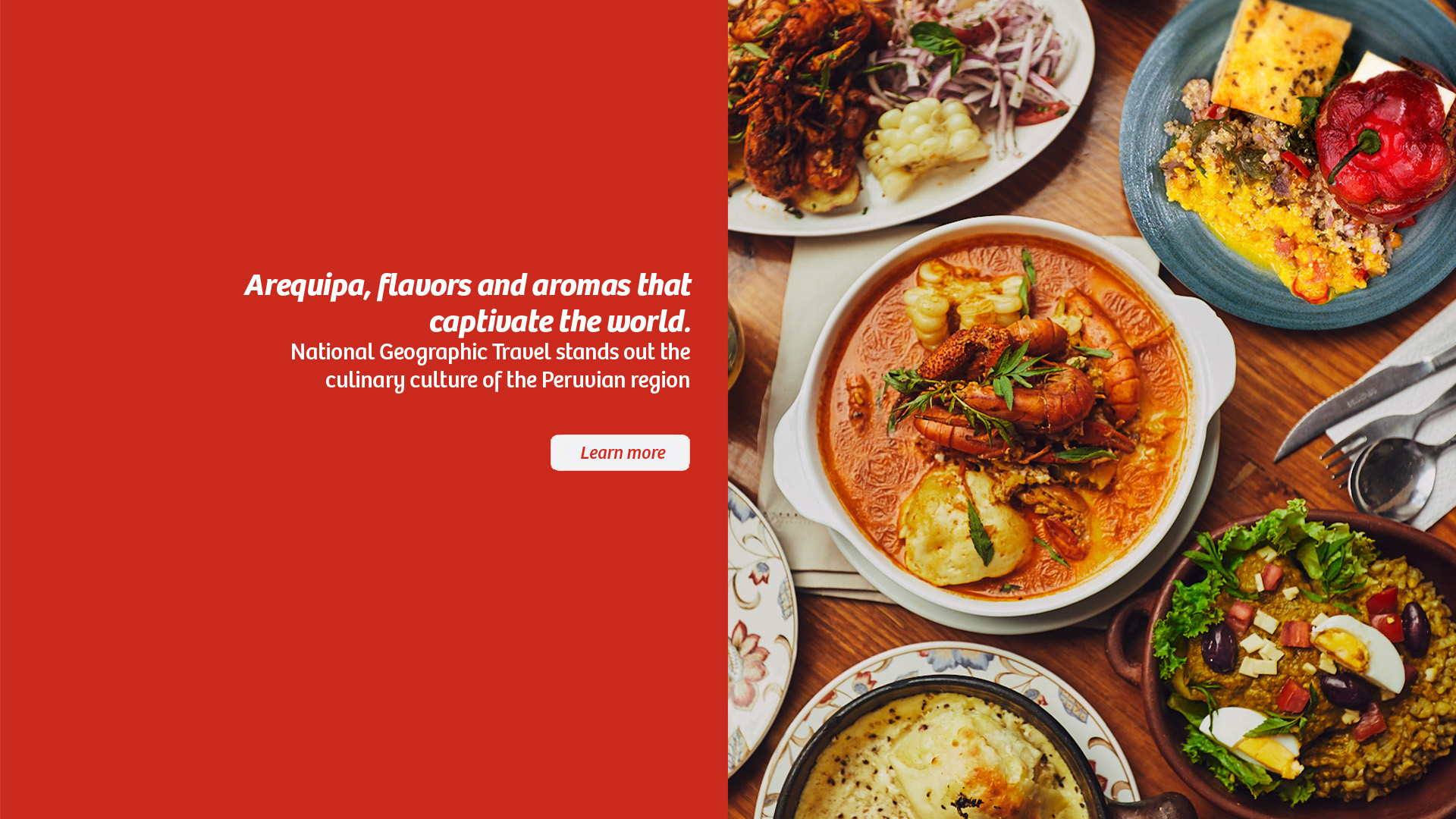
Credit: Shutterstock
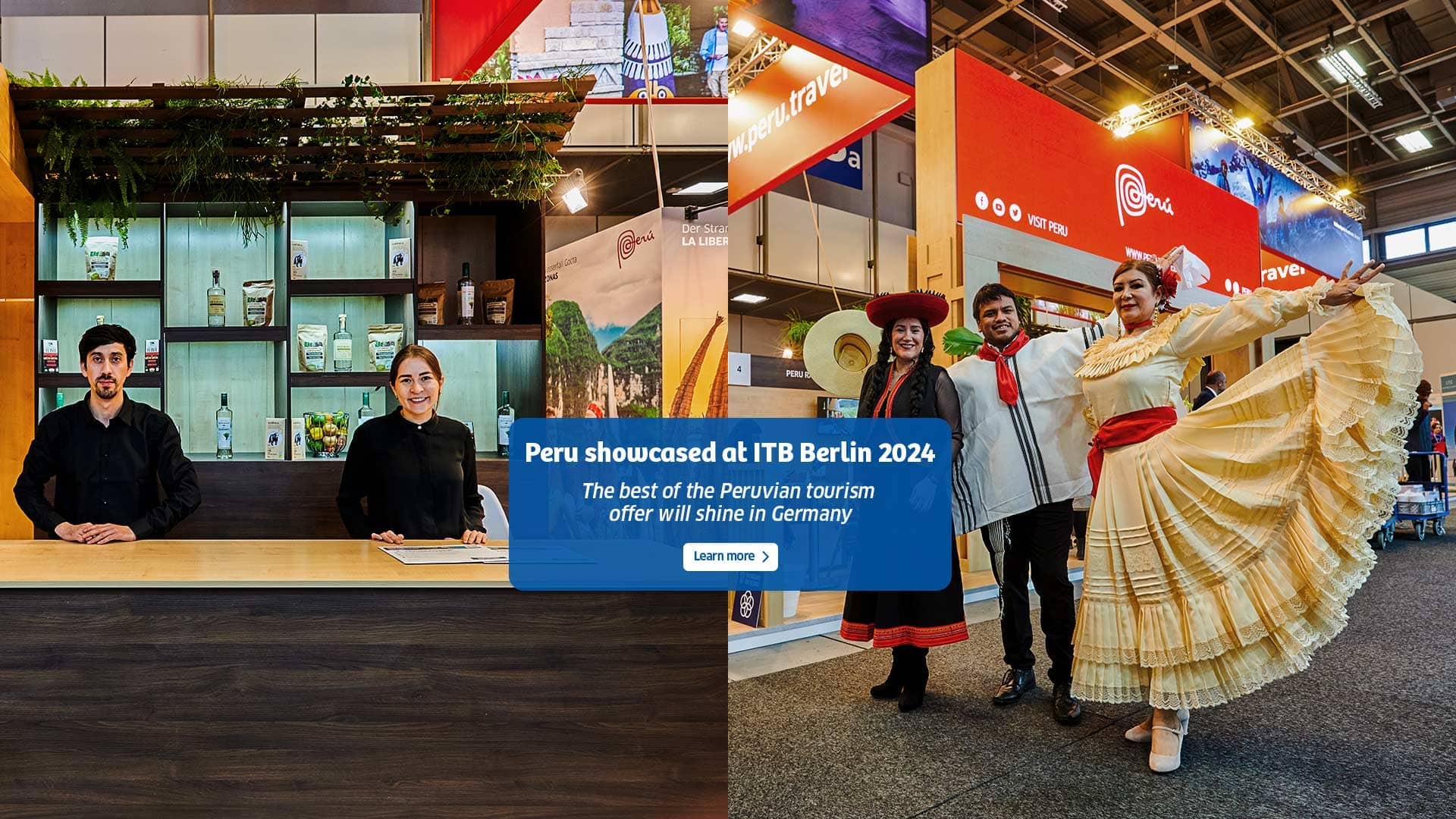
Every experience is uniquely special
Cultural history.
Experiential
Entertainment
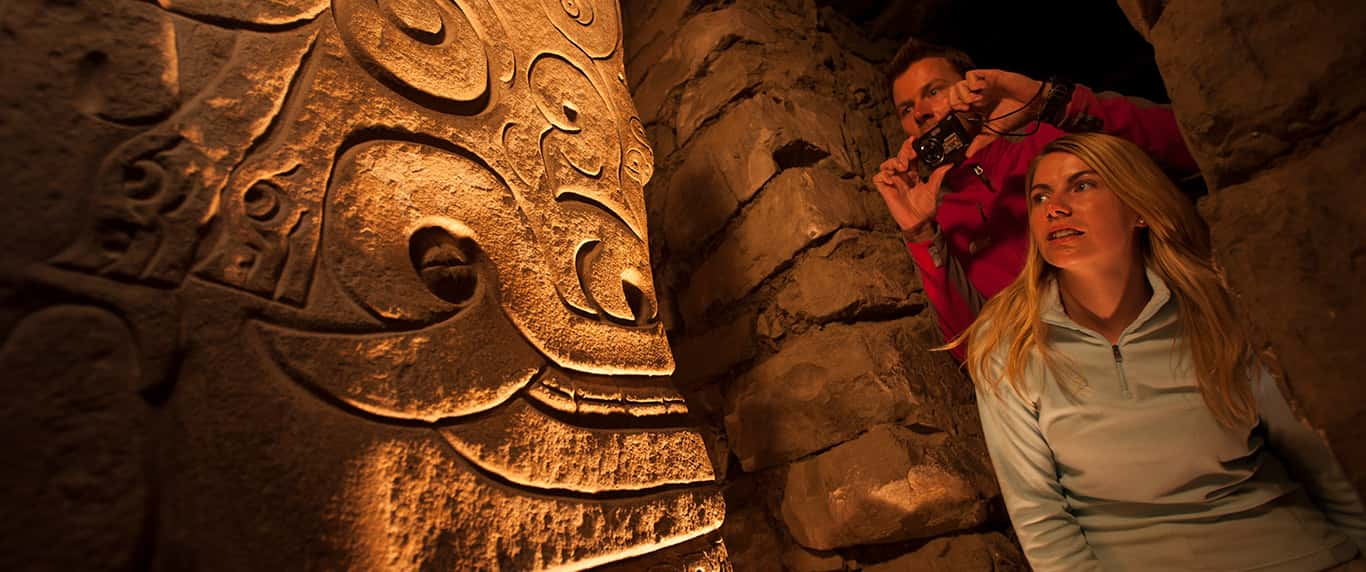
What is the most remarkable vestige of the past in Latin America?
The obvious answer would be Machu Picchu… And, of course, it certainly is. But we believe there are many more. Throughout Peru you can find marvelous vestiges of the past that astonish the world’s travelers. Machu Picchu is a must-see destination, but Peru is also home to Kuelap and Chavin de Huantar, Caral and Chan Chan , the Nasca Lines and Sipan … and we could name even more!
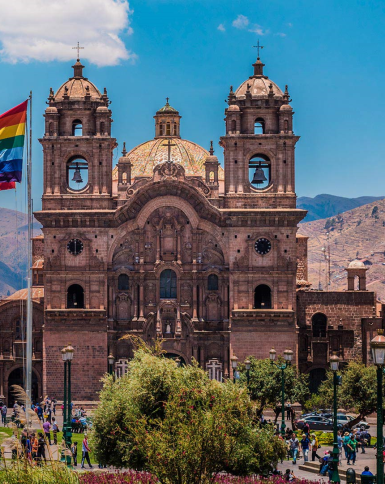
City tour in Cusco’s historic center
Visit the magical sights of the imperial city
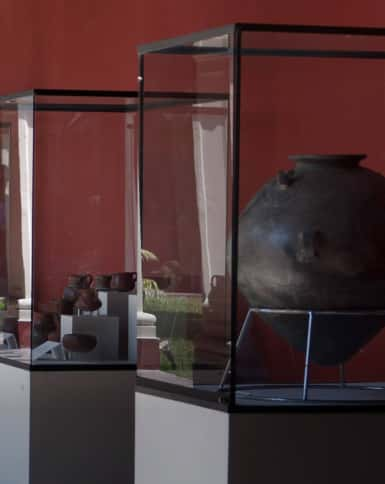
Lima city tour + museums
Lima’s museums
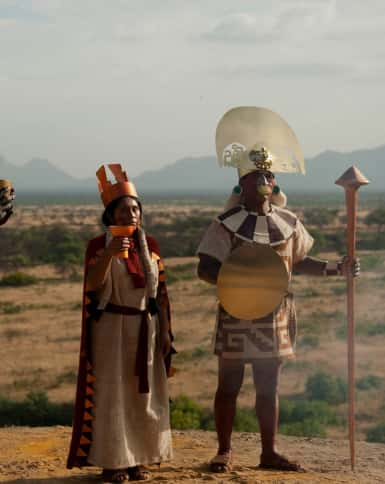
The Moche Route tour
Where ancestral knowledge seems boundless
These are the most searched destinations!

Where the Inca empire was born

Where tradition is today’s trend

A desert, all experiences

Living empire

Fascinating volcanic land
Peru around the world
Be amazed by the diversity of our natural, cultural and historic richness.

The latest updates from Peru: Everything you need to know

Learn about the new circuits of the Historic Sanctuary of Machu Picchu ...
The Peruvian Wonder will also have a new ticket sales channel, as well as a larger c ... ...

Arequipa stands out for its gastronomic tradition at National Geographic Travel ...
The specialized website emphasized the large tradition and legacy of the culinary cu ... ...

Peru, the best international destination in the world ...
The second edition of the 2024 National Geographic Traveler Readers Awards rec ... ...

Peru will present its best tourist offerings at ITB Berlin ...
The Peruvian charm once again reaches Europe. ...

This site uses cookies: Learn more
- Write For Us
- Chachapoyas
- Photo Stories
- Food & Drink
- Culture & Society
- Travel Tips & Info
Select Page
Baggage Allowance in Peru: Limits and Restrictions for Domestic Airlines
Posted by Tony Dunnell | Last updated May 31, 2018 | Travel Tips & Info | 0 |
Flying over the foothills near Lima, Peru. Photo by Julia Manzerova , flickr.com.
Unless you’re carrying more gear than a Gold Rush mule, you’ll probably find the typical baggage allowance in Peru to be fairly accommodating. The major domestic airlines in Peru allow at least 4 kg of hand luggage (and often closer to 10 kg), and 23 kg or more of checked baggage. Excess baggage policies allow you to carry more if necessary.
Below you’ll find a breakdown of the baggage policies for all of Peru’s domestic airlines, including restricted and prohibited items; musical instruments; sporting equipment; and pets (see final sections). If you have any specific questions, feel free to ask in the comments section below.
LATAM Baggage Allowance (LAN Peru)
Hand luggage : Standard LATAM flights allow one suitcase and a personal item, free of charge, as long as it’s light enough for you to place in the overhead compartment without needing help (which is kind of mean, really). You’re allowed a maximum of 8 kg in economy and 16 kg in premium economy or premium business. Maximum dimensions for the bag or suitcase are 55 cm x 35 cm x 25 cm. The personal item, such as a purse or laptop ( read more about bringing a laptop to Peru ), can be placed under the seat in front of you. Maximum dimensions for the personal item are 45 cm x 35 cm x 20 cm.
Checked baggage : The LATAM checked baggage allowance in Peru is 23 kg, with a maximum linear dimension of 158 cm.
Excess baggage : LATAM is apparently working to standardize its excess baggage policy, which would be a welcome development as the current policies for varying routes and destinations are a bit of a mess. For domestic flights in Peru, an extra bag between 23 kg and 32 kg costs US$25; between 32 kg and 45 kg it’s $50. The cost of an extra bag under 23 kg is not listed, but I assume it would be around $15.
LATAM baggage allowance policy
Avianca Baggage Allowance
Hand luggage : In both economy and business class, Avianca passengers are allowed one carry-on piece weighing a maximum of 10 kg. Carry-on luggage for all Avianca flights must measure no more than 115 cm (height-length-width). You may also take one of the following items free of charge: a coat, a hat, a small bag, a laptop, or a camera.
Checked baggage : In economy, Avianca passengers flying within Peru can check one bag weighing a maximum of 23 kg. In business class, two pieces weighing a maximum of 32 kg. Dimensions must not exceed 158 cm.
Excess baggage : An extra piece costs $40, $60 or $80 depending on weight, up to 45 kg. Various other permutations exist for excess baggage on Avianca flights; check the website for more details.
Avianca baggage allowance policy
Star Perú Baggage Allowance
Hand luggage : One piece that does not exceed 4 kg in weight and is no more than 40 cm x 35 cm x 20 cm (height-length-width). The carry-on luggage must fit in the overhead compartment.
Checked baggage : Star Perú passengers are allowed up to 25 kg of checked baggage, distributed between a maximum of two items per passenger. Baggage items must not exceed 75 cm x 45 cm x 35 cm, or 155 linear centimeters.
Excess baggage : US$2.95 per each extra kilo.
Star Perú baggage allowance policy
Peruvian Airlines Baggage Allowance
Hand luggage : Each passenger is allowed 8 kg of carry-on luggage within Peru, with the exception of flights leaving Cusco, where the maximum is 5 kg (which is kind of problematic if you arrived in Cusco with more than 5 kg). Hand luggage must not exceed 40 cm x 32 cm x 20 cm.
Checked baggage : Two pieces of baggage weighing up to 25 kg in total.
Excess baggage : US$2.50 plus tax per additional kilo.
Peruvian Airlines baggage allowance policy (note: the English version of the policy on the Peruvian Airlines website is out of date)
LC Perú Baggage Allowance
Hand luggage : Passengers flying with LC Perú are allowed one piece of hand luggage with dimensions no greater than 40 cm x 30 cm x 20 cm. If you’re flying on a Boeing, the maximum weight is 9 kg; on the smaller Dash aircraft, it’s 5 kg. You’re also allowed a personal item such as a purse or laptop.
Checked baggage : Baggage in the hold must weigh no more than 23 kg on a Boeing and 15 kg on a Dash.
Excess baggage : Additional baggage can be put in the hold for US$1.50 plus tax per kilo.
LC Perú baggage allowance policy
Viva Air Peru Baggage Allowance
Viva Air Peru is a new low-cost airline operating in Peru. Being a budget airline, its baggage policies are understandably more restrictive than other airlines in Peru.
Hand luggage : One piece weighing up to 6 kg with dimensions of no more than 40 cm x 35 cm x 25 cm. Items such as purses and laptops are considered as the one personal item, so be careful. You can carry more hand luggage at an additional cost.
Checked baggage : You’ll have to pay an additional fee if you want to check your baggage. This costs between US$17 and $37 depending on where you pay for the service (for example, when booking online or at the boarding gate). Checked baggage for Viva Air must not exceed 20 kg or 158 linear cm per suitcase or bag.
Excess baggage : If your checked luggage exceeds 20 kg, you can bring up to 12 kg more by paying an additional price of $3 per extra kilogram.
Viva Air baggage allowance policy
Airline Baggage Restrictions in Peru
Airline baggage restrictions in Peru are fairly standard and typical of airline policies around the world. Always check the specific restrictions of your airline if you’re unsure. (For customs issues when entering Peru, read Peruvian Customs Regulations: What You Can and Can’t Bring Into Peru )
Things that are typically prohibited on flights in Peru include:
- Compressed gas
- Flammable liquids and solids
- Oxidizing materials
- Toxic, corrosive or infectious substances
- Radioactive material
Certain small items for personal use, like aerosols, gels, liquors, creams, deodorant sticks, lipstick and toothpaste are allowed in your carry-on luggage, as long as they’re stored inside a transparent bag of up to one liter in size (according to LATAM).
Most domestic airlines in Peru accept sporting equipment as checked luggage, including surfboards, golf clubs, bicycles, skateboards, SCUBA equipment and fishing rods. Musical instruments can also be taken as checked luggage, or as hand luggage if they fit the size restrictions. Check the airline’s policy before you fly.
Taking Pets on Airlines in Peru
Pets are normally accepted on flights in Peru. Even the low-cost Viva Air accepts dogs and cats, albeit for an additional fee and under certain regulations. Pets are not considered part of the standard baggage allowance, and so are treated as excess baggage (and therefore you have to pay more). Each airline has specific guidelines, including weights and kennel sizes, so check the relevant website for more details.
Related Posts
About the author.
Tony Dunnell
Tony Dunnell is a freelance travel writer living in Peru since 2009. He is the owner of New Peruvian and a contributor to publications such as Atlas Obscura, VICE and Paste Magazine. You can see his writer portfolio at tonydunnell.com
Leave a reply Cancel reply
Your email address will not be published. Required fields are marked *
Notify me of follow-up comments by email.
Notify me of new posts by email.
This site uses Akismet to reduce spam. Learn how your comment data is processed .
- Facebook 2.7k Followers
- Twitter 418 Followers
- Pinterest 1.6k Followers
- Instagram 173 Followers
Recent Posts

Book Hostels and Hotels
Subscribe to our newsletter.
Join the New Peruvian mailing list to receive the latest news and updates from Peru.
You have Successfully Subscribed!
Pin it on pinterest.
Thanks for commenting! If your comment requires an answer, I'll try to reply as soon as possible. In the meantime, please share this post with your friends.
The Latest on U.S. Travel Restrictions
By Lauren Hard Oct. 19, 2021
- Share full article
What to Know: U.S. Travel Restrictions

Beginning today, international visitors who are fully vaccinated against the coronavirus can enter the United States by air or across the land borders with Canada and Mexico.
Here’s the latest →

The new policy ends an 18-month ban on nonessential travel from 33 countries, including China, Brazil and European Union members. The ban had affected tourists and those hoping to visit family and friends in the U.S.

The rules reorient the U.S. approach to vetting its visitors during the pandemic.
Instead of basing entry decisions on travelers’ countries of origin, the U.S. is focusing on vaccination status.
International visitors flying into the U.S. now need to show proof of vaccination before boarding and a negative coronavirus test taken within three days of their flight.
The three vaccines available in the U.S. — Pfizer-BioNTech, Moderna and Johnson & Johnson — are accepted, as are vaccines cleared for emergency use by the W.H.O., including AstraZeneca and Covaxin.
Unvaccinated foreign visitors cannot enter the country, with limited exemptions.

Unvaccinated Americans returning home need to test negative for the coronavirus within one day of their flight and show proof they have purchased another test to take after arriving.

The hope is with these longstanding bans being lifted, the U.S. tourism industry will start to recover. The halt on travel caused a loss of nearly $300 billion in visitor spending, according to the U.S. Travel Association.
Keep up with the latest travel news, trends and feature stories.

Advertisement
- Travel Planning Center
- Ticket Changes & Refunds
- Airline Partners
- Check-in & Security
- Delta Sky Club®
- Airport Maps & Locations
- Flight Deals
- Flight Schedules
- Destinations
- Onboard Experience
- Delta Cruises
- Delta Vacations
- Delta Car Rentals
- Delta Stays
- Onboard Wi-Fi
- Delta Trip Protection
- How to Earn Miles
- Ways to Redeem Miles
- Buy or Transfer Miles
- Travel with Miles
- SkyMiles Partners & Offers
- SkyMiles Award Deals
- SkyMiles Credit Cards
- SkyMiles Airline Partners
- SkyMiles Program Overview
- How to Get Medallion Status
- Benefits at Each Tier
- News & Updates
- Help Center
- Travel Planning FAQs
- Certificates & eCredits
- Accessible Travel Services
- Child & Infant Travel
- Special Circumstances
- SkyMiles Help
Travel Requirements Guide
International Travel Requirements
U.s. entry requirements, contact tracing.
Get to Know Delta FlyReady SM
- Investor Relations
- Business Travel
- Travel Agents
- Comment/Complaint
- Browser Compatibility
- Accessibility
- Booking Information
- Customer Commitment
- Tarmac Delay Plan
- Sustainability
- Contract of Carriage
- Cookies, Privacy & Security
- Human Trafficking Statement (PDF)

Donald Trump Banned From These 37 Countries Due to His Felony Conviction
Donald trump banned from these 37 countries due to his felony conviction.
Since many nations have stringent immigration regulations that target those with criminal histories, former president Donald Trump , who is now a convicted felon, may encounter severe travel limitations. The high-profile hush money case concluded on May 30 with a guilty verdict for Trump on all 34 charges. As he seeks reelection, Trump became the first former U.S president to face criminal convictions.
World Population Review reports that 38 countries including the United States, have banned entry to convicted criminals. These prohibitions remain in effect even if a person retains their passport after conviction . Many of America's closest allies, like Canada, the UK, and Australia, have imposed similar prohibitions. Countries like Mexico, Israel, and China which are at the epicenter of many current international crises, are also on the list. World leaders can sometimes choose to make an exception.
For instance, George W. Bush, who was arrested for drunk driving in the 1970s, faced issues when he planned an official state visit to Canada. However, a special waiver eventually granted entry. The other countries on the list include Argentina, Brazil, Cambodia, Chile, Cuba, Dominican Republic, Egypt, Ethiopia, Hong Kong, India, Indonesia, Iran, Ireland, Japan, Kenya, Macau, Malaysia, Morocco, Nepal, New Zealand, Peru, Philippines, Singapore, South Africa, South Korea, Taiwan, Tanzania, Tunisia, Turkey, Ukraine, and the United Arab Emirates.
The judge who oversaw the hush money trial, Justice Juan Merchan, has not yet imposed any travel limitations on the former president. Trump's sentencing hearing is scheduled to commence at 10 a.m. on July 11, just four days before the Republican National Convention, where his candidacy for the presidency will be formally announced. Trump has not yet declared any intentions to travel internationally, instead intends to ramp up his domestic campaigning efforts.
In the past, the Trump administration imposed travel bans on predominantly Muslim countries. If re-elected, he intends to renew and reform U.S. travel restrictions, reinstating a travel ban more stringent than before. In 2018, a 5-4 decision from the Supreme Court supported a variant of his travel ban. Presidents possess considerable authority to control immigration, according to Chief Justice John Roberts's majority ruling.
As per CBS News , Roberts stated, "The sole prerequisite is that the entry of the covered aliens 'would be detrimental to the interests of the United States.' The President has undoubtedly fulfilled that requirement here."
For fabricating company documents, Trump faces a possible term of one and a half to four years in jail. Imprisonment in New York for the sole offense of fabricating records is unusual, especially for those without a prior criminal record.
As per Reuters , Trump may get a curfew or home confinement if his punishment goes beyond a fine. The technicalities of ensuring his safety while incarcerated might be complex, given that he is a former president with lifelong Secret Service protection. While he appeals his conviction, Trump may be freed on bond.
10 Blunders Donald Trump Made That Even His Biggest Supporters Couldn’t Overlook

Enable JavaScript
Please enable JavaScript to fully experience this site. How to enable JavaScript
- At the airport
Checked bag policy
Checked bag allowances.
Changes to bag allowances and fees have been updated as of February 20, 2024.
Travel within / between the U.S., Puerto Rico, and U.S. Virgin Islands – 1st checked bag fee is $40 ($35 if you pay online) and the 2nd checked bag fee is $45.
Travel to / from Canada, Caribbean, Mexico, Central America, and Guyana – 1st checked bag fee is $35 and the 2nd checked bag fee is $45.
All bag fees are non-refundable and apply per person, at each check-in location, each way, even if you purchase or get an upgrade that includes free checked bags. If you believe you've been incorrectly charged for bag fees, contact an American representative for help or file a refund claim within 45 days.
- Bag limitations
- Bag and optional fees

How many bags can you take?
Check up to 10 bags on american airlines operated flights if your trip is:.
- Transatlantic
- Transpacific
Check up to 5 bags on American-operated flights if you’re traveling to / through / from:
- Mexico / Caribbean / Central America*
- South America*
- Bag regions
*There are seasonal and year-round bag restrictions
We calculate the size limits of your bag by adding the total outside dimensions of each bag, length + width + height.
For all regions, except to / from Australia or New Zealand, your checked bag allowance is:
- Dimension: 62 in / 158 cm
- Weight: 50 lbs / 23 kgs
- For First / Business, weight is 70 lbs / 32 kgs for complimentary bags and 50 lbs / 23 kgs for excess charged bags
For all confirmed customers on flights to / from Australia or New Zealand:
- Weight: 70 lbs / 32kgs for complimentary bags and 50 lbs / 23 kgs for excess charged bags
- Oversize and overweight bags
What it will cost
In some cases, you won't have to pay the fees for up to 3 bags when traveling on itineraries marketed and operated by American Airlines. If you qualify for complimentary bags based on your AAdvantage ® status or one world ® status, the benefits are based on your highest status level at time of ticketing or check-in.
If your status level is:
- Higher at ticketing than at check-in, show your ticket receipt to the airport agent
- Lower at ticketing than at check-in, current benefits will automatically apply
Free checked bags may not apply to codeshare flights operated by our partners. Visit the website of the airline operating your flight for details.
Other airlines
1st checked bag is complimentary for:
- Eligible AAdvantage ® Aviator ® and Citi ® / AAdvantage ® cardmembers (on domestic American Airlines operated itineraries)
- AAdvantage Gold ® status
- GOL Diamond Smiles members
- oneworld ® Ruby
or when traveling to these destinations:
- El Salvador*
- New Zealand^
- South Korea^
- Transatlantic*
*Excluding Basic Economy
^Excluding Basic Economy for tickets issued on / after June 7, 2023
1st and 2nd checked bags are complimentary for:
- AAdvantage Platinum ® status
- one world ® Sapphire members
- Confirmed Domestic First customers
- Confirmed Business customers
- Confirmed Premium Economy customers
1st, 2nd and 3rd checked bags are complimentary for:
- Confirmed Flagship ® First and Flagship ® Business Plus customers*
- AAdvantage Executive Platinum ® status
- AAdvantage Platinum Pro ® status
- one world ® Emerald
- Active U.S. military and / or dependents with ID traveling on orders (1st - 5th bags free of charge)**
- Active U.S. military with ID on personal travel**
*Applicable only to Flagship ® First International, Flagship ® First Transcontinental and Flagship ® Business Plus. AAdvantage Executive Platinum ® status, AAdvantage Platinum Pro ® status and oneworld ® Emerald members traveling in Flagship ® First may check a 4th bag at no charge
**Free checked bags apply when traveling on American marketed and operated itineraries. Free checked bags don't apply to codeshare flights operated by our partners.
Save time, pay online
Don’t wait in line at the airport – get the best price available and check up to 3 bags when you check-in on aa.com or in the app.
Pay for your checked bags online within 24 hours of departure and receive the best price available for travel on domestic flights within and between the U.S., including Hawaii and Alaska, and select markets in the Caribbean and Central America.
For tickets issued on / after February 20, 2024, save $5 on the 1st checked bag fee for travel within and between the U.S., including Hawaii and Alaska, Puerto Rico and U.S. Virgin Islands.
For more information about paying for your bags online, visit our customer service FAQs.
Customer service FAQs
All published bag fees apply at each check-in location and are base rates according to travel dates and destination; applicable taxes are not shown.
All bag fees are non-refundable and apply per person, each way, even if you buy or get an upgrade that includes free checked bags. If you believe you were incorrectly charged for bag fees, contact an American representative for help or file a refund claim within 45 days.
^Main Plus includes 1 extra free checked bag in addition to the Main Cabin allowance (max of 2)
^^A $30 1st checked bag fee and a $40 2nd checked bag fee applies for tickets issued on / before February 19, 2024. A $40 1st checked bag fee ($35 if paid online) and a $45 2nd checked bag fee applies within / between the U.S. (including HI / AK), Puerto Rico and U.S. Virgin Islands for tickets issued on / after February 20, 2024. Otherwise, a $35 1st checked bag fee and a $45 2nd checked bag fee applies for tickets issued on / after February 20, 2024.
*Free bag excludes Basic Economy: For Basic Economy travel to / from Haiti, a $30 1st bag fee applies for tickets issued on / before February 19, 2024 and a $35 1st bag fee applies for tickets issued on / after February 20, 2024. For Basic Economy travel to/from Panama / Colombia / Ecuador / Peru a $45 1st bag fee applies. For Basic Economy travel to / from South America (excluding Colombia, Ecuador, Guyana, Peru, Suriname) a $45 1st bag fee applies for tickets issued on / before September 19, 2023 and a $60 1st bag fee applies for tickets issued on / after September 20, 2023. For Transatlantic Basic Economy travel, a $75 1st bag fee applies. For Transpacific Basic Economy travel for tickets issued on / after June 7, 2023 a $75 1st bag fee applies and for tickets issued on / before June 6, 2023 there is no 1st bag fee.
**For travel to / from Panama and South America (except Guyana and Suriname), a $65 2nd bag fee applies for tickets issued on / before September 19, 2023 and a $100 2nd bag fee applies for tickets issued on / after September 20, 2023.
Flights departing Canada
Find out how much you'll pay for checked bags and other fees on roundtrip and one-way flights departing Canada, displayed in CAD.
Bag and optional fees - Canada
If your region isn’t listed, we can still help:
- Reservations and ticket changes
Through checked bags
We only through check bags if all your tickets are in the same reservation and you’re connecting to another American Airlines or one world ® flight.
Each passenger traveling to Cuba may only check up to 2 bags* with a maximum weight of 70 lbs / 32 kgs per bag, plus 1 carry-on bag and 1 personal item.
- Carry-on bags
*Seasonal exceptions apply to Havana, Cuba effective for travel on / after March 14, 2023
*For travel to Cuba, a $30 1st bag fee applies to Basic Economy and Main Cabin for tickets issued on / before September 19, 2023. For tickets issued on / after September 20, 2023 a $30 1st bag fee applies to Basic Economy and there is no 1st bag fee for Main Cabin. For tickets issued on / after February 20, 2024 a $35 1st bag fee applies to Basic Economy and there is no 1st bag fee for Main Cabin.
**For travel to Cuba, a $200 2nd bag fee applies seasonally for travel from November 16 – January 9. A $150 2nd bag fee applies otherwise. Excludes Main Plus for tickets issued on / after September 20, 2023.
^Main Plus includes 1 extra free checked bag in addition to the Main Cabin allowance (max of 2).
What else can you travel with?
- Mobility and medical devices
- Traveling with pets
- Special items and sports equipment
Restricted items
There are some items that are only allowed in checked bags or your carry-on. Check to see how to pack and travel with restricted items.
Flying on a partner airline?
Find helpful information if your trip includes 1 or more flights with our partner airlines.
- British Airways
- Japan Airlines
- Qatar Airways
You may also like...
- Paying for bags online

USTR Releases Summaries from U.S. – Kenya Strategic Trade and Investment Partnership Negotiations
- Ambassador McKalip to Travel to Singapore for Bilateral Meetings, U.S. Agricultural Stakeholder Engagement and Indo-Pacific Economic Framework (IPEF) Meetings
- Readout of United States Trade Representative Katherine Tai’s Call with Lithuania’s Minister of Foreign Affairs Gabrielius Landsbergis
- United States Announces Successful Resolution of Rapid Response Labor Mechanism Matter to Restore Workers’ Rights at Minera Tizapa Facility
- United States Announces Successful Resolution of Rapid Response Mechanism Labor Matter at Servicios Industriales González, S.A. de C.V.
- USTR, USDA Announce Appointments to Seasonal and Perishable Agricultural Products Advisory Committee
- United States Seeks Mexico’s Review of Alleged Denial of Workers’ Rights at Volkswagen de México, S.A. de C.V.
- USTR Extends Certain Exclusions from China Section 301 Tariffs
- United States and Kenya to Hold Sixth Negotiating Round Under the Strategic Trade and Investment Partnership
- USTR Announces New Action to Improve Emergency Response Collaboration Under the USMCA
- United States, Canada, and Mexico Joint Statement of the Fourth Meeting of the USMCA//CUSMA//T-MEC Free Trade Commission
- Readout of United States Trade Representative Katherine Tai’s Meeting with Canadian Minister of Export Promotion, International Trade, and Economic Development Mary Ng
- Readout of United States Trade Representative Katherine Tai’s Meeting with Mexican Secretary of Economy Raquel Buenrostro
- Readout of Fourth Meeting of the U.S.-Vietnam Timber Working Group
- USTR Issues Federal Register Notice on Section 301 Proposed Tariff Modifications and Machinery Exclusion Process
- Statement from Ambassador Katherine Tai Commemorating World Trade Week
- United States and Kenya Joint Statement after the Fifth Round of U.S.-Kenya Strategic Trade and Investment Partnership Negotiations
- Readout of Ambassador Katherine Tai’s Meeting With Peru’s Minister of Foreign Trade and Tourism Elizabeth Galdo Marín
- Ambassador Tai to Travel to Phoenix, Arizona
- The Office of the U.S. Trade Representative, Small Business Administration, and Department of Commerce Convene the Third USMCA Small and Medium-Sized Enterprise Dialogue
- ICYMI: U.S. Trade Representative Katherine Tai Delivers Remarks on Her Actions to Increase China Tariffs
- U.S. Trade Representative Katherine Tai to Take Further Action on China Tariffs After Releasing Statutory Four-Year Review
- USTR Invites Public Participation in Stakeholder Listening Session During Fifth United States-Kenya Strategic Trade and Investment Partnership Negotiating Round
- USMCA Rapid Response Labor Mechanism Panel Releases Determination Regarding Grupo México Mine; Biden-Harris Administration Will Continue Seeking to Enforce USMCA Labor Obligations and Advance Workers’ Rights
- Ambassador Tai to Travel to Arequipa, Peru
- Week Ahead Guidance for the Week of May 13 to May 17, 2024
- United States and Kenya to Hold Fifth Negotiating Round Under their Strategic Trade and Investment Partnership
- Ambassador Tai to Travel to Los Angeles, California
- United States and the Philippines Hold Agriculture and Labor Working Group Meetings Under the Trade and Investment Framework Agreement
- Readout of the U.S.-Iraq Trade and Investment Framework Agreement (TIFA) Council Meeting
- USTR Announces Neil Beck as Acting Assistant U.S. Trade Representative for WTO and Multilateral Affairs
- Week Ahead Guidance for the Week of May 6 to May 10, 2024
- Statement from Ambassador Katherine Tai in Recognition of International Workers’ Day
- Readout of Negotiating Round Under the U.S.-Taiwan Initiative on 21st-Century Trade
- Statement from Ambassador Katherine Tai Celebrating Asian American, Native Hawaiian, and Pacific Islander Heritage Month
- Policy Offices
- Press Office
- Press Releases
May 31, 2024
WASHINGTON – Consistent with the Biden-Harris Administration’s commitment to the highest levels of transparency in trade agreement negotiations, the Office of the United States Trade Representative (USTR) today released summaries of texts proposed by the United States under the U.S.-Kenya Strategic Trade and Investment Partnership (STIP). Negotiations on these texts are ongoing. The summaries detail the negotiating proposals from the United States for the customs, trade facilitation, and enforcement chapter and the environment chapter. USTR previously released public summaries of texts on agriculture; anticorruption; good regulatory practices; micro, small, and medium-sized enterprises; services domestic regulation; and workers’ rights and protections. The goal of the STIP is to increase investment; promote sustainable and inclusive economic growth; benefit workers, consumers, and businesses (including micro, small, and medium-sized enterprises); and support African regional economic integration. The United States and Kenya share a commitment to work to conclude an agreement by the end of the year on a high standard, ambitious STIP that reflects mutually shared goals and values, as outlined in the May 17, 2024 joint statement . Resources : U.S.-Kenya Strategic Trade and Investment Partnership Summary of Second Set of Texts U.S.-Kenya Strategic Trade and Investment Partnership Summary of First Set of Texts Readout of April 2024 Negotiating Round Under the U.S.-Kenya Strategic Trade and Investment Partnership Readout of January 2024 Negotiating Round Under the U.S.-Kenya Strategic Trade and Investment Partnership Readout of October 2023 Negotiating Round Under the U.S.- Kenya Strategic Trade and Investment Partnership Readout of April 2023 Negotiating Round Under the U.S. - Kenya Strategic Trade and Investment Partnership

- 600 17th Street NW
- Washington, DC 20508

- Reports and Publications
- Fact Sheets
- Speeches and Remarks
- Blog and Op-Eds
- The White House Plan to Beat COVID-19
- Free Trade Agreements
- Organization
- Advisory Committees
- USTR.gov/open
- Privacy & Legal
- FOIA & Privacy Act
- Attorney Jobs
Security Alert May 17, 2024
Worldwide caution, update may 10, 2024, information for u.s. citizens in the middle east.
- Travel Advisories |
- Contact Us |
- MyTravelGov |
Find U.S. Embassies & Consulates
Travel.state.gov, congressional liaison, special issuance agency, u.s. passports, international travel, intercountry adoption, international parental child abduction, records and authentications, popular links, travel advisories, mytravelgov, stay connected, legal resources, legal information, info for u.s. law enforcement, replace or certify documents.
Before You Go
Learn About Your Destination
While Abroad
Emergencies
Share this page:
Dominican Republic
Travel Advisory June 6, 2023
Dominican republic - level 2: exercise increased caution.
Reissued with updates to health information.
Exercise increased caution in the Dominican Republic due to crime.
Country Summary: Violent crime, including armed robbery, homicide and sexual assault is a concern throughout the Dominican Republic. The development of a professional tourist police corps, institution of a 911 system in many parts of the country, and a concentration of resources in resort areas means these tend to be better policed than urban areas like Santo Domingo. The wide availability of weapons, the use and trade of illicit drugs, and a weak criminal justice system contribute to the high level of criminality on the broader scale.
Read the country information page for additional information on travel to the Dominican Republic.
If you decide to travel to the Dominican Republic:
- Be aware of your surroundings.
- Do not physically resist any robbery attempt.
- Do not display signs of wealth, such as wearing expensive watches or jewelry.
- Follow the advice of resort and tour operators regarding local safety and security concerns.
- Enroll in the Smart Traveler Enrollment Program (STEP) to receive Alerts and make it easier to locate you in an emergency.
- Follow the Department of State on Facebook and Twitter .
- Review the Country Security Report for the Dominican Republic.
- Prepare a contingency plan for emergency situations. Review the Traveler’s Checklist .
- Visit the CDC page for the latest Travel Health Information related to your travel.
Embassy Messages
View Alerts and Messages Archive
Quick Facts
Passports must be valid for the period of stay in the Dominican Republic.
1 page required for entry stamp
Not required for visits shorter than 30 days
None required if arriving from the United States
$10,000 and over or its equivalent must be declared
Embassies and Consulates
U.s. embassy santo domingo.
Av. República de Colombia #57 Santo Domingo, Dominican Republic Telephone: +(809) 567-7775 Emergency After-Hours Telephone: +(809) 567-7775, dial zero (0) ask for Duty Officer Email: [email protected] Hours: Monday through Friday from 7:00 AM to 4:00 PM except U.S. and Dominican holidays
Consular Agencies
U.S. Consular Agent - Puerto Plata Plaza el Doral, carretera Luperón KM 3 1/2 Puerto Plata, Dominican Republic Telephone: +(809) 586-4204, +(809) 586-8023 Emergency After-Hours Telephone: (809) 567-7775, dial zero (0) ask for Duty Officer Email: [email protected] Hours: Monday through Friday from 8:00 AM to 5:00 PM except U.S. and Dominican holidays
U.S. Consular Agent - Bavaro/Punta Cana Palma Real Shopping Center Business Center 2nd Floor Bavaro, La Altagracia, Dominican Republic Telephone: (809) 552-8990 Emergency After-Hours Telephone: +(809) 567-7775, dial zero (0) ask for Duty Officer Email: [email protected] Hours: Monday through Friday from 8:00 AM to 5:00 PM except U.S. and Dominican holidays
Destination Description
Learn about the U.S. relationship to countries around the world.
Entry, Exit and Visa Requirements
Visas are not required for visits shorter than 30 days. Visit the Embassy of the Dominican Republic website for current visa information.
All visitors to the Dominican Republic are charged a $10 tourist card fee that is incorporated into airline charges. Cruise passengers must obtain a tourist card if they are disembarking for longer than 24 hours. Once used, the card allows for stays up to 30 days but can be extended at the General Directorate of Migration in Santo Domingo.
Contact the Migration Department in Santo Domingo for visa extension requests. Failure to request an extension will result in a fine at the airport upon departure. The fines range from approximately $55 USD for one month to as high as $1,555 USD for overstays of 10 years or more.
All passengers are required to fill out an E-Ticket or paper form when entering or exiting the Dominican Republic. If using E-Ticket, a new form is required for each entry and exit and the code generated upon form completion can be presented at the airport on a digital device.
Visitors must have a ticket entering and leaving the country, the financial means to pay for their stay, and an address in the Dominican Republic where they will be staying.
Exit Requirements for Children: Minors (children under 18) who are citizens (including dual citizens) or legal residents of the Dominican Republic, if not accompanied by both parents or legal guardian(s), are required to present official proof of parental consent to travel. Please see the Dominican Migration Department's website for detailed instructions on the required documents.
HIV/AIDS Restrictions: Some HIV/AIDS entry restrictions exist for visitors to and foreign residents of the Dominican Republic. The Dominican Republic has restrictions on granting residency to people with HIV/AIDS. Please verify information with the Dominican Republic’s Migration Department before you travel.
Yellow Fever Vaccine: Proof of vaccination against yellow fever is required for travelers entering the Dominican Republic from Brazil. Similar requirements may apply to those traveling from other countries with yellow fever risk .
Find information on dual nationality , prevention of international child abduction , and customs regulations on our websites.
Safety and Security
Crime: Crime is a threat throughout the Dominican Republic. Tourist destinations are generally more policed than metropolitan areas.
- If robbed, hand over your personal belongings without resisting.
- Do not carry or wear valuable items that will attract attention.
- Be wary of strangers.
- Travel with a partner or group if possible.
International Financial Scams: See the Department of State and the FBI pages for information.
Dating App Robberies: Several U.S. citizen travelers in the Dominican Republic have reported that they were robbed by people they met through popular online dating applications. If meeting with strangers, you should strongly consider meeting only in public places and avoiding isolated locations where crimes are most likely to occur.
Demonstrations: Avoid areas of demonstrations and exercise caution if you are in the vicinity of large gatherings or protests.
Victims of Crime: Report crimes to the local tourist police (POLITUR) at 809-222-2026 or 911 and contact the U.S. Embassy at 809-567-7775. 911 is operational throughout the country apart from some areas located near the Haitian border. Remember that local authorities are responsible for investigating and prosecuting crime.
See our webpage on help for U.S. victims of crime overseas .
- Help you find appropriate medical care.
- Assist you in reporting a crime to the police.
- Contact relatives or friends with your written consent.
- Provide general information regarding the victim’s role during the local investigation and following its conclusion.
- Provide a list of local attorneys.
- Provide our information on victim’s compensation programs in the U.S.
- Provide an emergency loan for repatriation to the United States and/or limited medical support in cases of destitution.
- Replace a stolen or lost passport.
Domestic Violence: U.S. citizen victims of domestic violence are encouraged to contact POLITUR (809-222-2026), the National Police ( 809-682-2151), and the U.S. Embassy for assistance.
Sexual Assault: Rape and sexual assault has been reported throughout the Dominican Republic, including at major resorts and hotels.
Notes for your safety:
- U.S. citizens have been targeted with date rape drugs.
- Sexual assault victims in the Dominican Republic should not expect the totality of assistance offered in the United States. Rape kits are often not available until the following morning and must be administered by Dominican authorities.
- Victims often have to request medication to avoid transmission of STDs and reduce the chances of pregnancy.
- Prosecution of a rape case moves forward very slowly. Dominican law may require the victim to return to the Dominican Republic at some stages of the judicial process.
- Security outside of the resort area, including beach areas, is unpredictable, especially at night.
Best Practices:
- Contact the police/hotel management if resort staff demonstrate unwanted attention.
- Victims of sexual/other assault should contact the police and the Embassy. Insist that hotel management take immediate action by contacting the police.
- In a resort, avoid secluded places. Always be accompanied by someone you know, even going to the restroom.
- Do not consume alcoholic beverages alone or with new acquaintances. Do not leave drinks unattended. Know your limits and help your friends/travelling companions to remain safe.
- Shout for help immediately if threatened or made uncomfortable.
- Report suspicious activity, including excessive friendliness by hotel employees, to hotel management, the U.S. Embassy, and local police.
- Do not swim alone due to life-threatening undertows.
Tourism: The tourism industry is unevenly regulated, and safety inspections for equipment and facilities may not commonly occur in all parts of the country. Hazardous areas and activities are not always identified with appropriate signage, and staff may not be trained or certified either by the host government or by recognized authorities in the field. In the event of an injury, appropriate medical treatment is typically available only in or near major cities or major tourist zones. First responders may be unable to access areas outside of major cities or major tourist zones. The ability to provide urgent medical treatment may be limited. U.S. citizens are encouraged to purchase medical evacuation insurance. See our webpage for more information on insurance providers for overseas coverage .
Local Laws & Special Circumstances
Criminal Penalties: You are subject to local laws. If you violate local laws, even unknowingly, you may be expelled, arrested, or imprisoned. Individuals establishing a business or practicing a profession that requires additional permits or licensing should seek information from the competent local authorities, prior to practicing or operating a business.
Furthermore, some laws are also prosecutable in the United States, regardless of local law. For examples, see our website on crimes against minors abroad and the Department of Justice website. Penalties for possessing, using, or trafficking illegal drugs in the Dominican Republic are severe, and convicted offenders can expect long jail sentences and heavy fines. Arrest Notification: If you are arrested or detained, ask police or prison officials to notify the U.S. Embassy immediately. See our webpage and general information on legal assistance for further information.
Counterfeit and Pirated Goods: Although counterfeit and pirated goods are prevalent in many countries, their possession they may still be illegal according to local laws. You may also pay fines or have to give them up if you bring them back to the United States. See the U.S. Department of Justice website for more information.
Faith-Based Travelers: See the following webpages for details:
- Faith-Based Travel Information
- International Religious Freedom Report – see country reports
- Human Rights Report – see country reports
- Hajj Fact Sheet for Travelers
- Best Practices for Volunteering Abroad
LGBTI Travelers: There are no legal restrictions on same-sex sexual relations or the organization of LGBTI events in the Dominican Republic.
See our LGBTI Travel Information page and section 6 of our Human Rights report for further details.
Travelers with Disabilities: The law in the Dominican Republic prohibits discrimination against persons with physical, sensory, intellectual or mental disabilities, but the law is not enforced consistently. Social acceptance of persons with disabilities in public is not as prevalent as in the United States. Accessible facilities, information, communication/access to services and ease of movement is limited in most parts of the country. Large resorts and Santo Domingo may have some generally accessible infrastructure, but travelers should not expect the level available in the United States.
Students: See our Students Abroad page and FBI travel tips .
Women Travelers: See our travel tips for Women Travelers .
Disaster Preparedness: Register with the Embassy on or before your arrival through our travel registration website . In the event of a natural disaster or emergency, this will keep you informed. Additional information on natural disasters and disaster preparedness can be found on our website. Real Estate: Property rights are irregularly enforced, and investors often encounter problems in receiving clear title to land. Consult a reputable attorney before signing documents or closing on any real estate transactions. Real estate investments by U.S. citizens have been subject to legal and physical takeover attempts. Absentee landlords and absentee owners of undeveloped land are particularly vulnerable. Consider purchasing title insurance. Scams: Scammers often target elderly people by pretending to be a law enforcement official, an attorney, or a U.S. Embassy official, claiming that a loved one has been arrested overseas. The caller instructs the victim to wire money. Scammers sometimes impersonate family members, such as a scared grandchild. Contact the U.S. Embassy before wiring money to the Dominican Republic. When in doubt, try to contact your loved one directly.
For emergency services in the Dominican Republic, dial 911 or 809-202-2026 .
Ambulance services:
- The training and availability of emergency responders may be below U.S. standards.
- Ambulances are not present or reliable in most areas of the country. They are more reliable and available in Santo Domingo, Santiago, Punta Cana, and Puerto Plata.
We do not pay medical bills. Be aware that U.S. Medicare/Medicaid does not apply overseas. Most hospitals and doctors overseas do not accept U.S. health insurance.
Medical Insurance: Make sure your health insurance plan provides coverage overseas. Most care providers overseas only accept cash payments. See our webpage for more information on insurance providers for overseas coverage. Visit the U.S. Centers for Disease Control and Prevention for more information on type of insurance you should consider before you travel overseas.
We strongly recommend supplemental insurance to cover medical evacuation.
Always carry your prescription medication in original packaging, along with your doctor’s prescription. Check with the Ministry for Public Health to ensure the medication is legal in the Dominican Republic.
Vaccinations: Be up-to-date on all vaccinations recommended by the U.S. Centers for Disease Control and Prevention.
Further health information:
- World Health Organization
- U.S. Centers for Disease Control and Prevention (CDC)
Air Quality: Visit AirNow Department of State for information on air quality at U.S. Embassies and Consulates.
The U.S. Embassy maintains a list of doctors and hospitals . We do not endorse or recommend any specific medical provider or clinic.
Health facilities in general:
- Public medical clinics lack basic resources and supplies.
- Hospitals and doctors require payment “up front” prior to service or admission.
- Private hospitals usually require advance payment or proof of adequate insurance before admitting a patient.
- Be aware that some hotels, resorts, etc. have exclusive agreements with medical providers, which have costs associated and may limit your choices in seeking emergency medical attention.
- Medical staff may speak little or no English.
- Generally, in public hospitals only minimal staff is available overnight in non-emergency wards. Consider hiring a private nurse or having family spend the night with the patient, especially a minor child.
- Patients bear all costs for transfer to or between hospitals.
- Psychological and psychiatric services are limited, even in the larger cities, with hospital-based care only available through government institutions
Medical Tourism and Elective Surgery
U.S. citizens have suffered serious complications or died during or after having cosmetic or other elective surgery.
If you are considering travel to the Dominican Republic for cosmetic surgery, be mindful of the following:
- Have a medical evaluation from a U.S. doctor to determine if you are a good candidate for surgery.
- Before travel, carefully research the doctor (e.g. qualifications, experience performing the surgery, complication rate) and credentials of the recovery facility you plan to use.
- Share all health information (e.g. medical conditions, medications, allergies) with your doctor before your surgery.
- Obtain international travel insurance that covers medical evacuation back to the United States and repatriation of remains. For more information, see: https://wwwnc.cdc.gov/travel/page/insurance .
- See a travel medicine professional in the United States at least 4–6 weeks before your trip to discuss healthy travel and to learn about specific risks related to your surgery and travel. For more information on the risks of medical tourism, see: https://wwwnc.cdc.gov/travel/page/medical-tourism .
- Your legal options in case of malpractice are very limited in the Dominican Republic.
Tap Water: Tap water is unsafe to drink. Bottled water and beverages are considered safe. Please note that many restaurants use tap water for ice.
Adventure Travel
- Visit the U.S. Centers for Disease Control and Prevention website for more information about Adventure Travel .
General Health
The following diseases are prevalent:
- Tuberculosis
- Chikungunya
Visit the U.S. Centers for Disease Control and Prevention website for more information about Resources for Travelers regarding specific issues in the Dominican Republic .
Travel and Transportation
Road Conditions and Safety: Driving conditions vary across the country. Drive defensively and with extreme caution.
Consider hiring a professional driver instead of driving yourself. You can hire licensed drivers who are familiar with local roads through local car rental agencies. In case of accidents, normally only the driver will be taken into custody. In 2019 six people died per day due to traffic accidents in the Dominican Republic.
Frequent hazards include:
- other drivers not using headlights and/or taillights after dark
- animals in the road
- missing manhole covers and large potholes
- uneven road surfaces
- scooters and motorcycles driving erratically and splitting lanes
- driving on sidewalks or against traffic
- intersections without stop signs
- unregulated and congested traffic patterns
- speeding or the running of stoplights
- heavy urban traffic
Traffic Laws: Traffic laws are not enforced consistently. After an accident causing serious injury or death, authorities will often take the driver into custody, even if the driver is insured and appears to have not been at fault. Detentions frequently last until a judicial decision has been reached or until a waiver has been signed by the injured party.
Seat belts, and helmets for motorcyclists, are required by law. Violators may be fined. There are no child car seat laws. Police stop drivers using cell phones without a hands-free device.
Public Transportation: Public transportation includes a metro and public bus system as well as shared bus or van taxis known as “guaguas” (converted vans or microbuses, often without doors). Guaguas run regular routes within urban areas and between towns in the countryside. Public buses and guaguas operating in the capital do not meet U.S. safety standards. Avoid unregulated taxis, which also often lack basic safety features. Use a reputable taxi service, either one recommended by your hotel or a well-known, vetted company. Rideshare services such as Uber are available in many parts of the country. Private bus lines travel between large cities and to popular tourist destinations.
See our Road Safety page for more information. Visit the website of the Dominican Republic’s Ministry of Tourism and INTRANT (Instituto Nacional de Transito y Transporte Terrestre) the national authority responsible for road safety.
Aviation Safety Oversight: The U.S. Federal Aviation Administration (FAA) has assessed the government’s Civil Aviation Authority as being in compliance with International Civil Aviation Organization (ICAO) aviation safety standards for oversight of the Dominican Republic’s air carrier operations. Further information may be found on the FAA’s website. FAA’s safety assessment page .
Maritime Travel: The U.S. Coast Guard has concerns about the security practices in the ports of the Dominican Republic. Until those concerns can be addressed, the Coast Guard advises that Mariners and passengers on commercial vessels traveling through the ports of the Dominican Republic should exercise caution.
Mariners planning travel to the Dominican Republic should also check for U.S. maritime advisories and alerts . Information may also be posted to the U.S. Coast Guard homeport website , and the NGA broadcast warnings .
For additional travel information
- Enroll in the Smart Traveler Enrollment Program (STEP) to receive security messages and make it easier to locate you in an emergency.
- Call us in Washington, D.C. at 1-888-407-4747 (toll-free in the United States and Canada) or 1-202-501-4444 (from all other countries) from 8:00 a.m. to 8:00 p.m., Eastern Standard Time, Monday through Friday (except U.S. federal holidays).
- See the State Department’s travel website for the Worldwide Caution and Travel Advisories .
- Follow us on Twitter and Facebook .
- See traveling safely abroad for useful travel tips.
Review information about International Parental Child Abduction in Dominican Republic . For additional IPCA-related information, please see the International Child Abduction Prevention and Return Act ( ICAPRA ) report.
Travel Advisory Levels
Assistance for u.s. citizens, dominican republic map, learn about your destination, enroll in step.

Subscribe to get up-to-date safety and security information and help us reach you in an emergency abroad.
Recommended Web Browsers: Microsoft Edge or Google Chrome.
Make two copies of all of your travel documents in case of emergency, and leave one with a trusted friend or relative.
Afghanistan
Antigua and Barbuda
Bonaire, Sint Eustatius, and Saba
Bosnia and Herzegovina
British Virgin Islands
Burkina Faso
Burma (Myanmar)
Cayman Islands
Central African Republic
Cote d Ivoire
Curaçao
Czech Republic
Democratic Republic of the Congo
El Salvador
Equatorial Guinea
Eswatini (Swaziland)
Falkland Islands
France (includes Monaco)
French Guiana
French Polynesia
French West Indies
Guadeloupe, Martinique, Saint Martin, and Saint Barthélemy (French West Indies)
Guinea-Bissau
Isle of Man
Israel, The West Bank and Gaza
Liechtenstein
Marshall Islands
Netherlands
New Caledonia
New Zealand
North Korea (Democratic People's Republic of Korea)
Papua New Guinea
Philippines
Republic of North Macedonia
Republic of the Congo
Saint Kitts and Nevis
Saint Lucia
Saint Vincent and the Grenadines
Sao Tome and Principe
Saudi Arabia
Sierra Leone
Sint Maarten
Solomon Islands
South Africa
South Korea
South Sudan
Switzerland
The Bahamas
Timor-Leste
Trinidad and Tobago
Turkmenistan
Turks and Caicos Islands
United Arab Emirates
United Kingdom
Vatican City (Holy See)
External Link
You are about to leave travel.state.gov for an external website that is not maintained by the U.S. Department of State.
Links to external websites are provided as a convenience and should not be construed as an endorsement by the U.S. Department of State of the views or products contained therein. If you wish to remain on travel.state.gov, click the "cancel" message.
You are about to visit:
Biden asylum order could lead to new surge in unaccompanied children. How it affects NJ
Thousands of migrant children cross the U.S. southern border each year without a parent or guardian, fleeing unrest, poverty and violence in search of security and safety in the United States.
Now, immigrant advocates are preparing for a possible surge in these cases.
They worry that President Joe Biden’s new policy restricting asylum claims will compel families to split up and send children, who are exempt from the policy, alone across the border.
“If you have come to the border as an intact family and suddenly you are told you can’t come across, what are you going to do?” said Pastor Seth Kaper-Dale, founder of Interfaith-RISE, a refugee agency based in Highland Park that is currently aiding 1,200 unaccompanied children.
“You are escaping violence and persecution. You are going to send your kid through alone. This is a huge family-breaking policy.”
The concern comes as Biden rolled out an executive order Tuesday that blocks migrants from claiming asylum at the U.S.-Mexico border if daily attempted crossings exceed 2,500. Border arrests routinely exceed that number, federal data shows.
Biden said that the measure is intended to “gain control of the border” and to strengthen border security. The order bars migrants who cross the border illegally from receiving asylum.
Republicans who view illegal immigration as a top issue in an election year say the measure does not go far enough to protect U.S. borders. But immigrant advocates say Biden’s actions are unethical and illegal, citing international and domestic law that guarantees the right to seek asylum from within the United States.
Caring for unaccompanied children
The United States has placed more than 663,000 unaccompanied children with sponsors since 2015, federal data shows, including about 113,000 who arrived last year.
New Jersey has received more than 34,000 unaccompanied children over that time. That includes about 5,400 who arrived in the last fiscal year – the sixth highest number of any state.
The federal Office of Refugee Resettlement provides funding for resettlement programs that help children and youth without a parent or custodian in the U.S. Most children are placed with a relative or family friend.
Federal funding covers case management to check on a sponsor's home and ensure children are safe and their needs are met, said Courtney Madsen, Northeast regional director for Church World Service, a refugee resettlement agency. The group refers children for social and health services and helps enroll them in school.
But funding does not include cash assistance for direct needs such as housing, school supplies and clothing. "We can't give them anything in short," Madsen said.
These agencies and programs help to arrange housing, enroll children in schools and aid with English language proficiency and cultural orientation. They also connect clients with social, mental health and health care services. They vet sponsors and check on children to ensure their safety and well-being after their arrival.
New Jersey has a state-funded program that provides free legal assistance to unaccompanied children to help in immigration proceedings. Gov. Phil Murphy’s proposed budget includes $4.5 million for funding the program, administered by Kids in Need of Defense , a nongovernmental organization. The legal programs are overwhelmed and have waiting lists for service, Madsen said.
'An unreal choice'
Immigrant advocates say they are closely watching the rollout of Biden’s new policy to gage the impact of families and children. There will be exceptions for unaccompanied children, people who face serious medical or safety threats and victims of trafficking.
The last time arrests dropped below 2,500 per day, the number after which the order calls for banning asylum, was in January 2021, according to an analysis of federal data by the Cato Institute, a public policy research organization.
Biden took office in 2021 vowing to reverse some of Trump's restrictive immigration policies but grappled with record levels of migrants caught crossing illegally, a trend that has strained U.S. border authorities and cities receiving new arrivals.
Biden’s new policy on asylum bears similarities to immigration restrictions during the Trump administration that drove families to separate, said Priscilla Monico Marín, executive director of the New Jersey Consortium for Immigrant Children.
The Consortium, which provides legal services and advocates for policy that benefits unaccompanied children, is bracing for an uptick in cases.
“When you have a situation where there are folks in very dire conditions in Mexico, waiting for an opportunity to have a meeting or come in and pursue their asylum claims, they are often in a situation so desperate that the result is parent-child separation,” she said.
“In order to protect children from situations of unsafety while waiting to be processed, families are forced in essence to separate so children are able to come in, get fed, access reliable safe housing and the like.”
Organizations including Save the Children and the Young Center for Immigrant Children’s Rights have also expressed concern that the policy will drive more family separations.
Currently, many of the children are arriving from Guatemala and Honduras, countries that have agreements with the Biden administration to stem the flow of migration, said Kaper-Dale. Under the new asylum policy, he expects to see more unaccompanied children arrive from Venezuela, Peru, Nicaragua and Ecuador, because of significant unrest, political violence and cartel activity in those countries.
“I hear a lot more about fear than I do about poverty, which is a change,” he said. “In the past, I heard about poverty as a driver.”
“If you love your kids and brought them through a hellish journey, are you going to then turn around and take them back with you? It’s an unreal choice.”
We’re sorry, this site is currently experiencing technical difficulties. Please try again in a few moments. Exception: request blocked

IMAGES
COMMENTS
Health Alert: U.S. Embassy Lima, Peru Location: Peru (countrywide) Event: Updates to Government of Peru Quarantine and Movement Restrictions (November 30, 2021). On November 28, 2021, the Government of Peru announced the extension of emergency self-quarantine and movement restrictions due to COVID-19, effective Monday, November 29 to Sunday December 12, 2021.
Travel Advisory. November 15, 2023. Peru - Level 2: Exercise Increased Caution. K U T C. Last Update: Reissued with updates to crime information. Exercise increased caution due to crime, civil unrest, and the possibility of kidnapping. Some areas have increased risk. Read the entire Travel Advisory. Do not travel to:
Important Update October 27, 2022 - No more restrictions to travel to and in Peru. Today, October 27, 2022, ... The same applies to domestic air travel and interprovincial bus travel; presenting a negative PCR test is a must if you are not vaccinated. At the moment, most tour operators allow unvaccinated travelers to trek the Inka Trail and you ...
What are the current travel restrictions in place for domestic travel in Peru? Source: trexperienceperu.com. With the ongoing COVID-19 pandemic, many countries have implemented travel restrictions to help curb the spread of the virus. Peru is no exception and has set in place certain measures and guidelines for domestic travel within the country.
Peru, known for its ancient ruins, vibrant culture, and stunning natural beauty, has recently implemented travel restrictions in response to the ongoing COVID-19 pandemic. These measures aim to protect the health and safety of both visitors and locals alike, ensuring that Peru's tourism industry can rebound stronger than ever once the situation ...
For entry/exit from Peru, U.S. citizen minors under the age of 18, traveling alone (or with only one parent), generally do not require additional documentation if entering as a tourist for less than 183 days. However, if the stay lasts more than 183 days, then a Permiso Notarial de Viaje is required (see below).
Please find below the Peru Travel restrictions. Every month the Peruvian government decrees new safety measures for traveling in Peru: The latest, at a glance (Updated March, 8 2023) Peru has gone back to normal after the social unrest and is now a safe country to travel throughout all its regions, coastal region, Andean region, and jungle region.
Incidents of domestic terrorism have occurred in VRAEM, particularly the region where the Apurímac, Ayacucho, Cuzco and Junín departments meet. ... Entry restrictions at land and river borders with Ecuador ... Children and travel. Travellers under 18 exiting Peru after a stay of 183 days are automatically protected by Peru's law on minors ...
Peru is maintaining domestic and international travel restrictions as part of the country's efforts to stem the spread of COVID-19 as of Feb. 21. Domestic Measures In provinces designated as high-risk locations, essential businesses, shopping malls, cinemas, small indoor restaurants, and places of worship may operate at up to 60 percent ...
Peruvian citizens and residents will be able to travel into Peru via land. Air Travel Restrictions: ... they must present a molecular test with a negative result (within 72 hours) prior to boarding their domestic flight. As of December 24, 2021, the following provinces are considered "High Alert": Bagua, Chepén, Concepción, Huamanga ...
What are the current travel restrictions to Peru due to the COVID-19 pandemic? Source: Trexperience Peru. The COVID-19 pandemic has caused widespread travel restrictions around the world, including to Peru. If you are planning to travel to Peru or are currently in the country, it is important to be aware of the current travel restrictions in place.
There are no longer travel restrictions to enter Peru related to Covid 19. Travelers must verify with the airline company if anything is needed to board the flights. Domestic flights in Peru. From October 1st, there are no restrictions to board domestic flights in Peru. Restrictions while traveling in buses in Peru. No restrictions to travel on ...
If your travel plans in Peru include outdoor activities, take these steps to stay safe and healthy during your trip. Stay alert to changing weather conditions and adjust your plans if conditions become unsafe. Prepare for activities by wearing the right clothes and packing protective items, such as bug spray, sunscreen, and a basic first aid ...
Throughout Peru you can find marvelous vestiges of the past that astonish the world's travelers. Machu Picchu is a must-see destination, but Peru is also home to Kuelap and Chavin de Huantar, Caral and Chan Chan, the Nasca Lines and Sipan … and we could name even more! See more. Cultural History.
The major domestic airlines in Peru allow at least 4 kg of hand luggage (and often closer to 10 kg), and 23 kg or more of checked baggage. Excess baggage policies allow you to carry more if necessary. Below you'll find a breakdown of the baggage policies for all of Peru's domestic airlines, including restricted and prohibited items; musical ...
What to Know: U.S. Travel Restrictions. Lauren Hard 📍 Reporting from New Jersey. Stephanie Keith for The New York Times. The hope is with these longstanding bans being lifted, the U.S. tourism ...
International Travel Requirements. For travel from the United States (U.S.), make sure you have all required travel documents, including any visas and a valid passport. Find out more about your destination's entry requirements using our interactive Delta Discover Map.
Peru Travel Advisory: Level 2: Exercise Increased Caution: November 15, 2023: Philippines Travel Advisory: Level 2: Exercise Increased Caution: May 16, 2024: ... You are about to leave travel.state.gov for an external website that is not maintained by the U.S. Department of State.
If re-elected, he intends to renew and reform U.S. travel restrictions, reinstating a travel ban more stringent than before. In 2018, a 5-4 decision from the Supreme Court supported a variant of ...
Travel Advisory Level 2: ... Event: Updates to Government of Peru Quarantine and Movement Restrictions (July 26, 2021) On July 22, 2021, the Government of Peru announced the extension of emergency self-quarantine and movement restrictions due to high levels of COVID-19 spread, effective Monday, July 26 to August 22, 2021. ... The Jorge Chavez ...
Travel within / between the U.S., Puerto Rico, and U.S. Virgin Islands - 1st checked bag fee is $40 ($35 if you pay online) and the 2nd checked bag fee is $45. Travel to / from Canada, Caribbean, Mexico, Central America, and Guyana - 1st checked bag fee is $35 and the 2nd checked bag fee is $45. All bag fees are non-refundable and apply per ...
Readout of Ambassador Katherine Tai's Meeting With Peru's Minister of Foreign Trade and Tourism Elizabeth Galdo Marín; Ambassador Tai to Travel to Phoenix, Arizona; The Office of the U.S. Trade Representative, Small Business Administration, and Department of Commerce Convene the Third USMCA Small and Medium-Sized Enterprise Dialogue
Call us in Washington, D.C. at 1-888-407-4747 (toll-free in the United States and Canada) or 1-202-501-4444 (from all other countries) from 8:00 a.m. to 8:00 p.m., Eastern Standard Time, Monday through Friday (except U.S. federal holidays). See the State Department's travel website for the Worldwide Caution and Travel Advisories.
Caring for unaccompanied children. The United States has placed more than 663,000 unaccompanied children with sponsors since 2015, federal data shows, including about 113,000 who arrived last year ...
The Jorge Chavez International Airport in Lima remains open, and domestic land and air transportation continue with reduced occupancy in all other regions of the country (see additional restrictions below). ... Peruvian citizens and residents will be able to travel into Peru via land. Air Travel Restrictions: ...
If you are a U.S. Citizen in Peru with an emergency, you can call our hotline at [011] (51-1) 618-2000. If you would like to contact the Cusco Consular Agency, you can call [011] (51-84) 231-474 or send an email to [email protected]. For complete contact information and hours, please click here.
[Federal Register Volume 89, Number 111 (Friday, June 7, 2024)] [Rules and Regulations] [Pages 48710-48772] From the Federal Register Online via the Government Publishing Office [www.gpo.gov] [FR Doc No: 2024-12435] [[Page 48709]] Vol. 89 Friday, No. 111 June 7, 2024 Part II Department of Homeland Security Department of Justice ----- Executive Office for Immigration Review ----- 8 CFR Parts ...
Health Alert: U.S. Embassy Lima, Peru Location: Peru (countrywide) Event: Updates to Government of Peru Quarantine and Movement Restrictions (February 14, 2022) On February 13, 2022, the Government of Peru announced the extension of emergency self-quarantine and movement restrictions due to COVID-19, effective through Sunday, February 27, 2022.
Christmas and New Years Restrictions: All people in Peru must remain in their homes on Saturday, December 25, 2021 and Saturday, January 1, 2022 from 1:00 a.m. to 4:00 a.m. All gatherings and social events, including those at home and visits with family, are prohibited in all four levels of alert in Peru. Land Travel Restrictions: